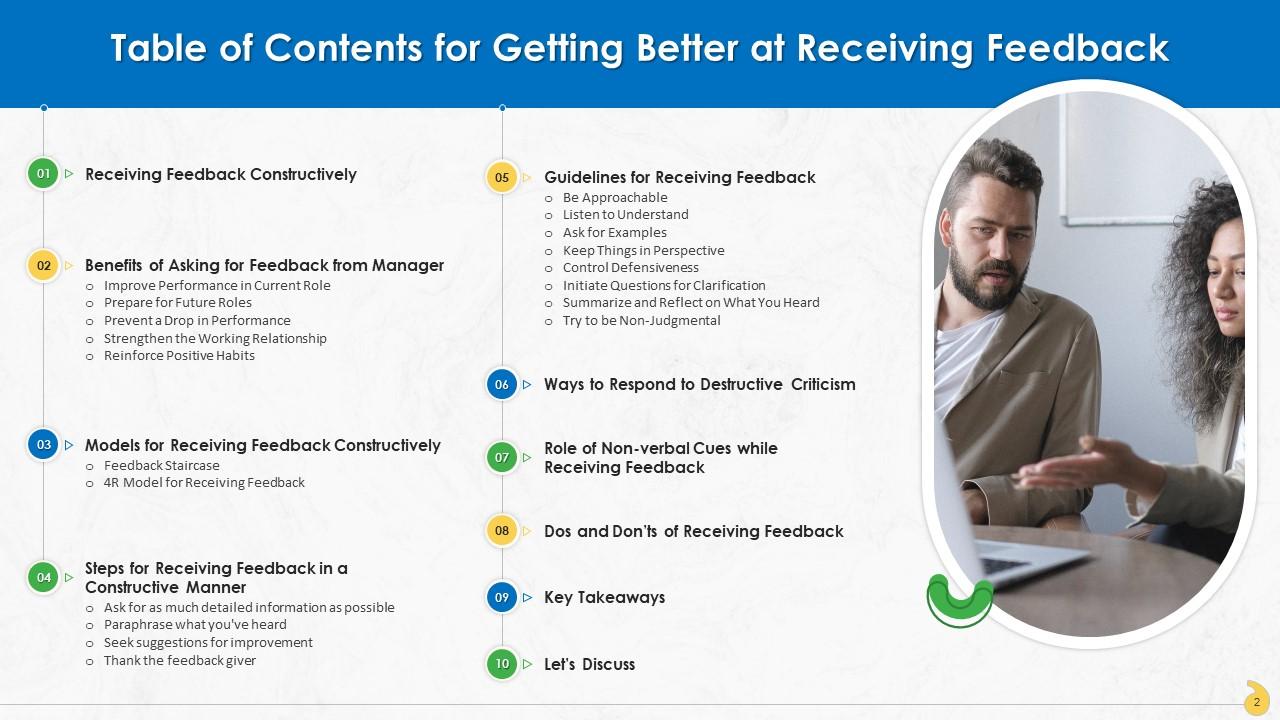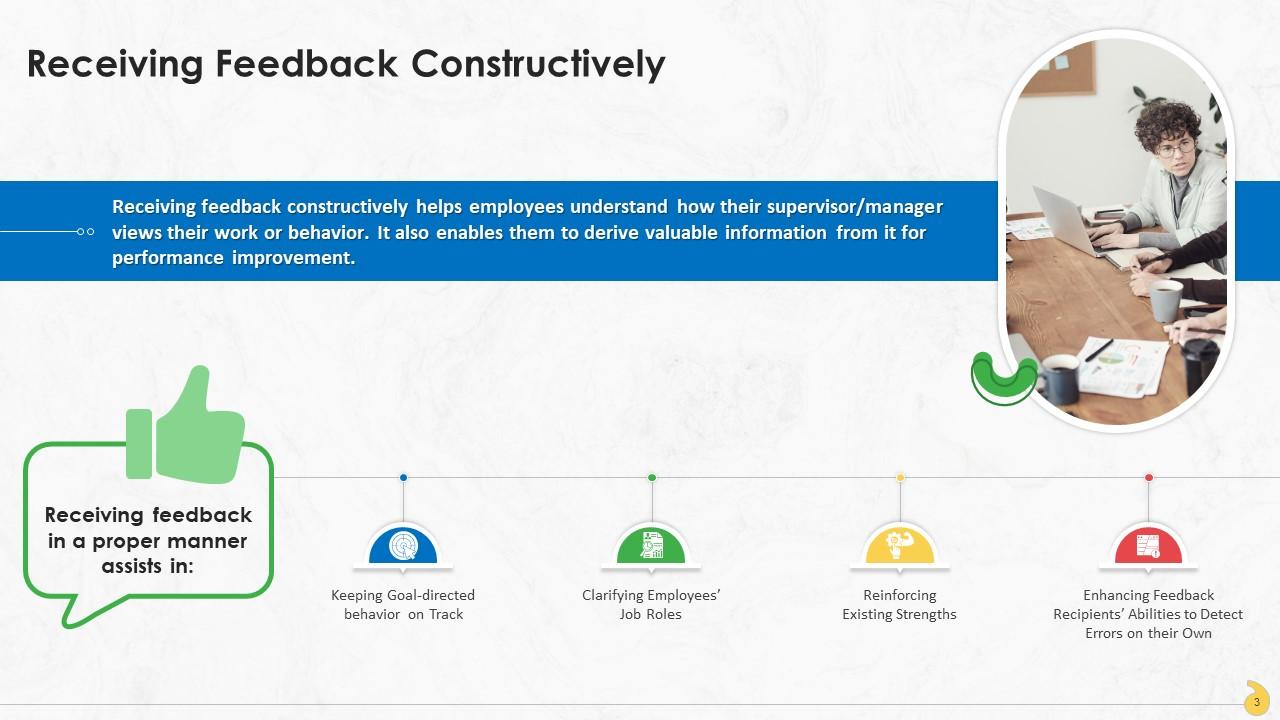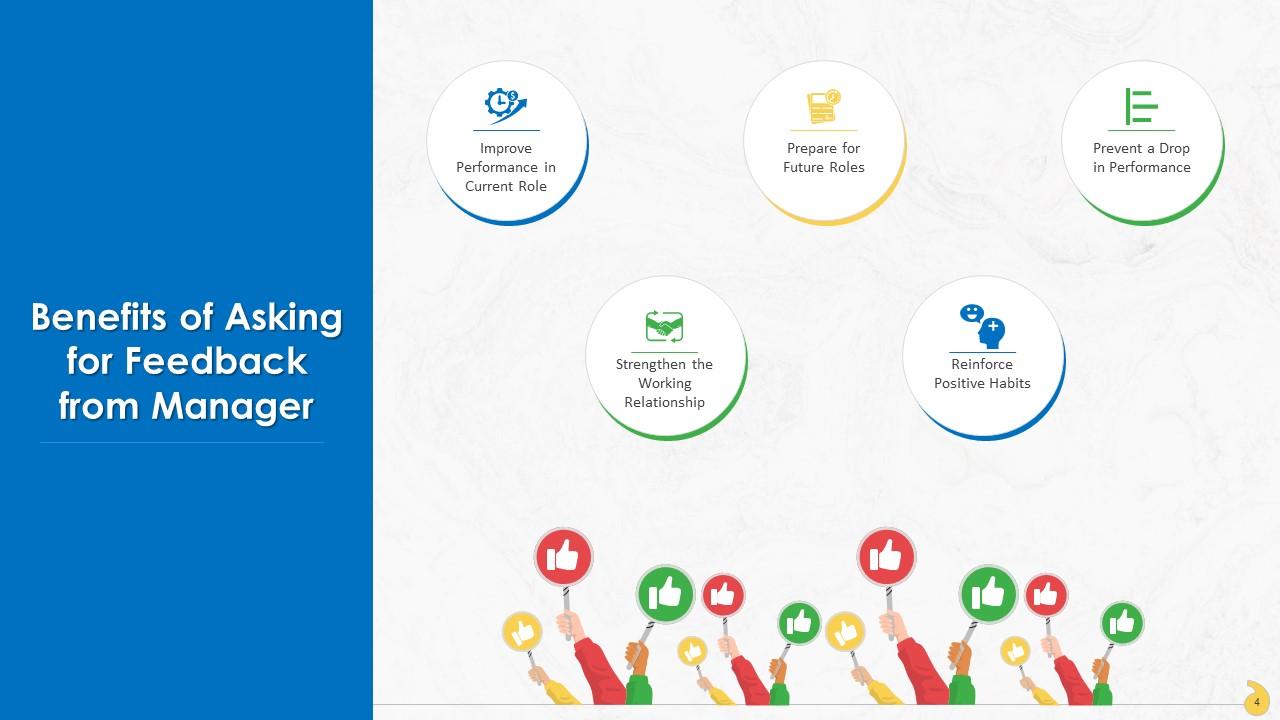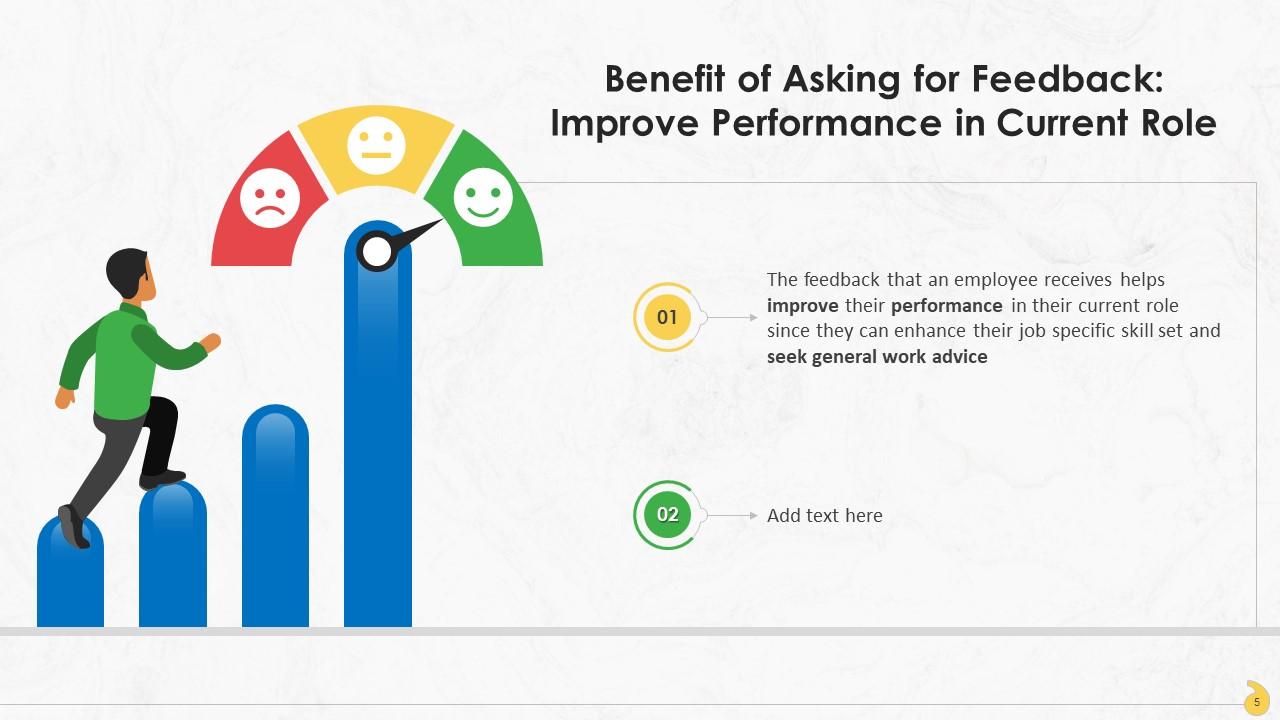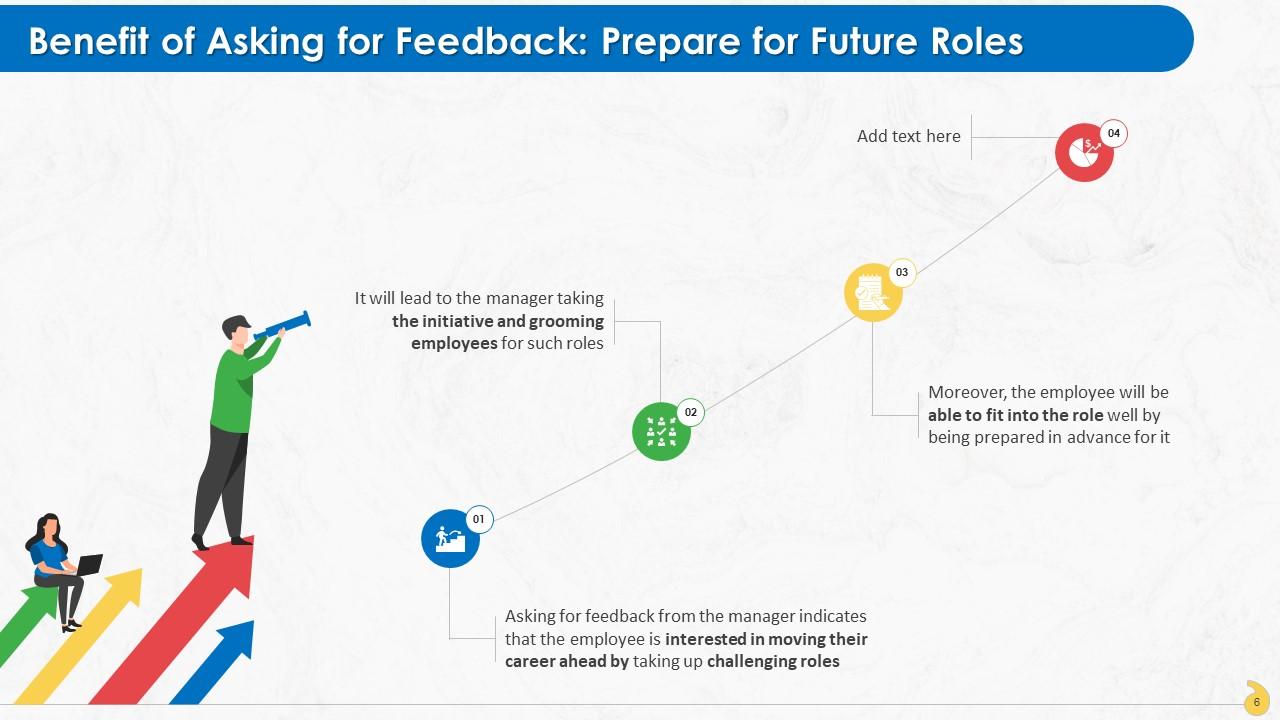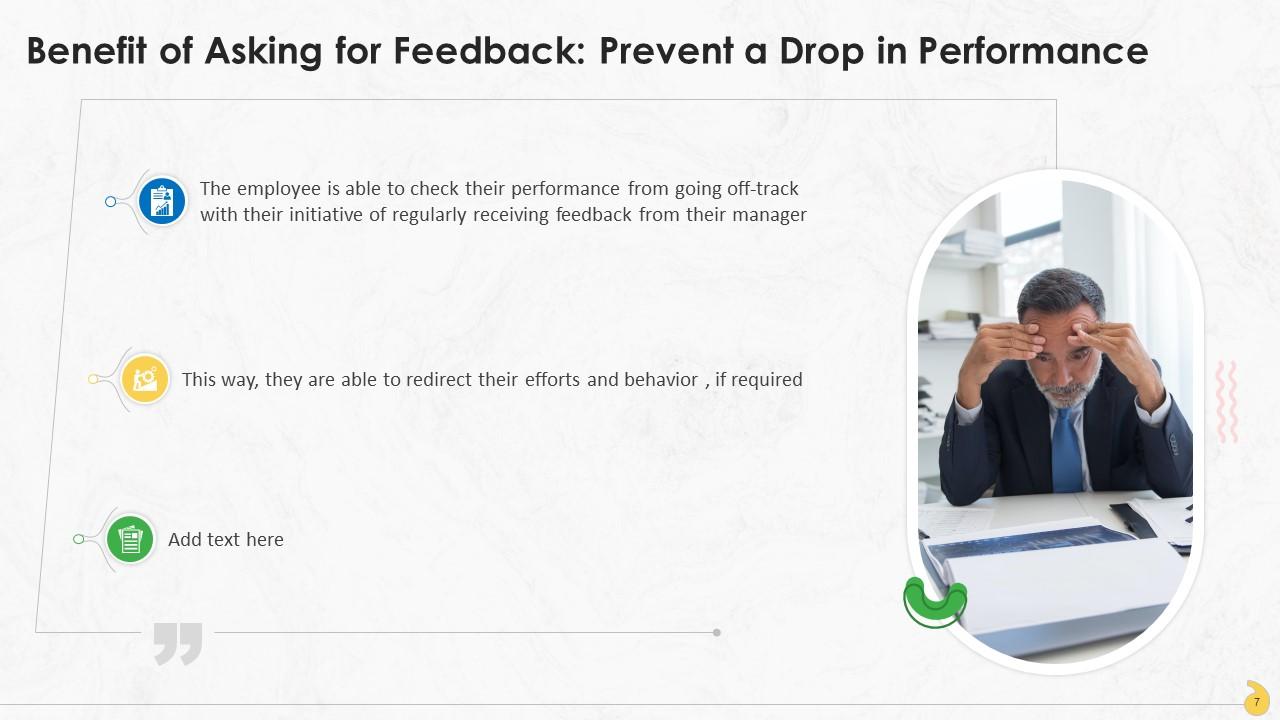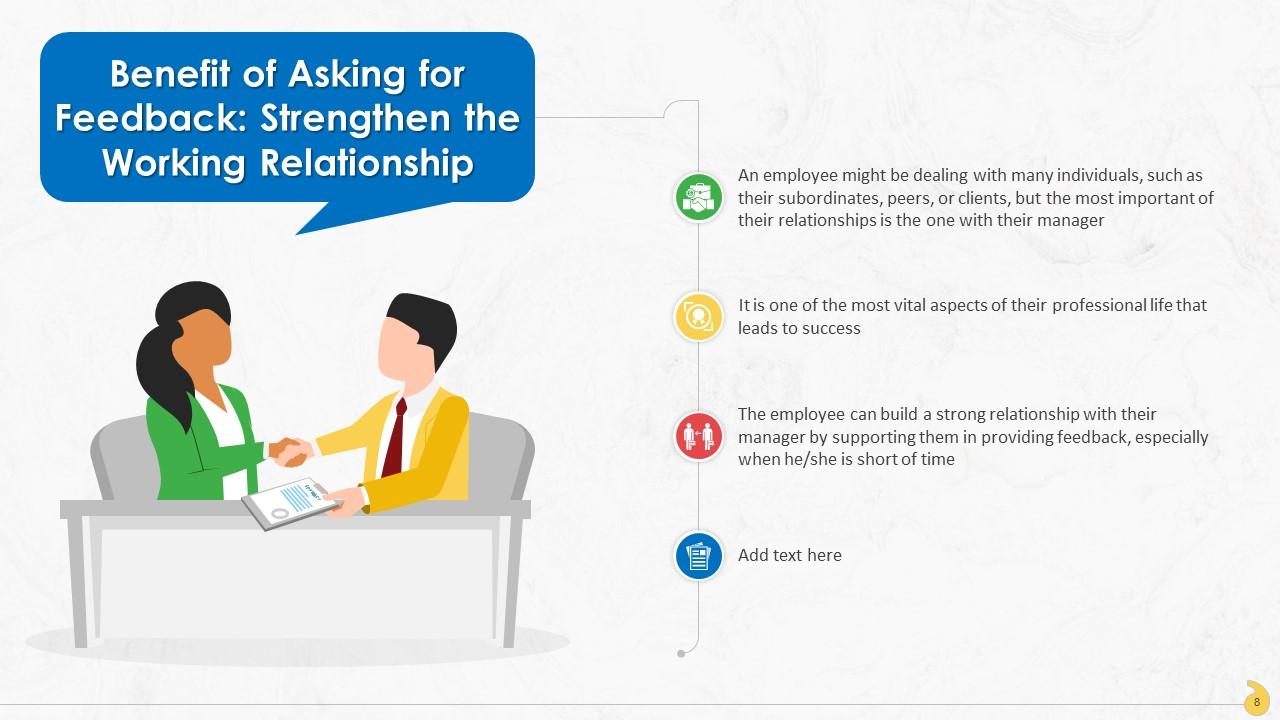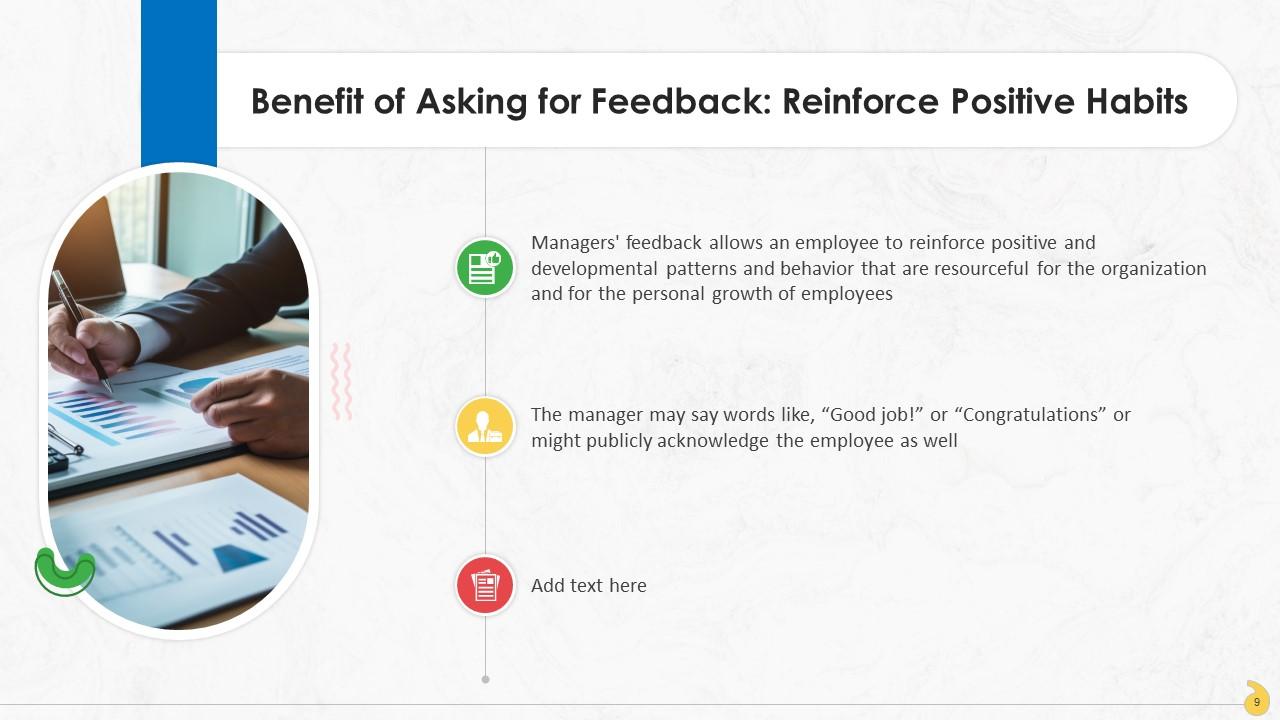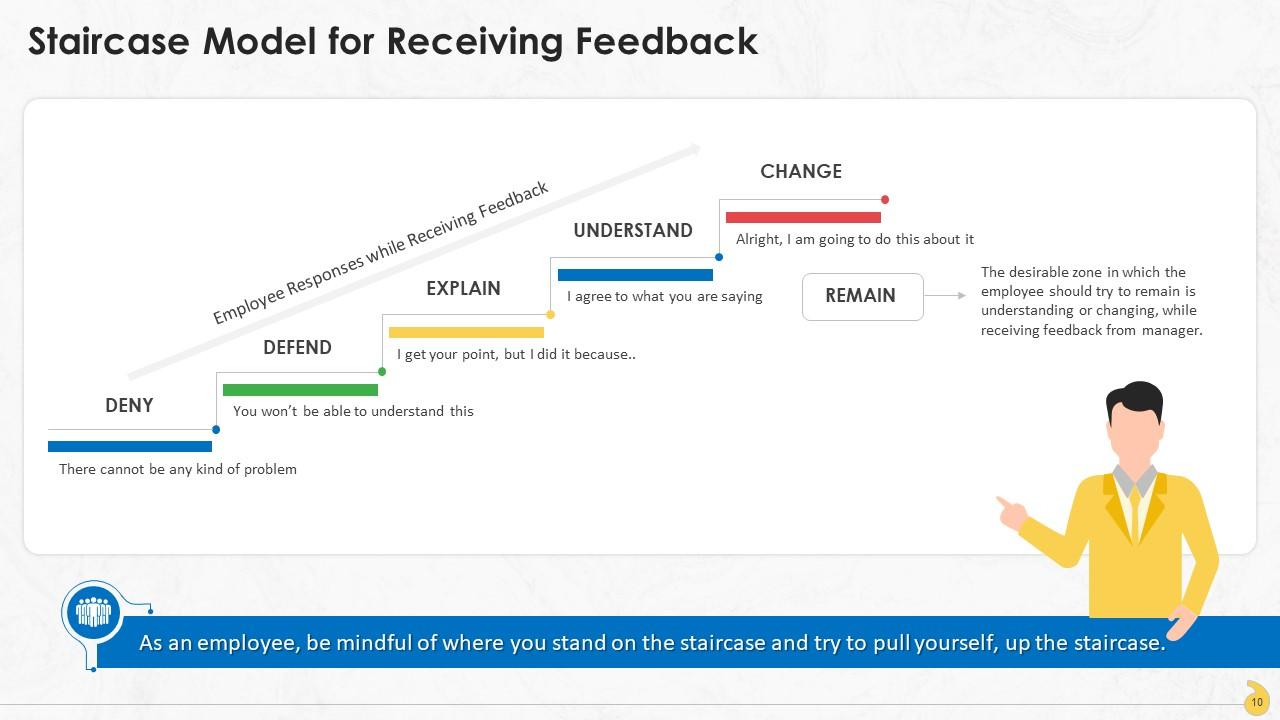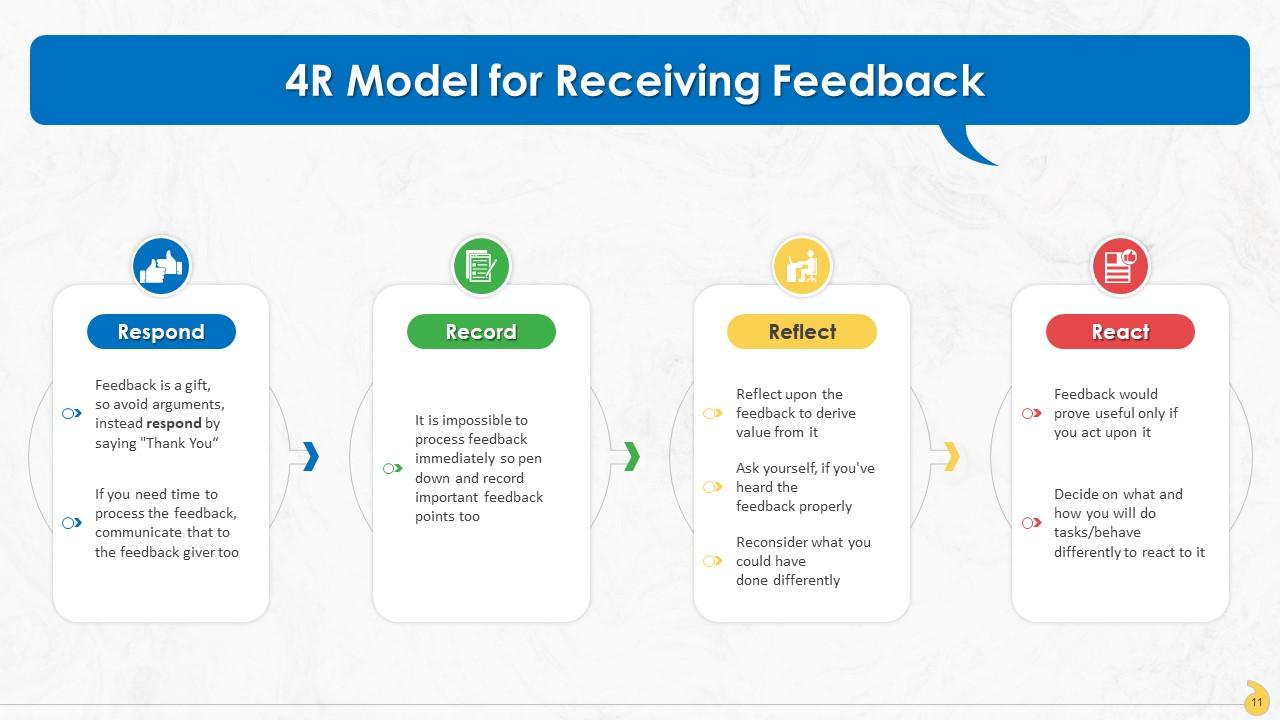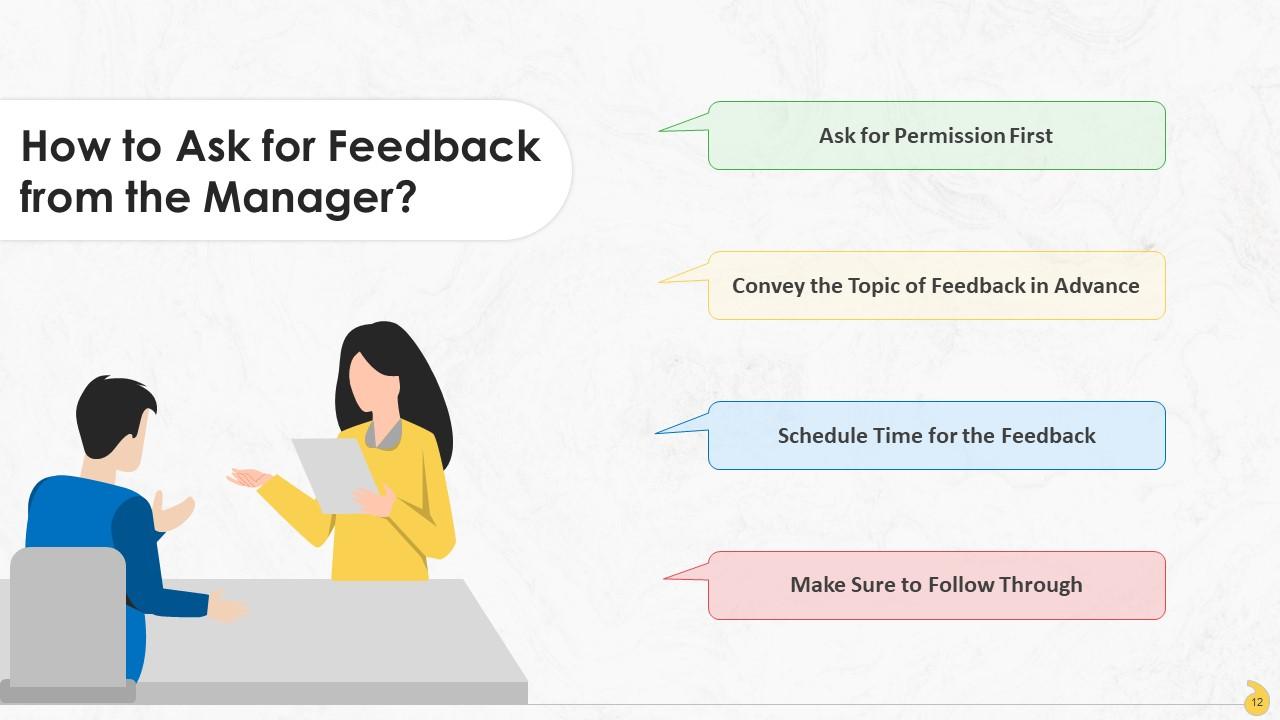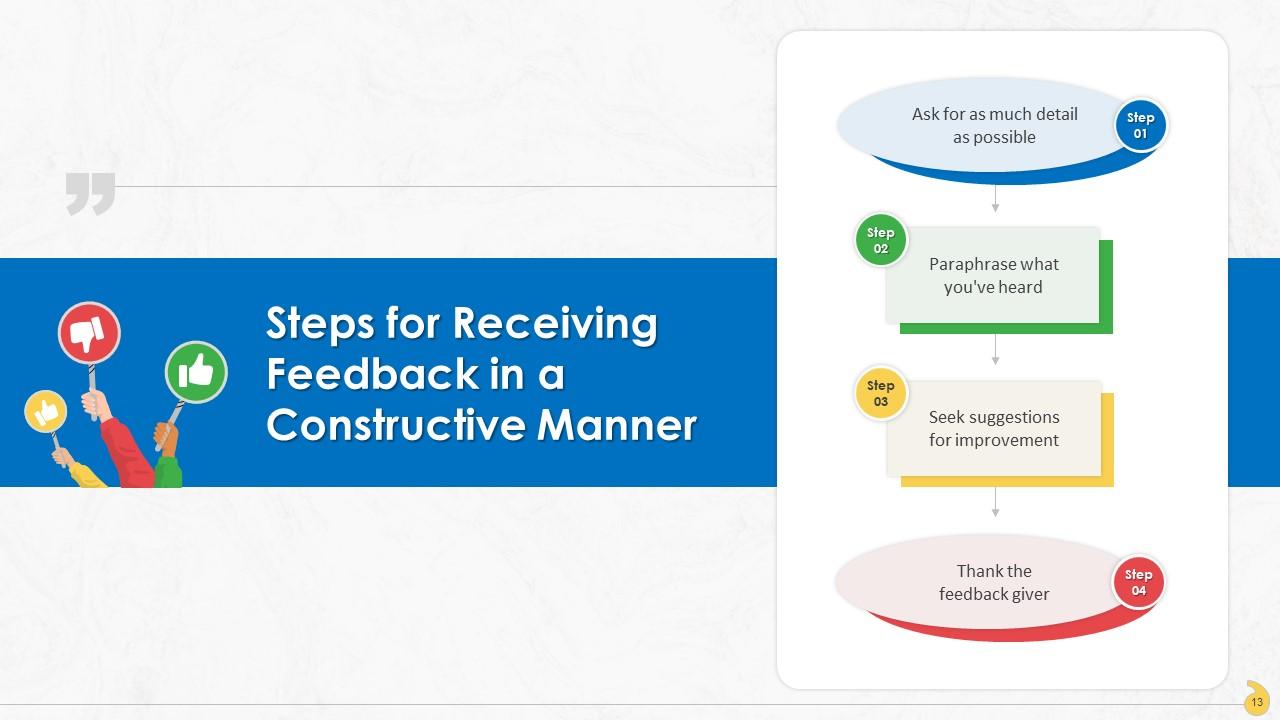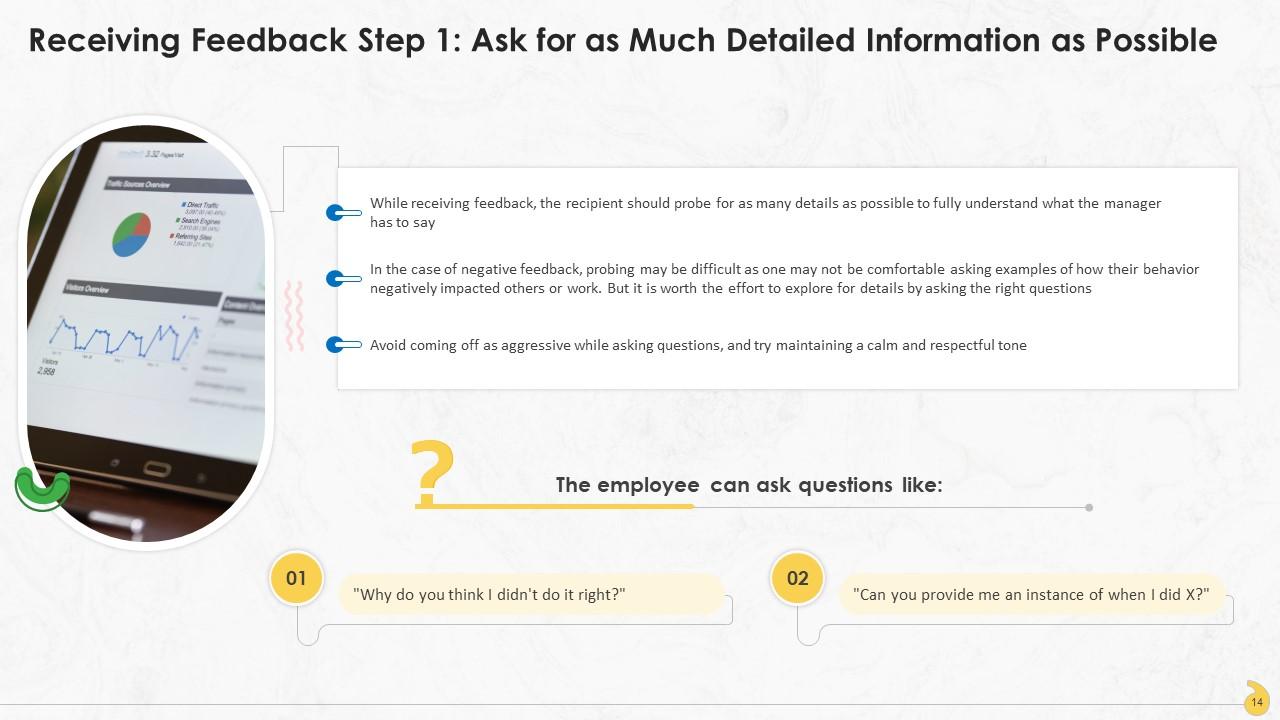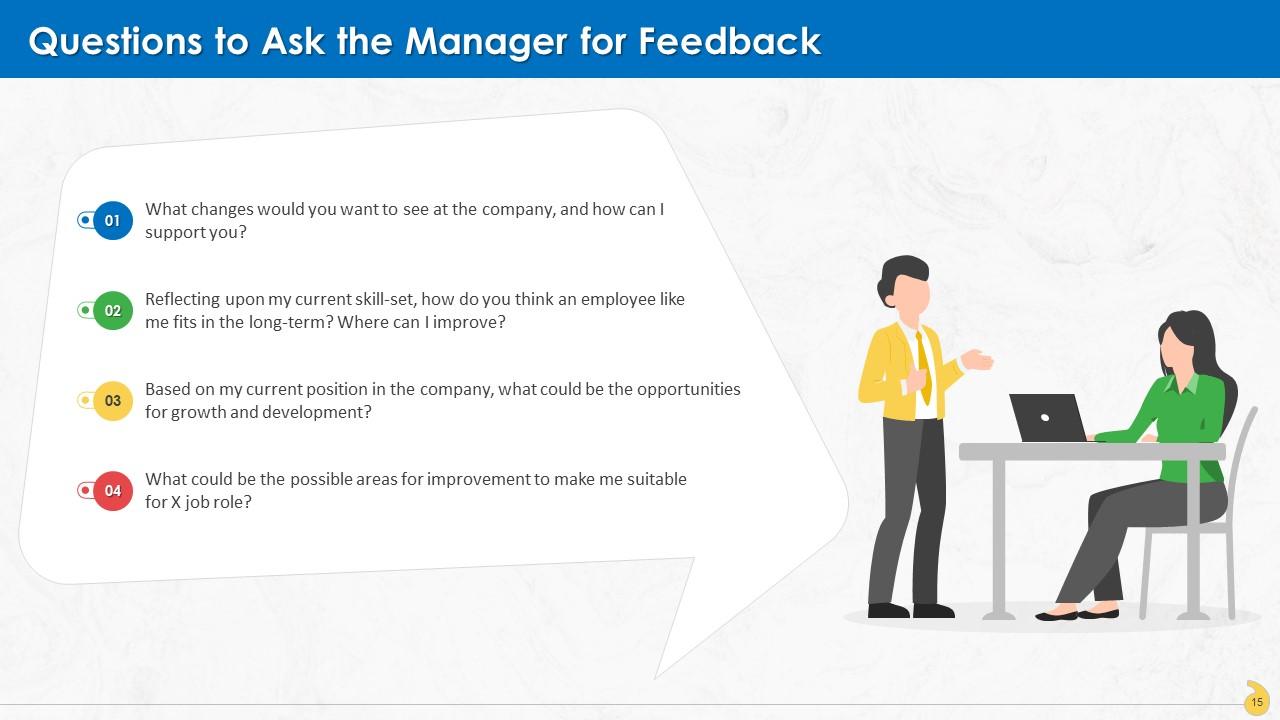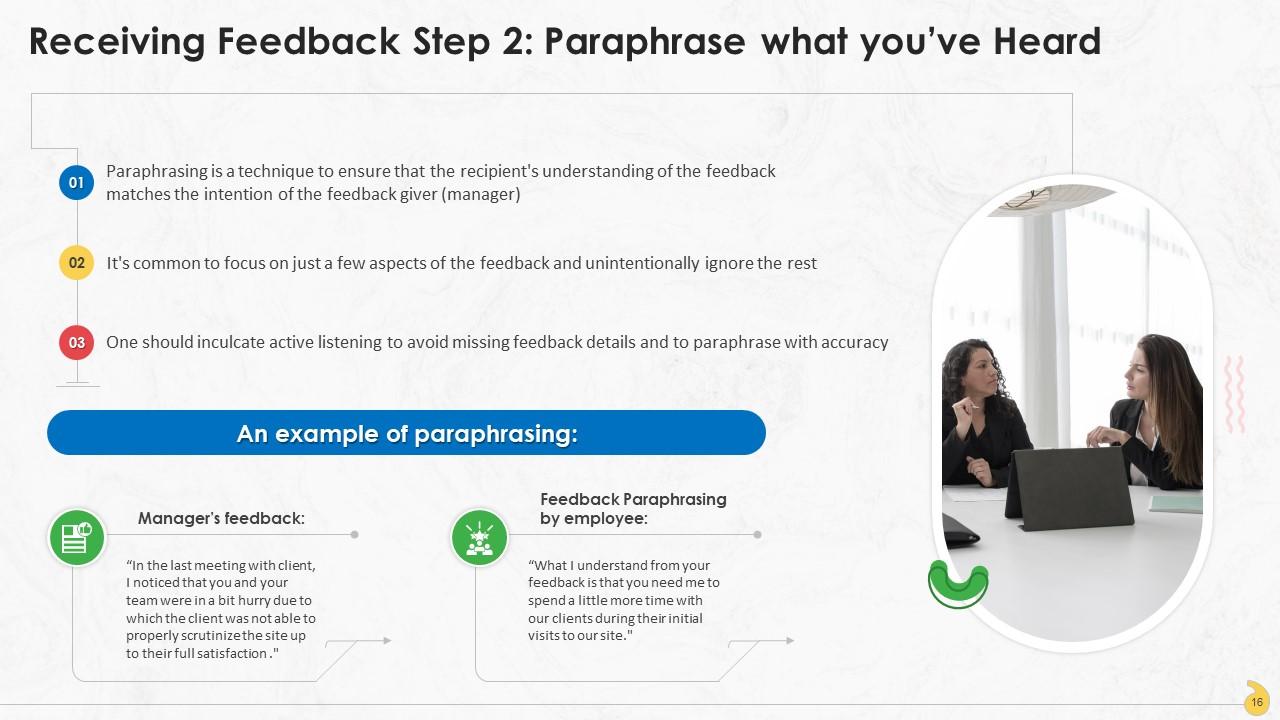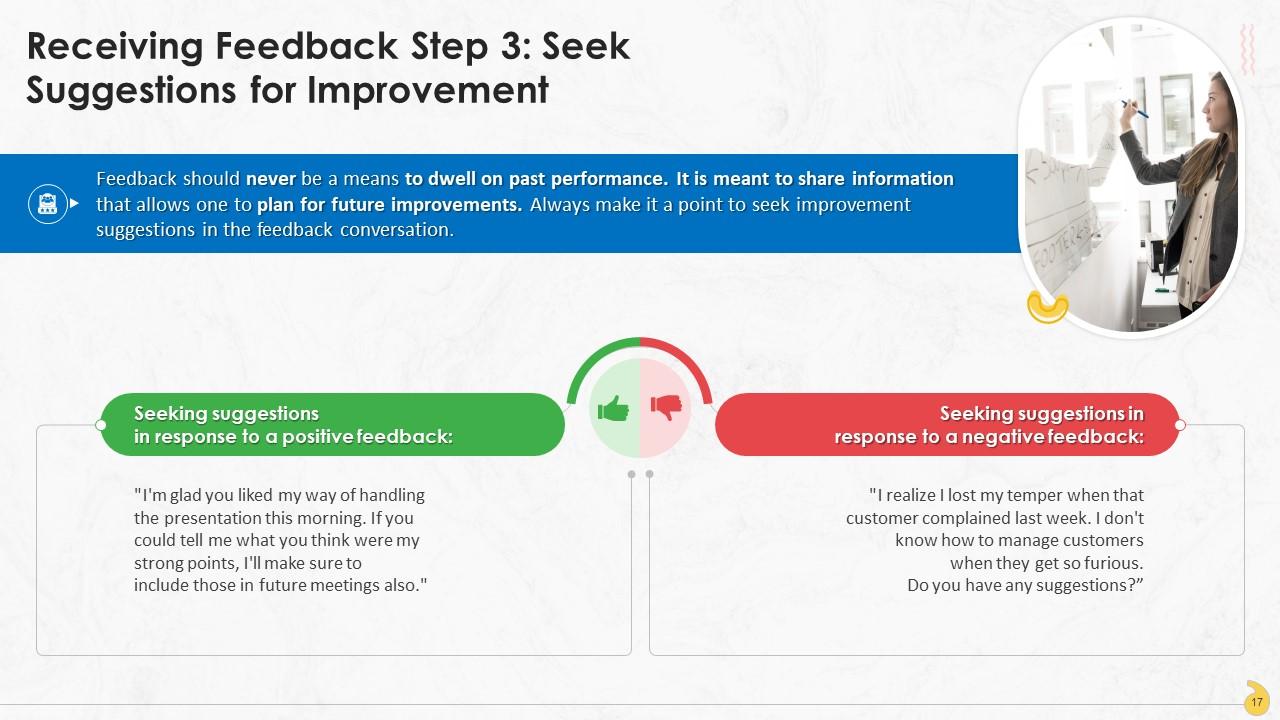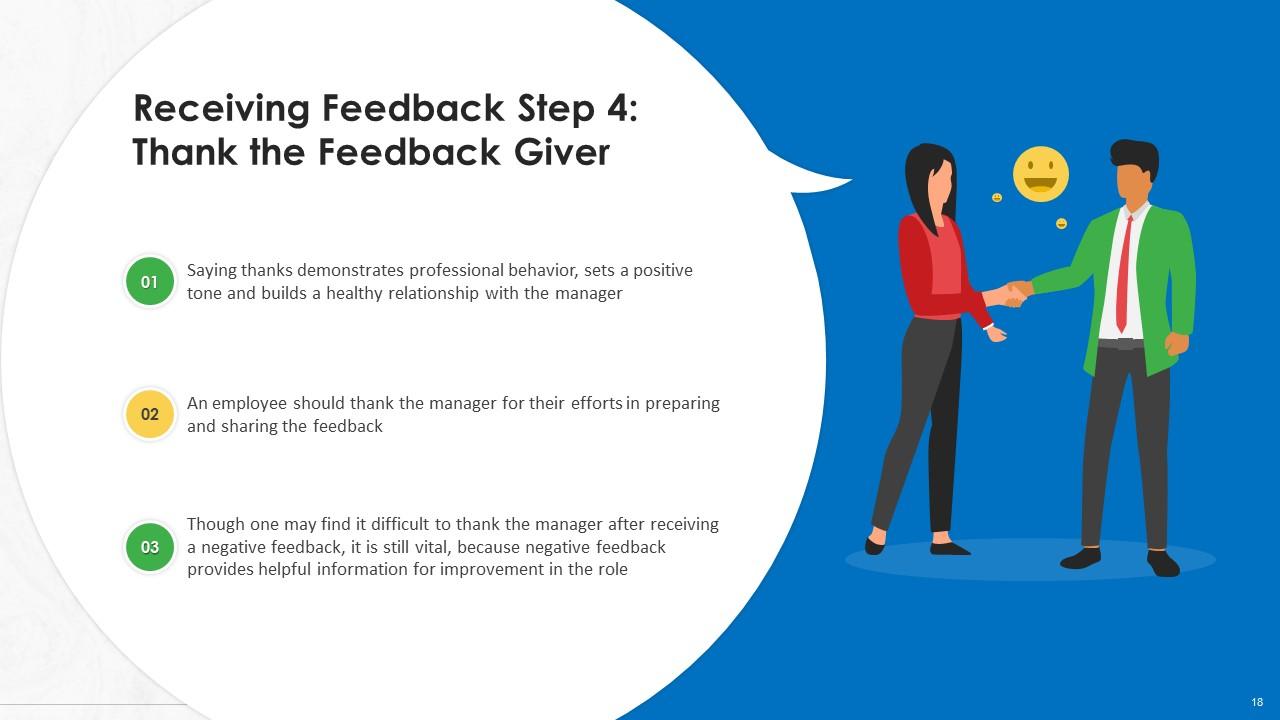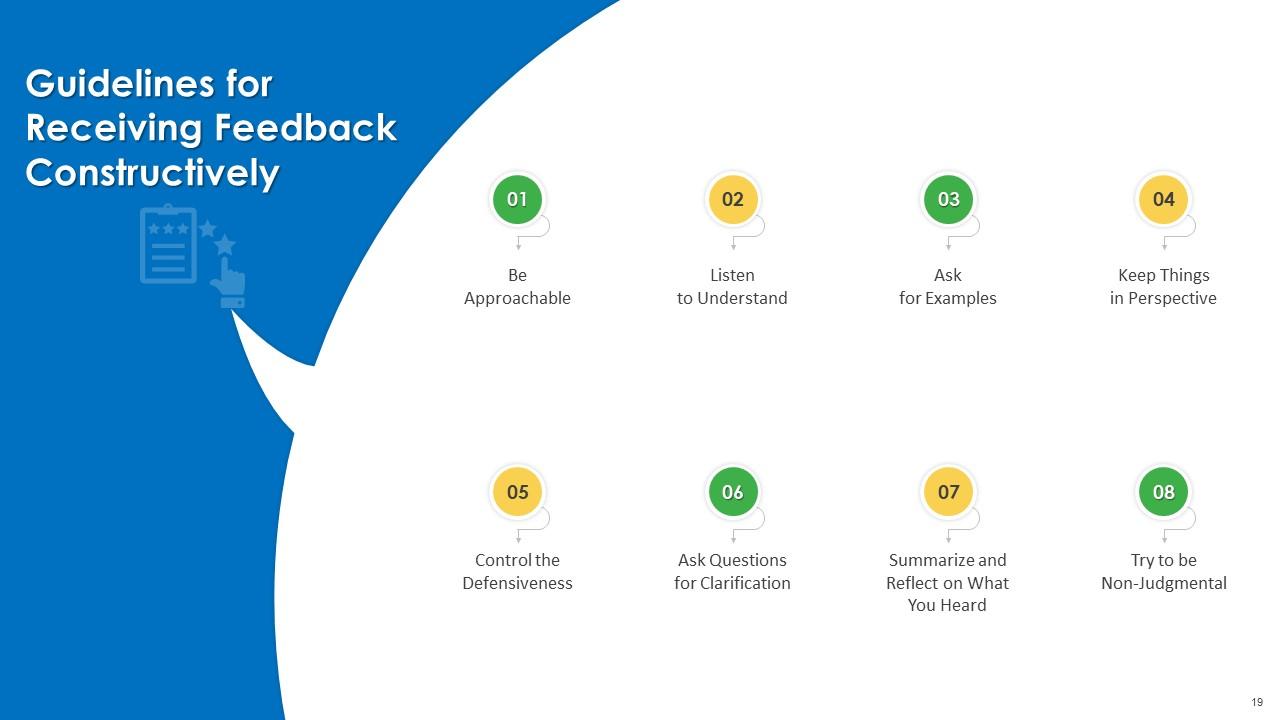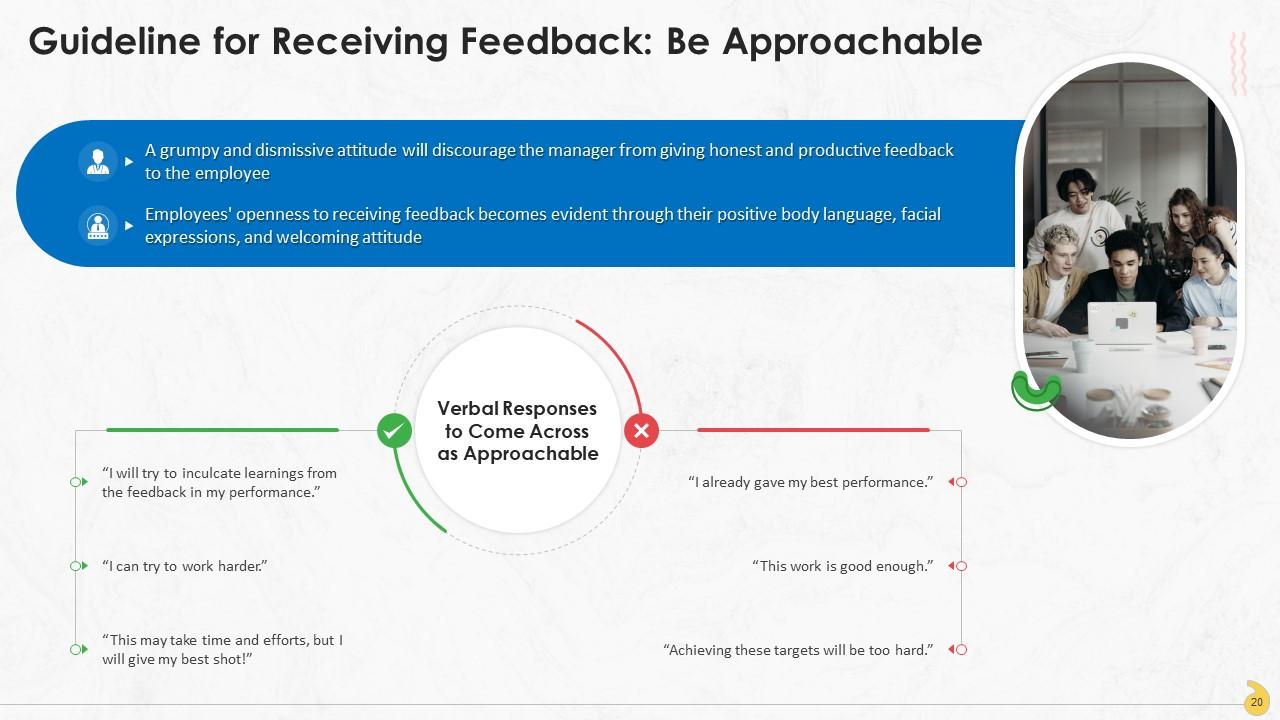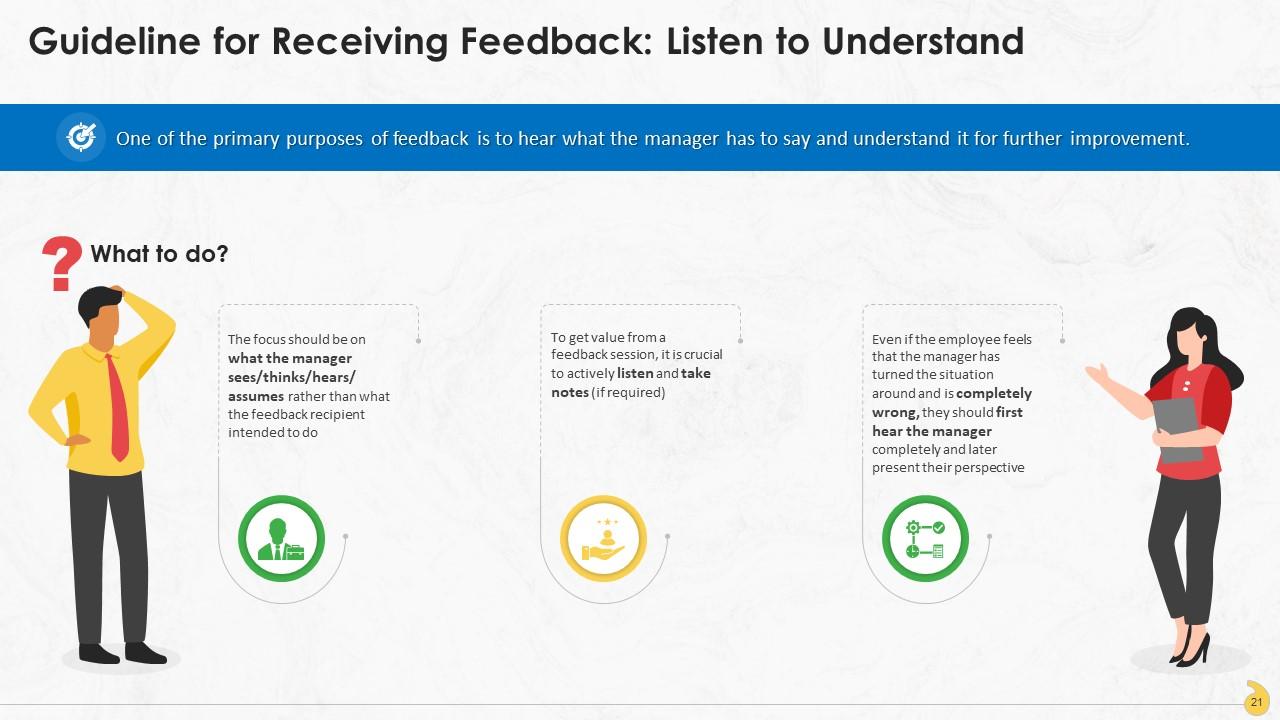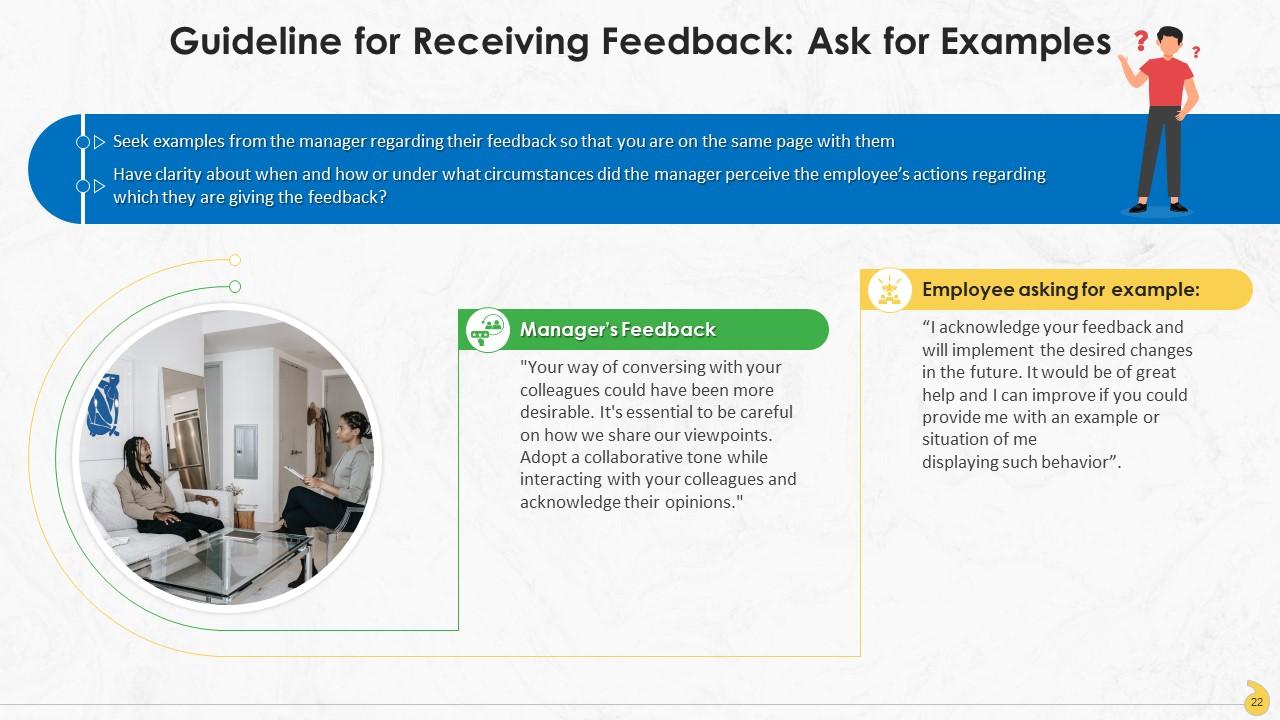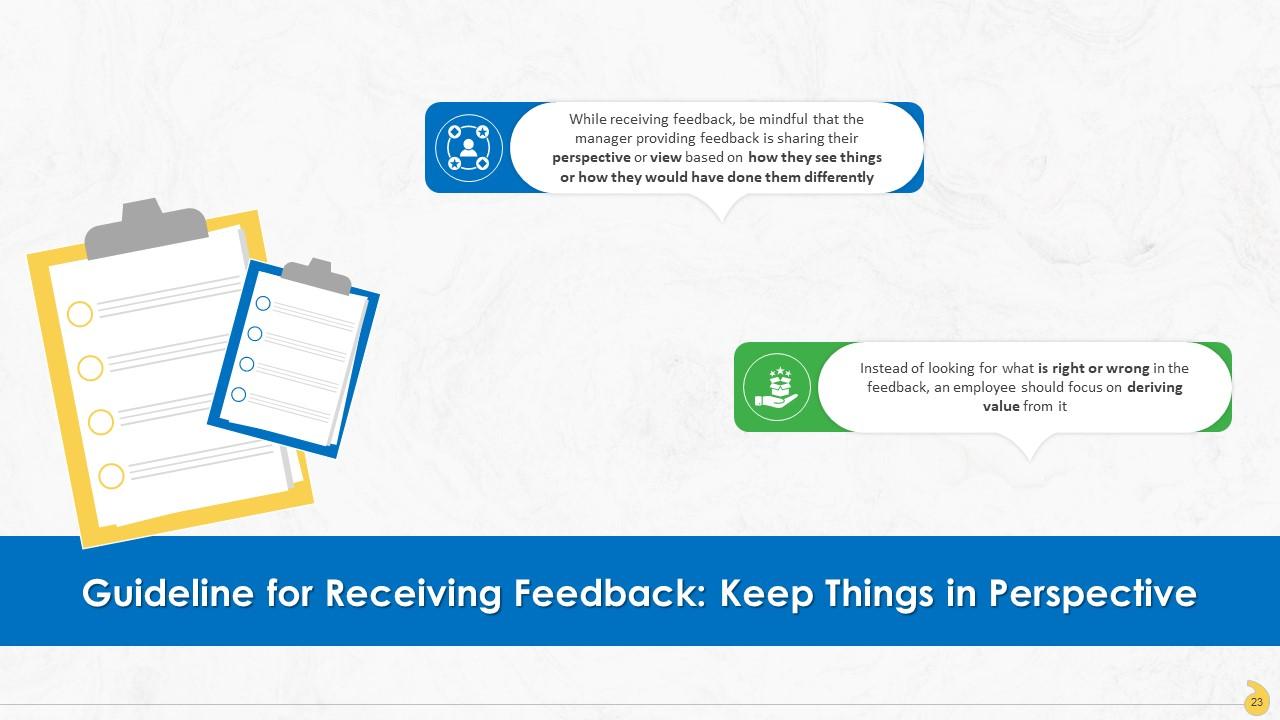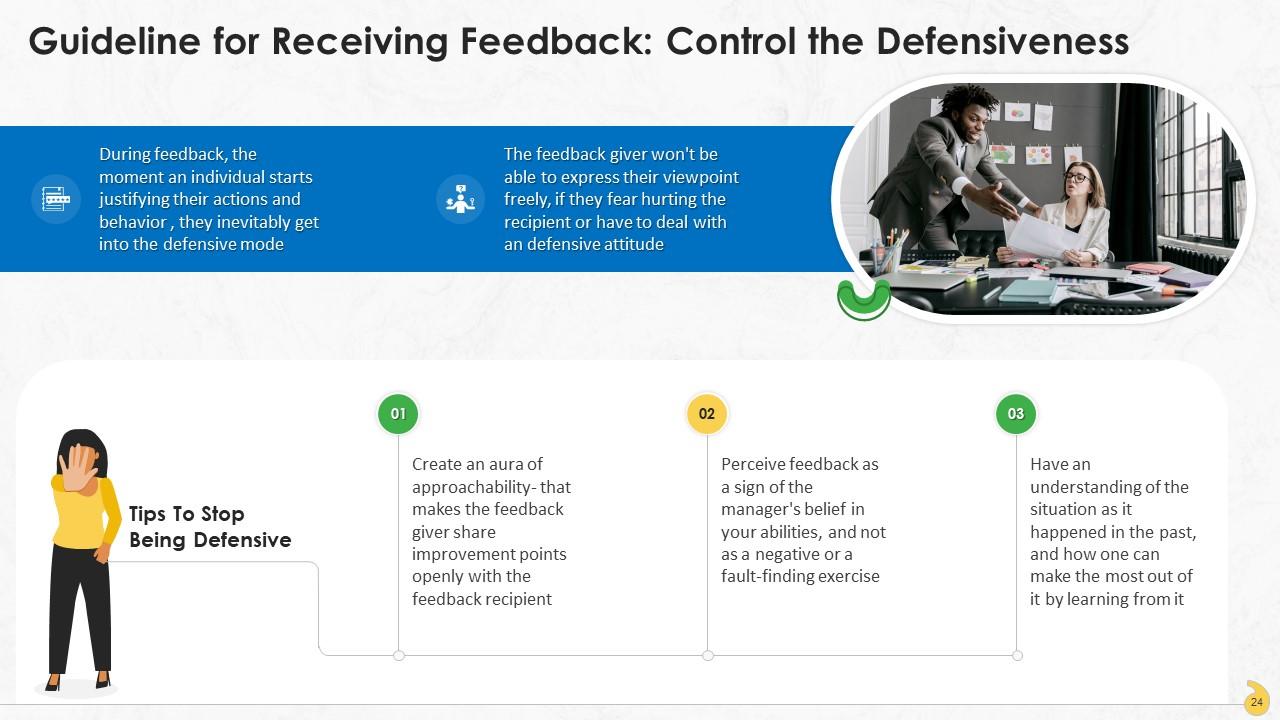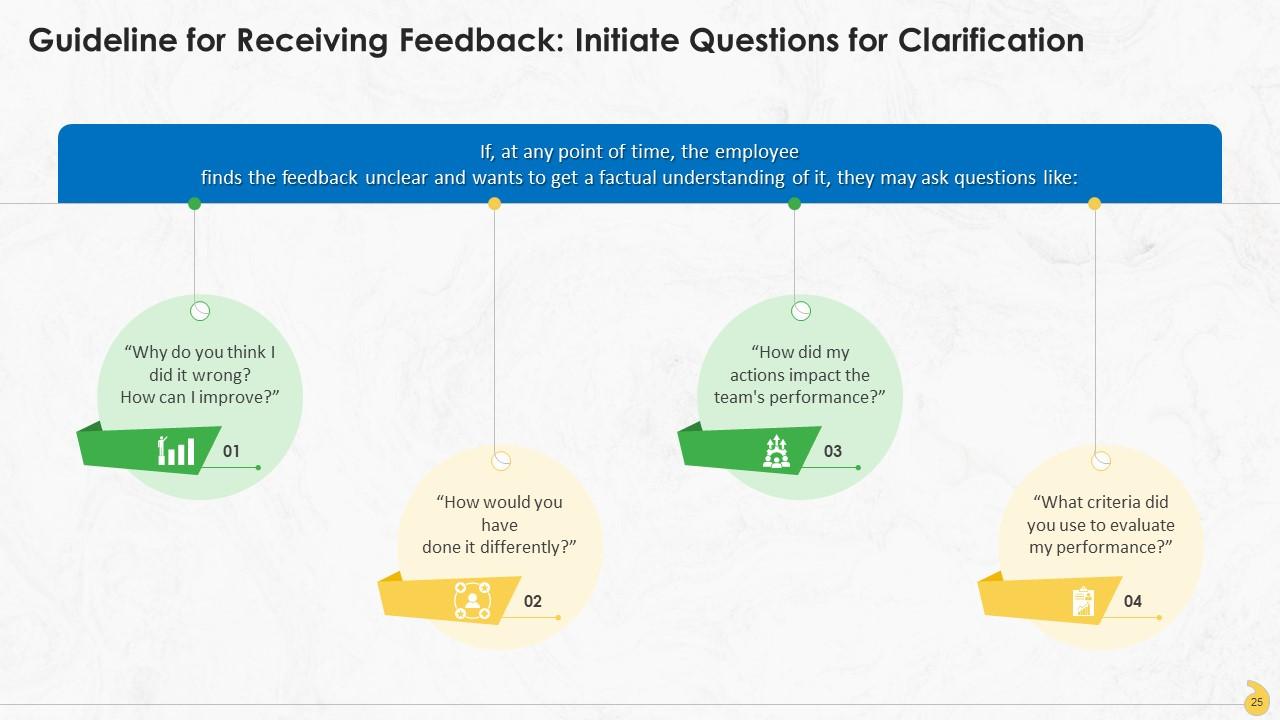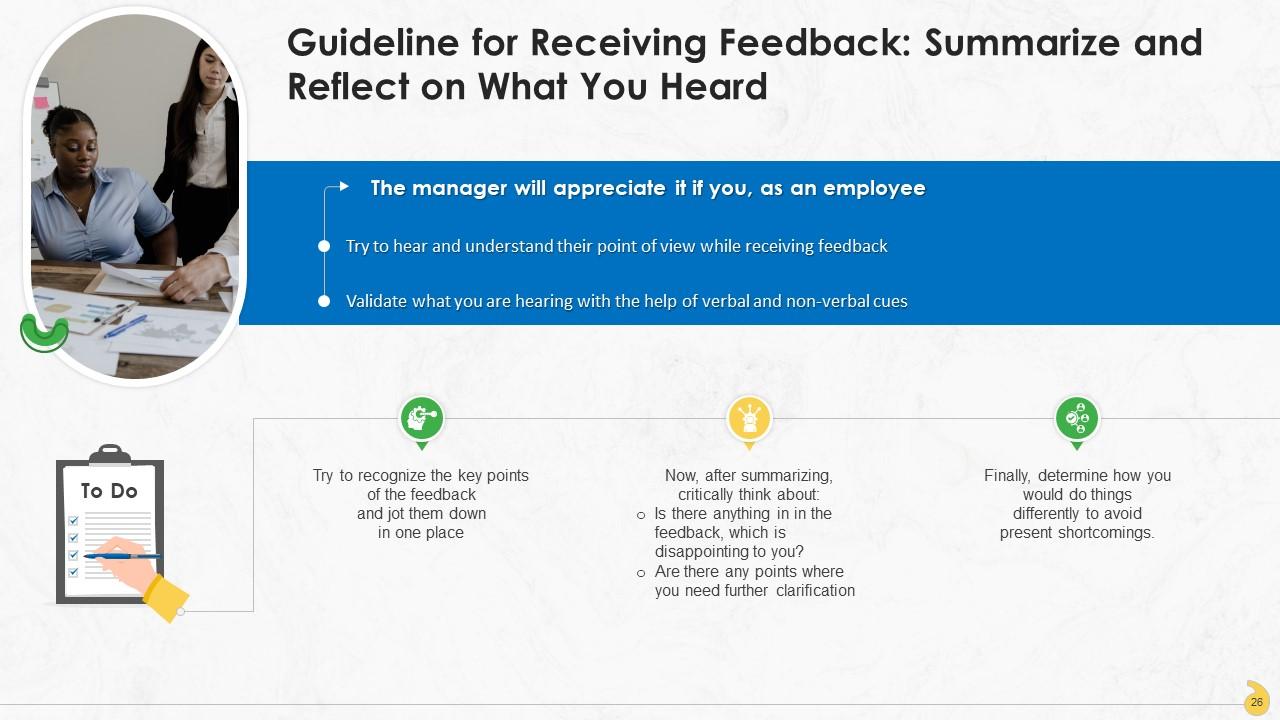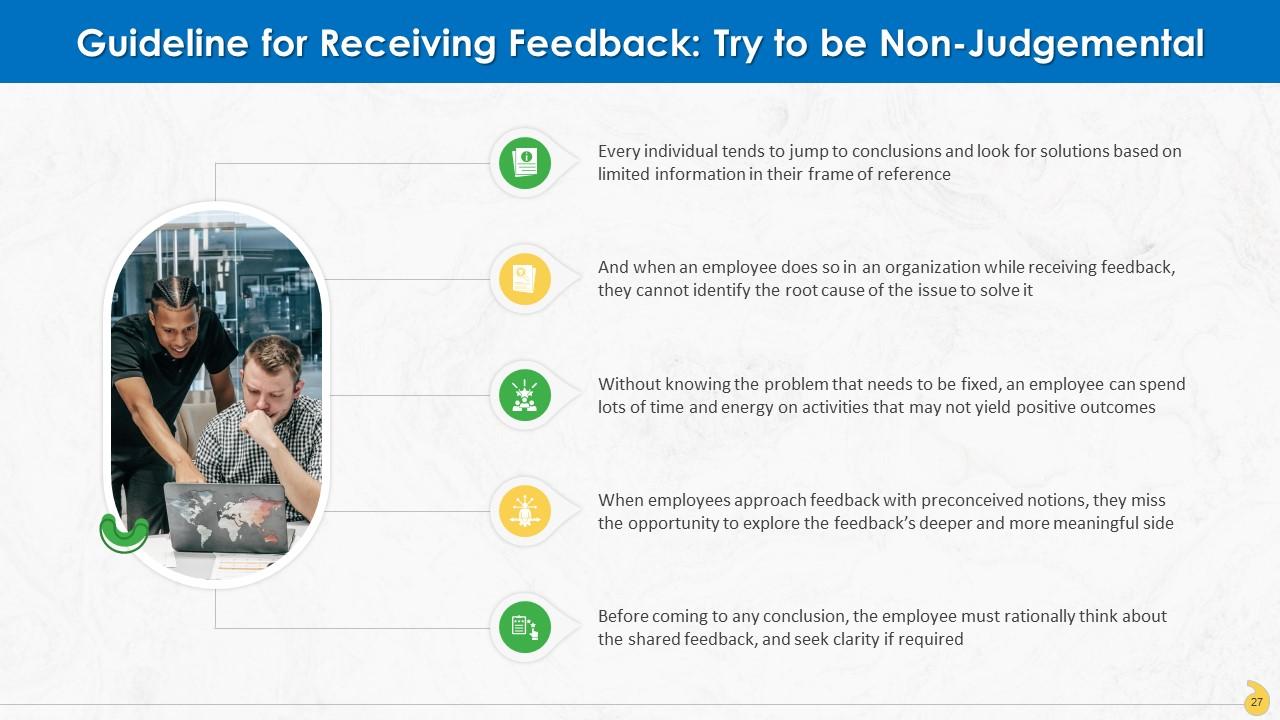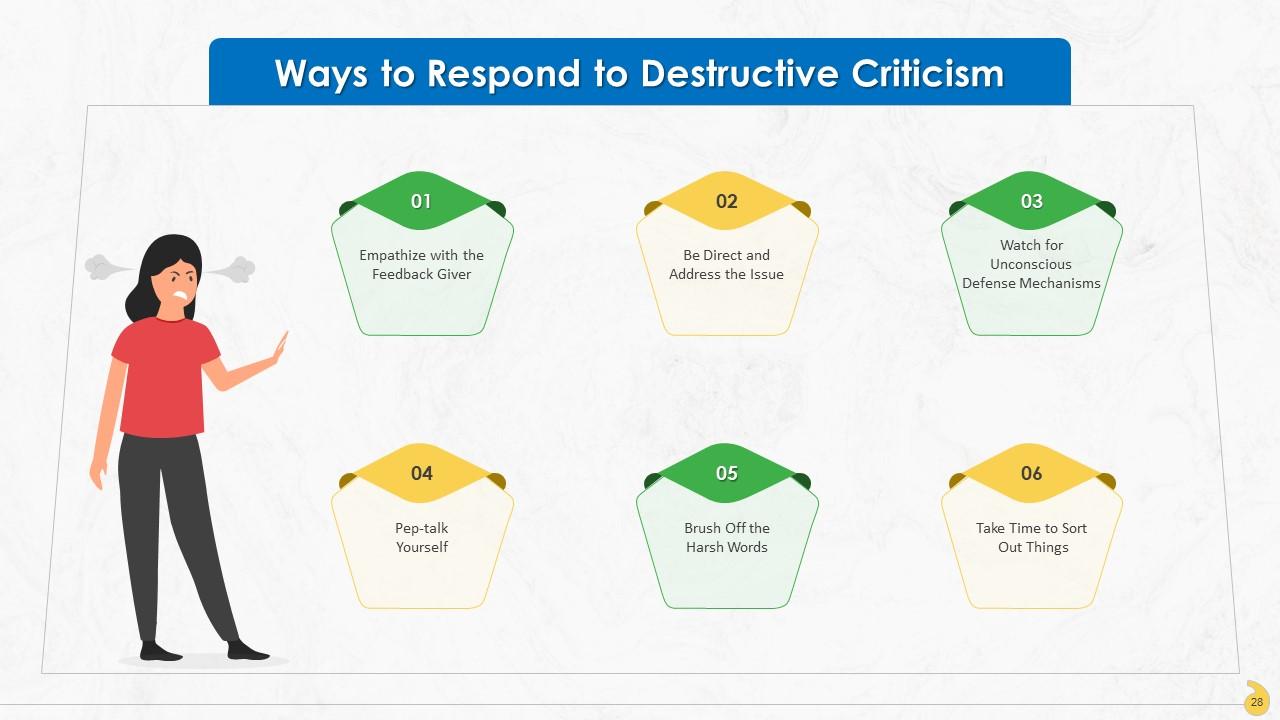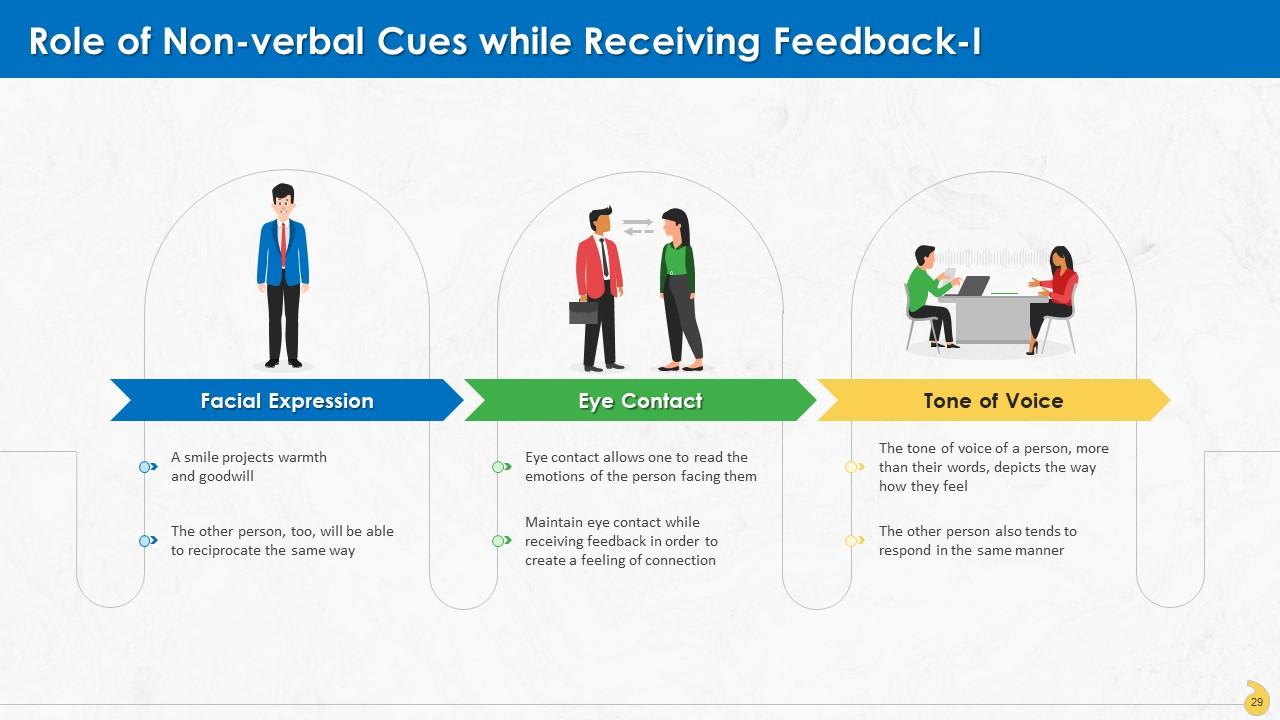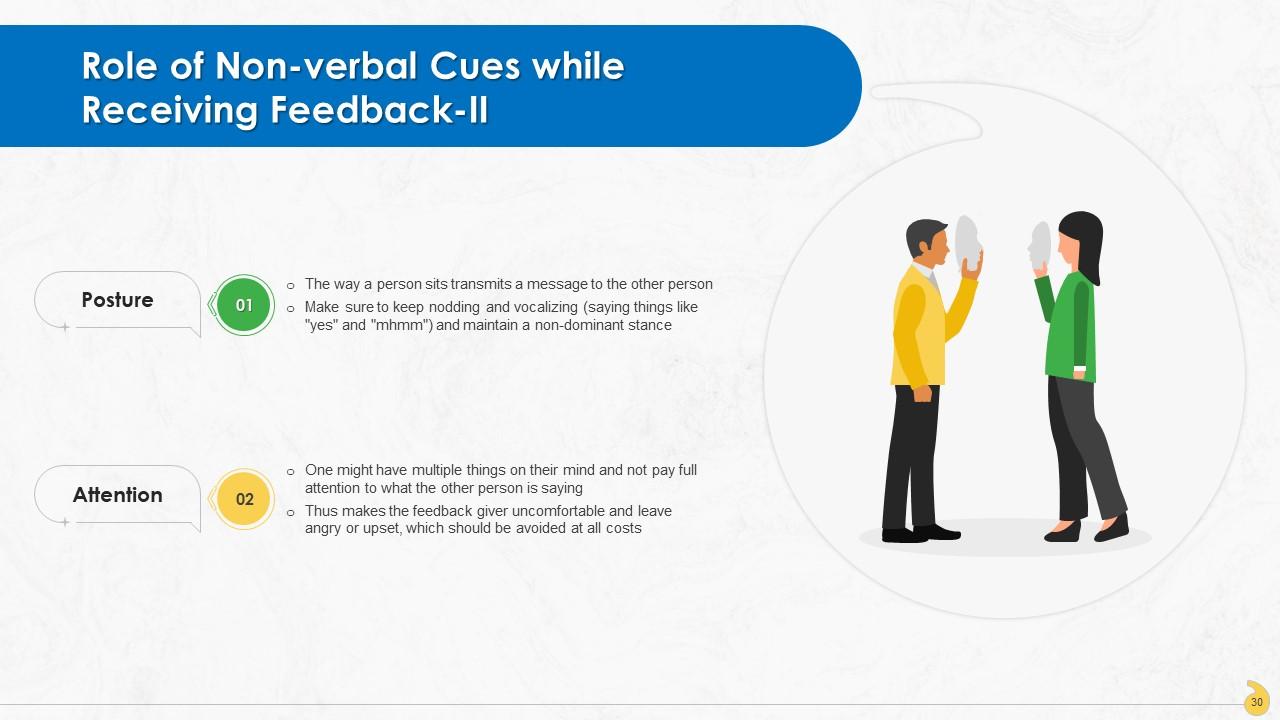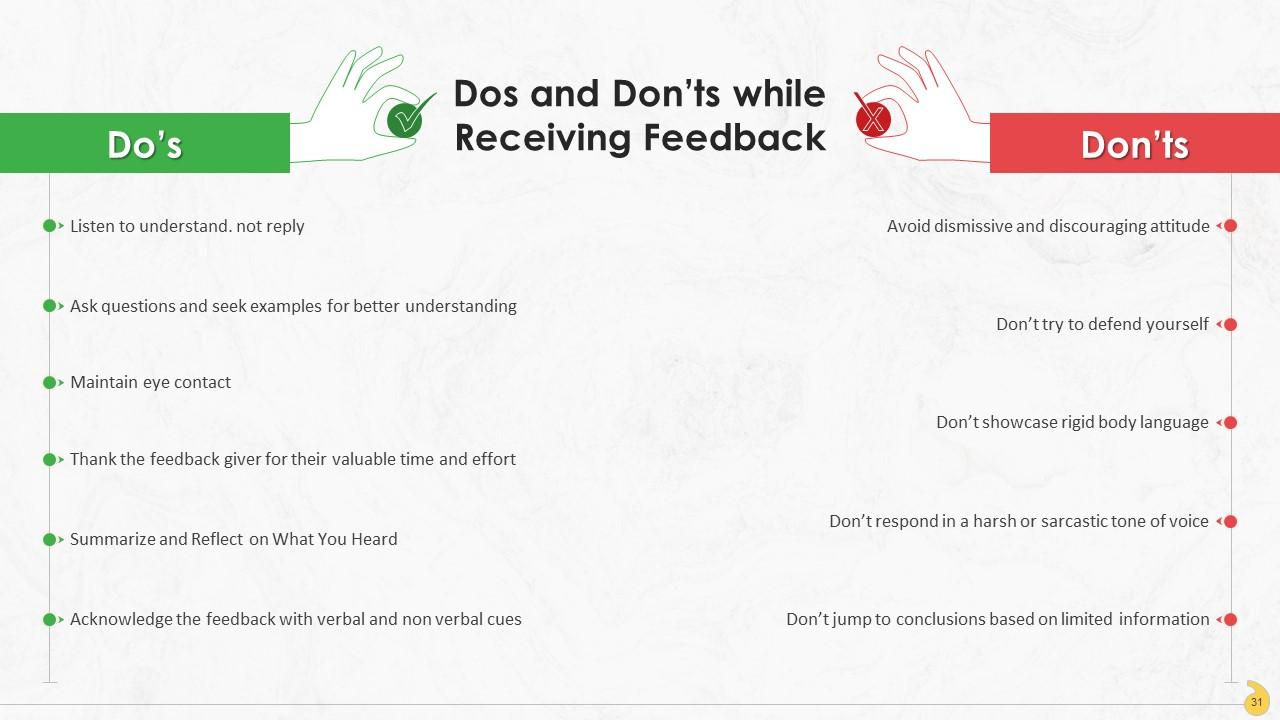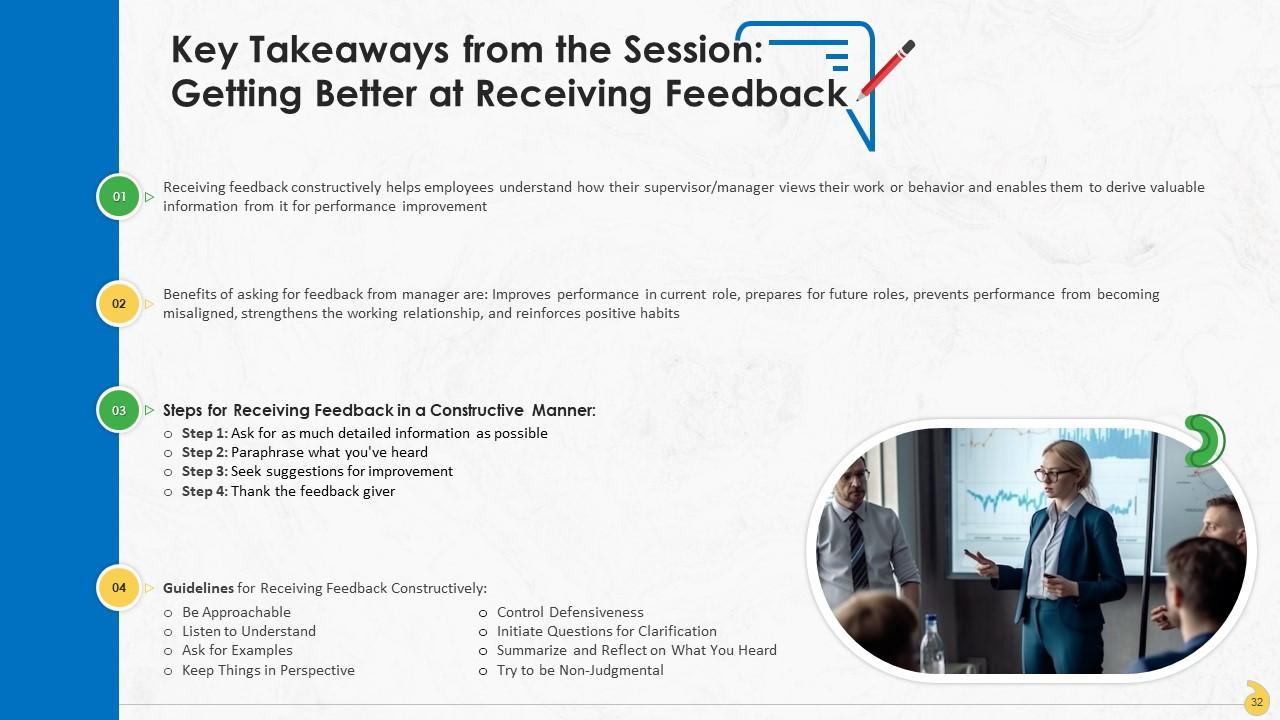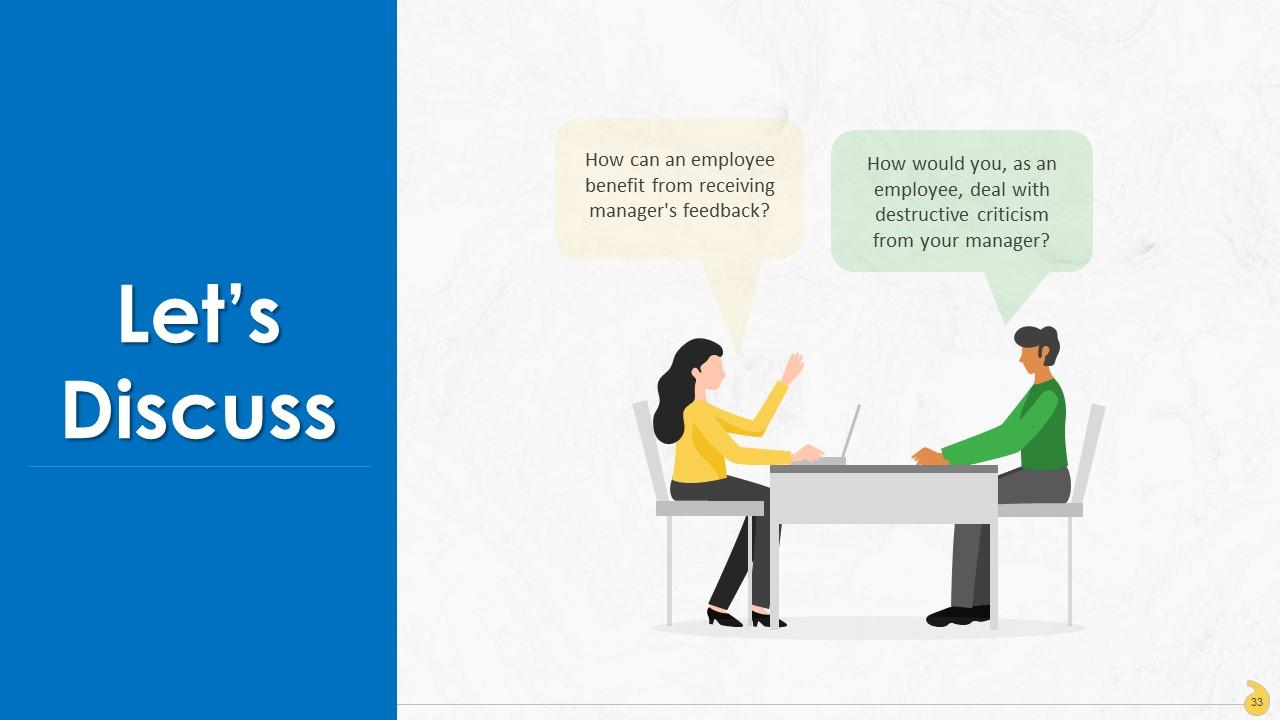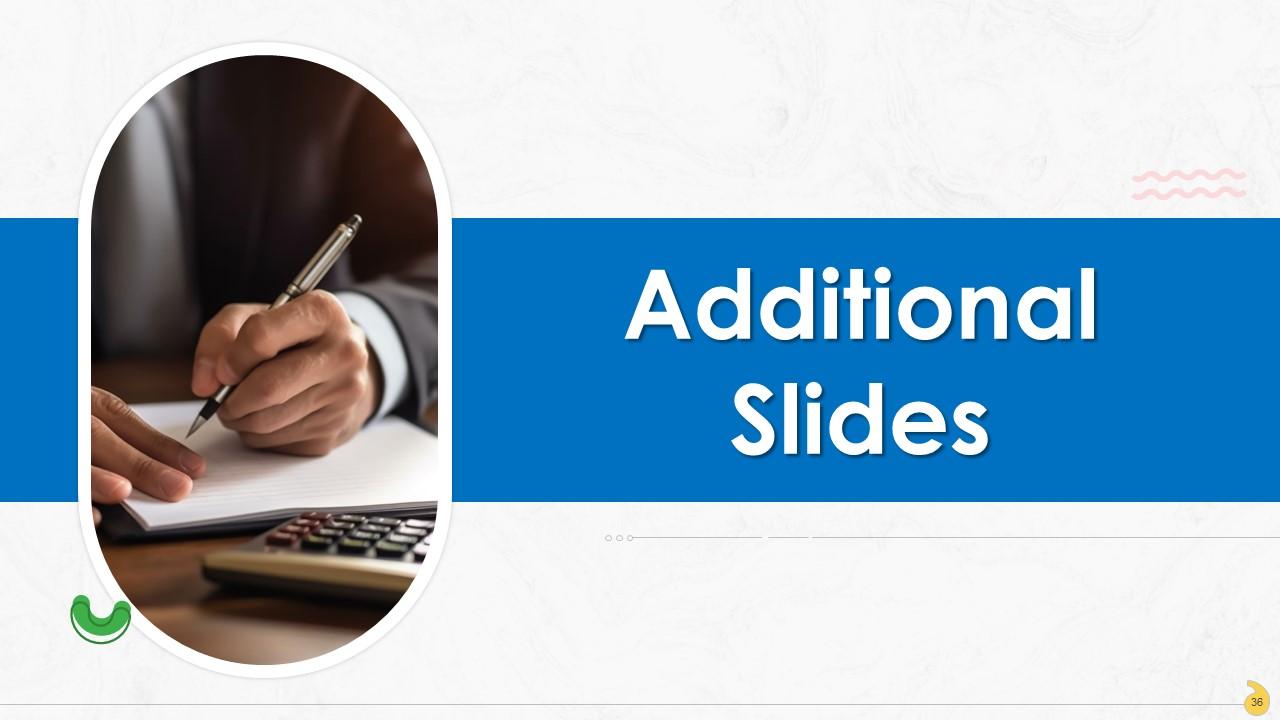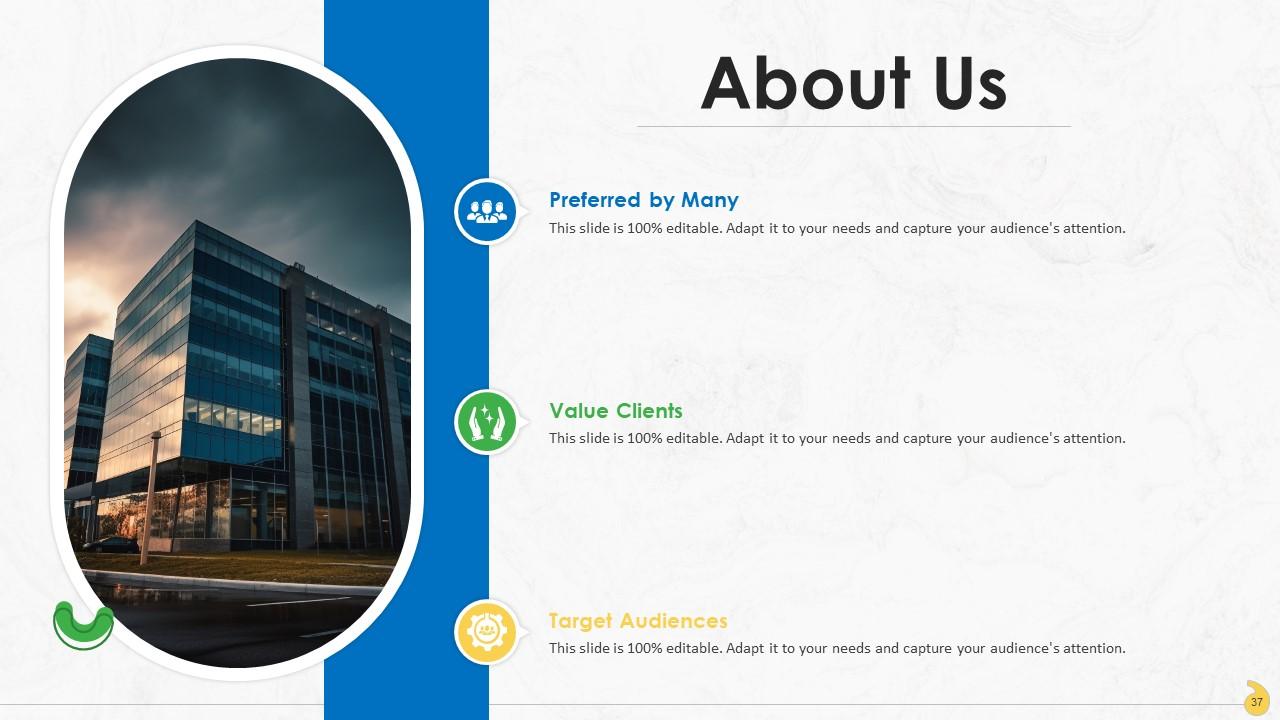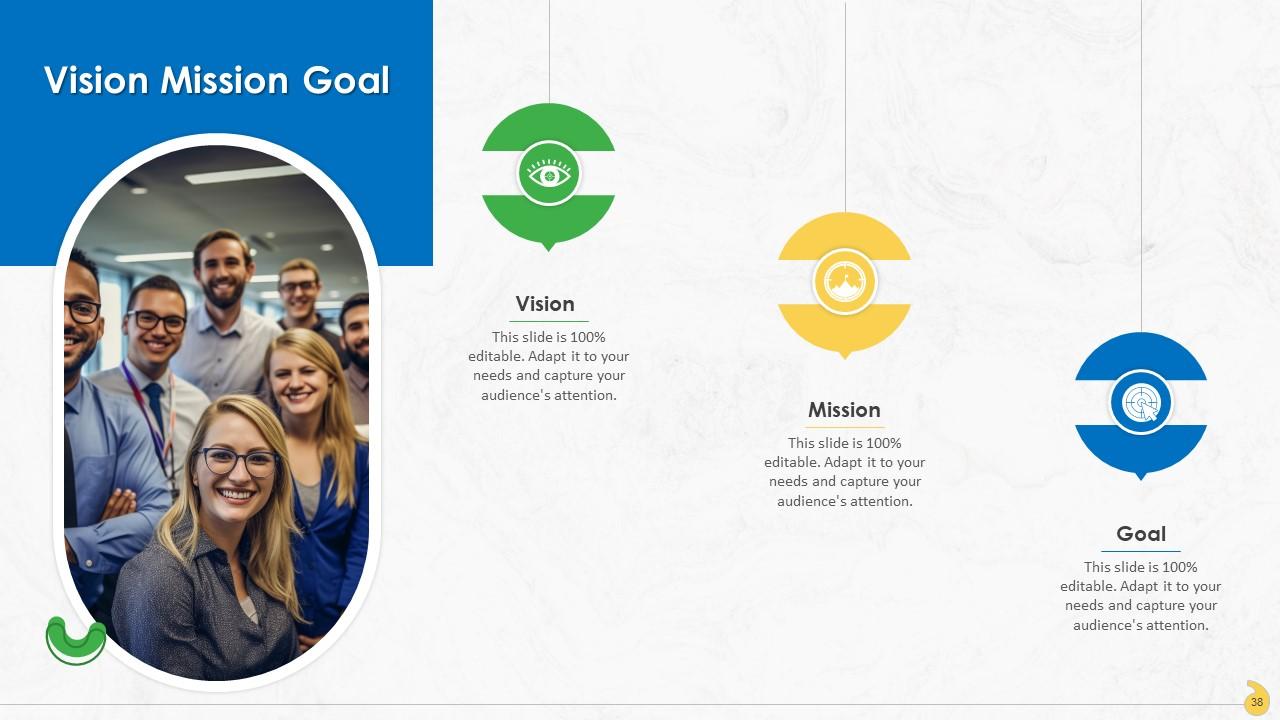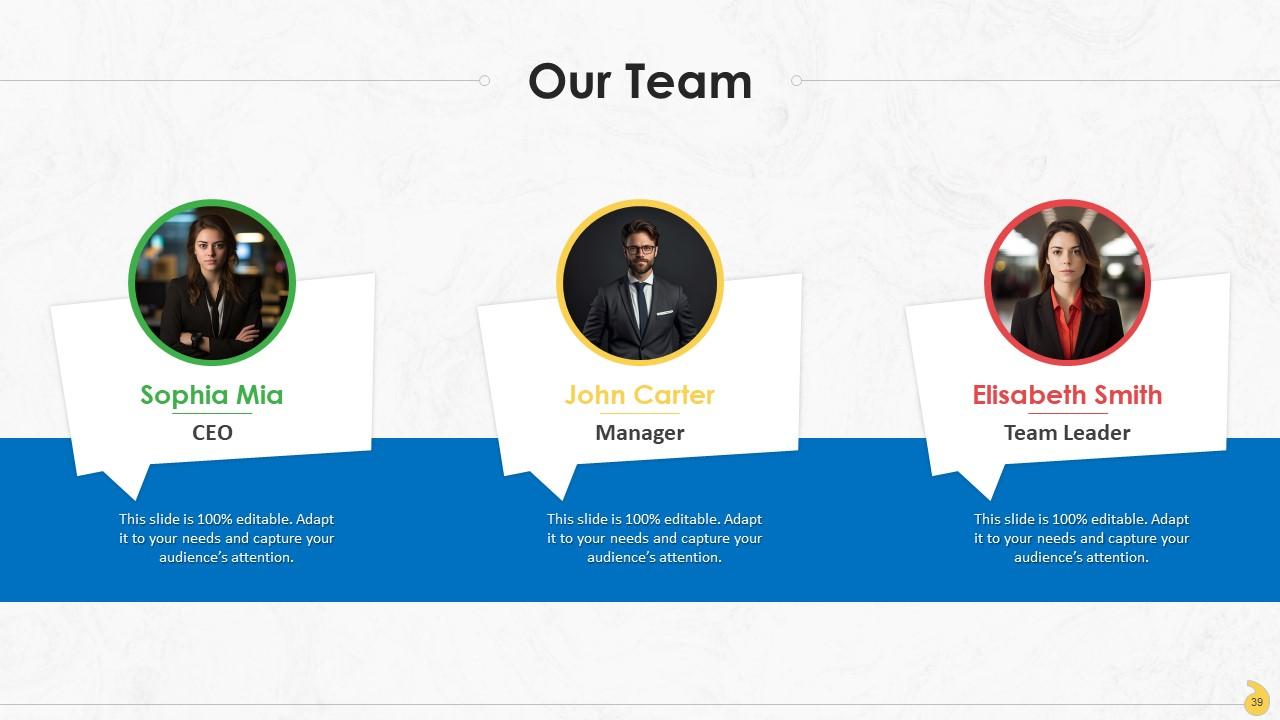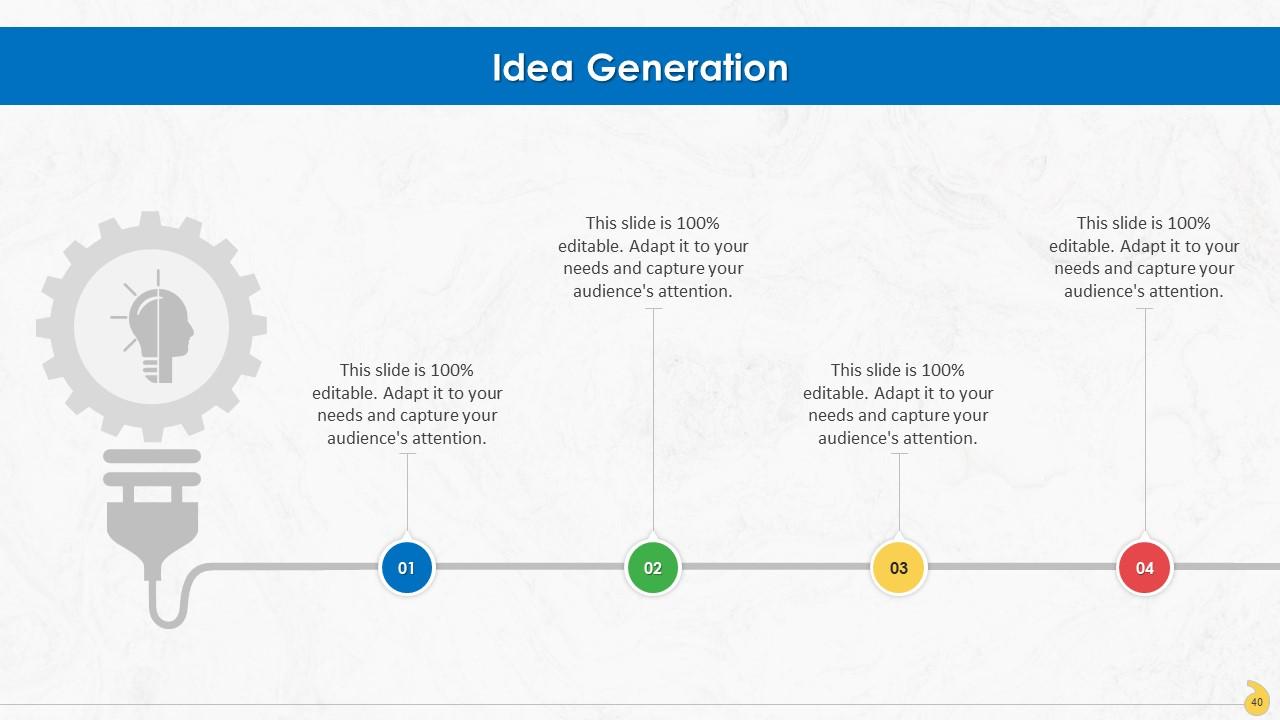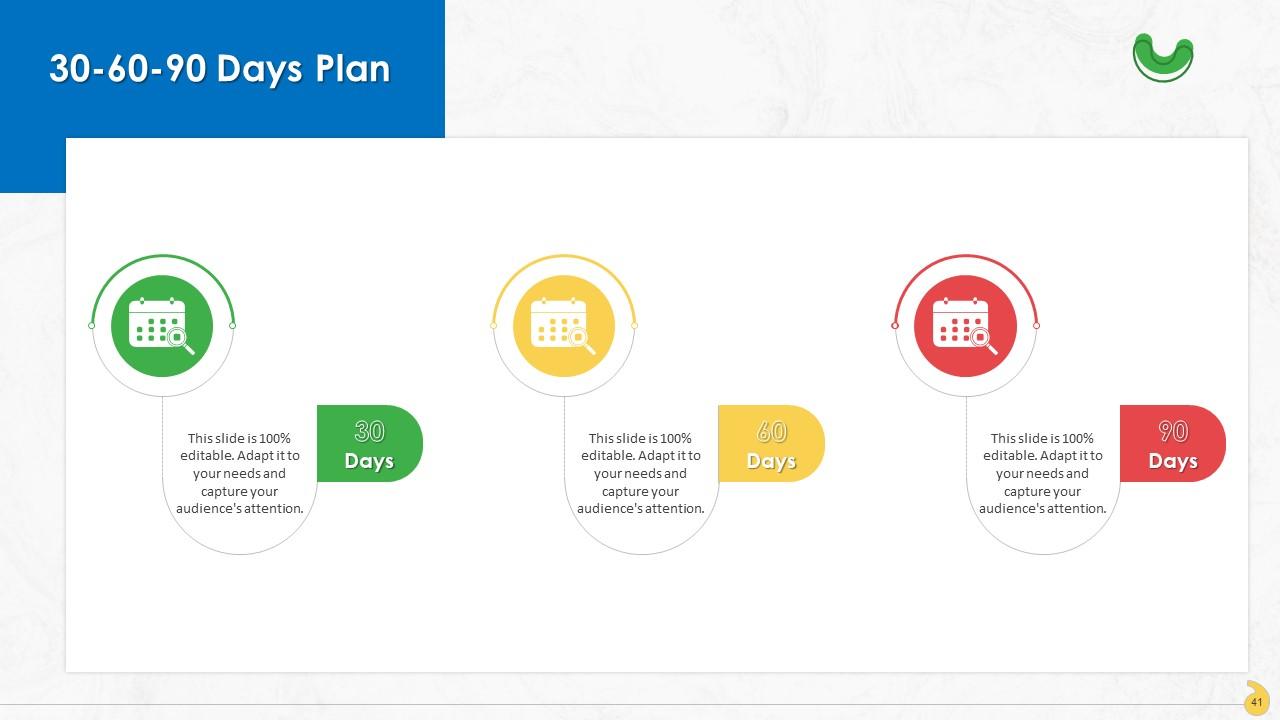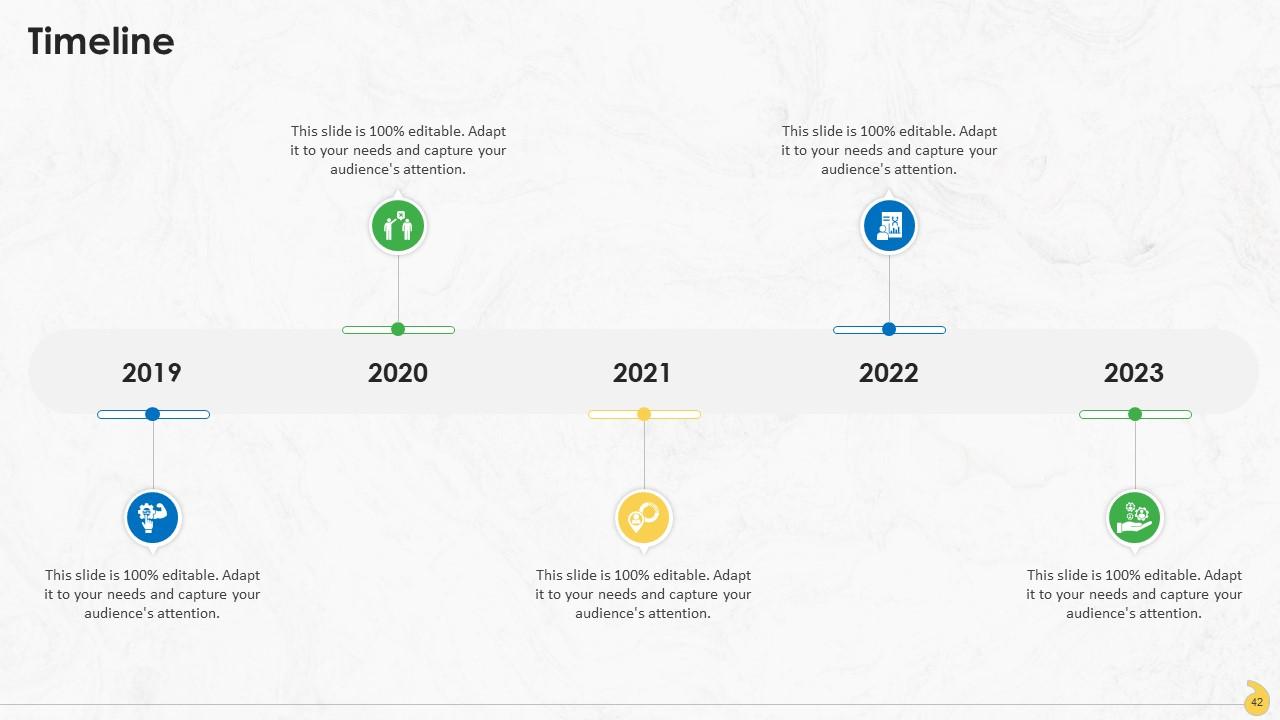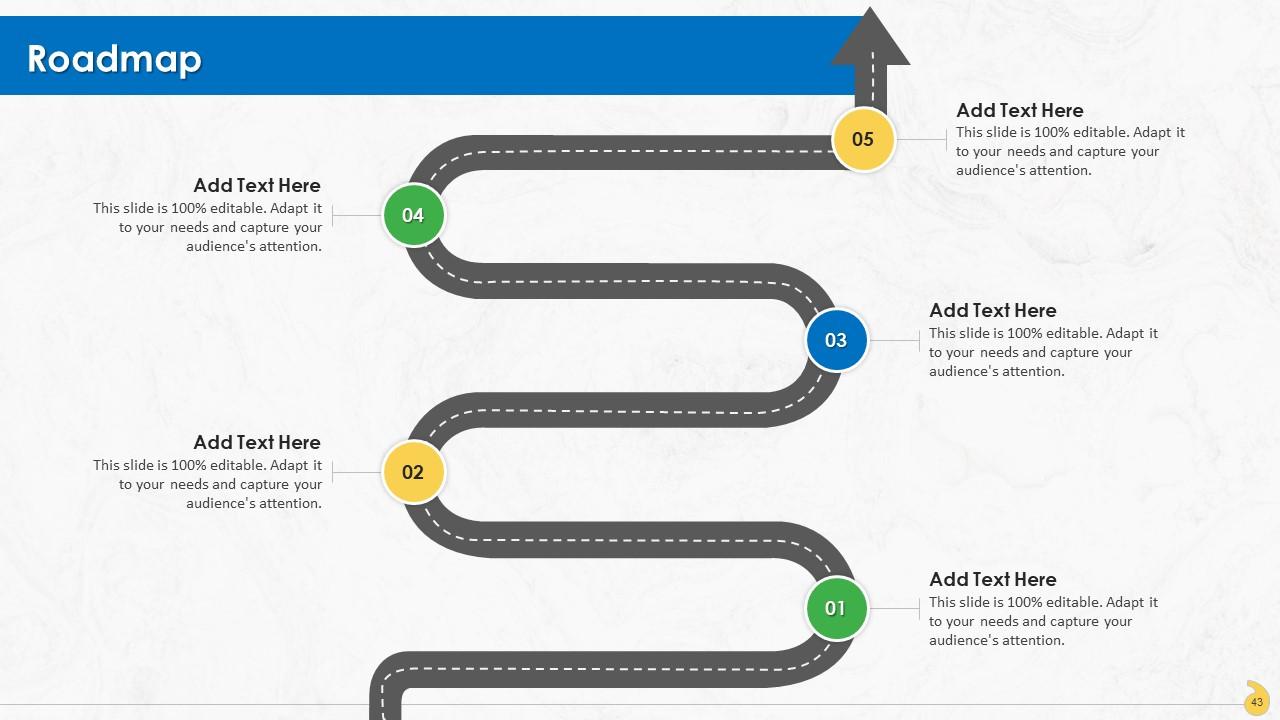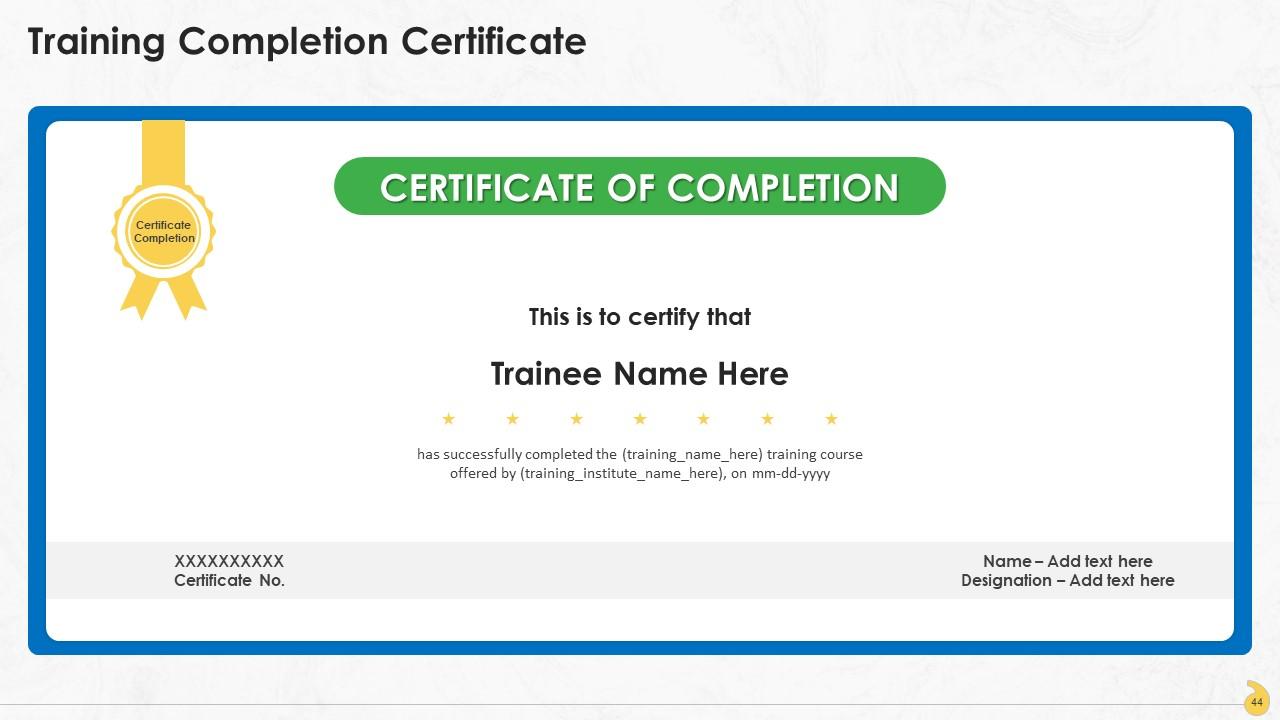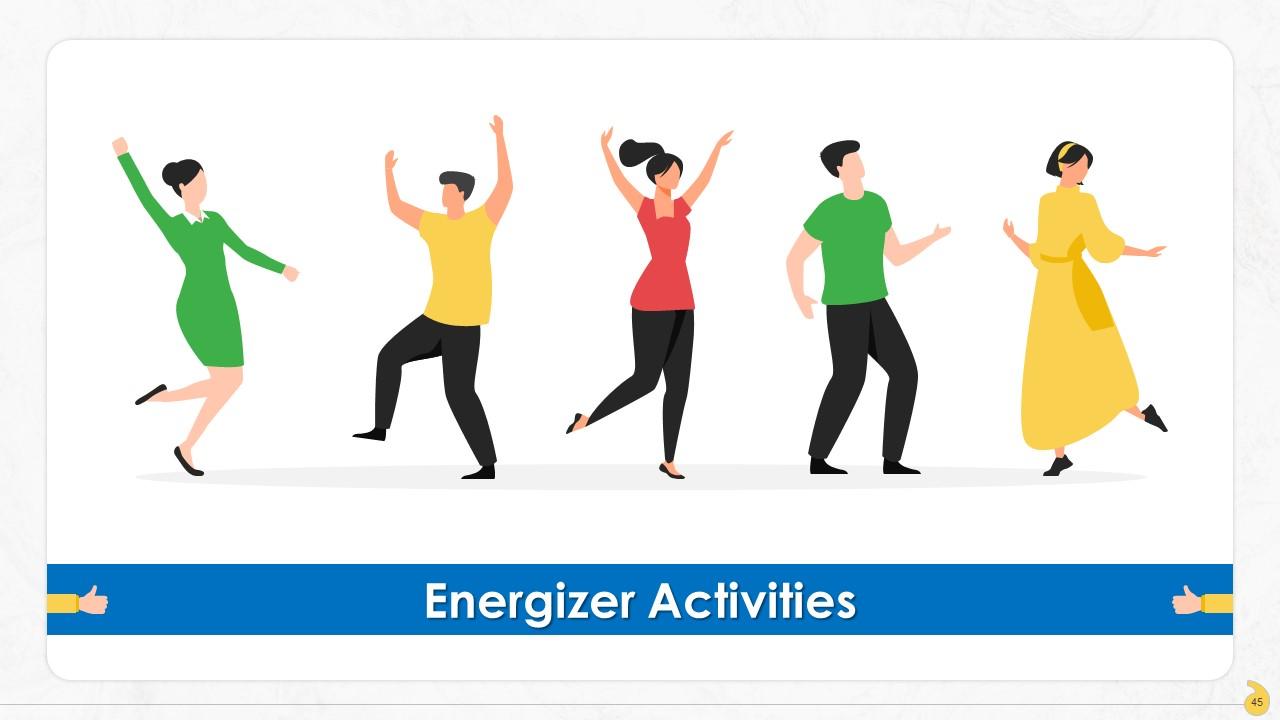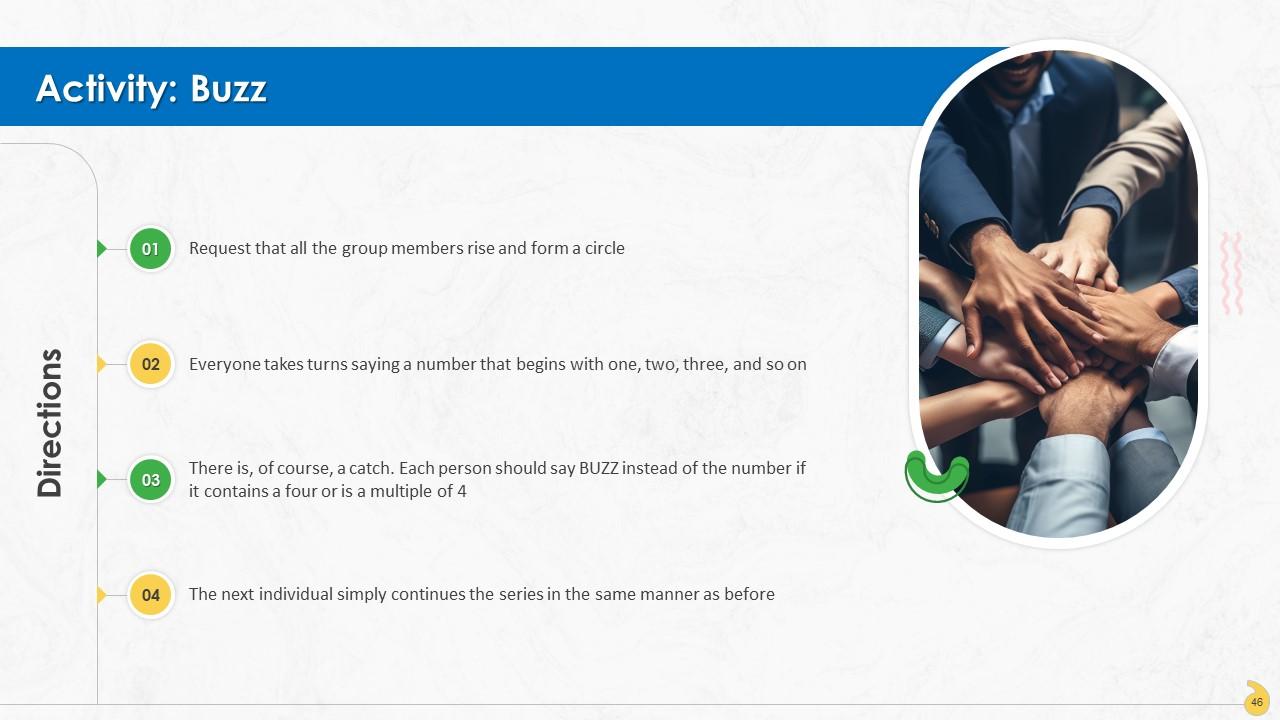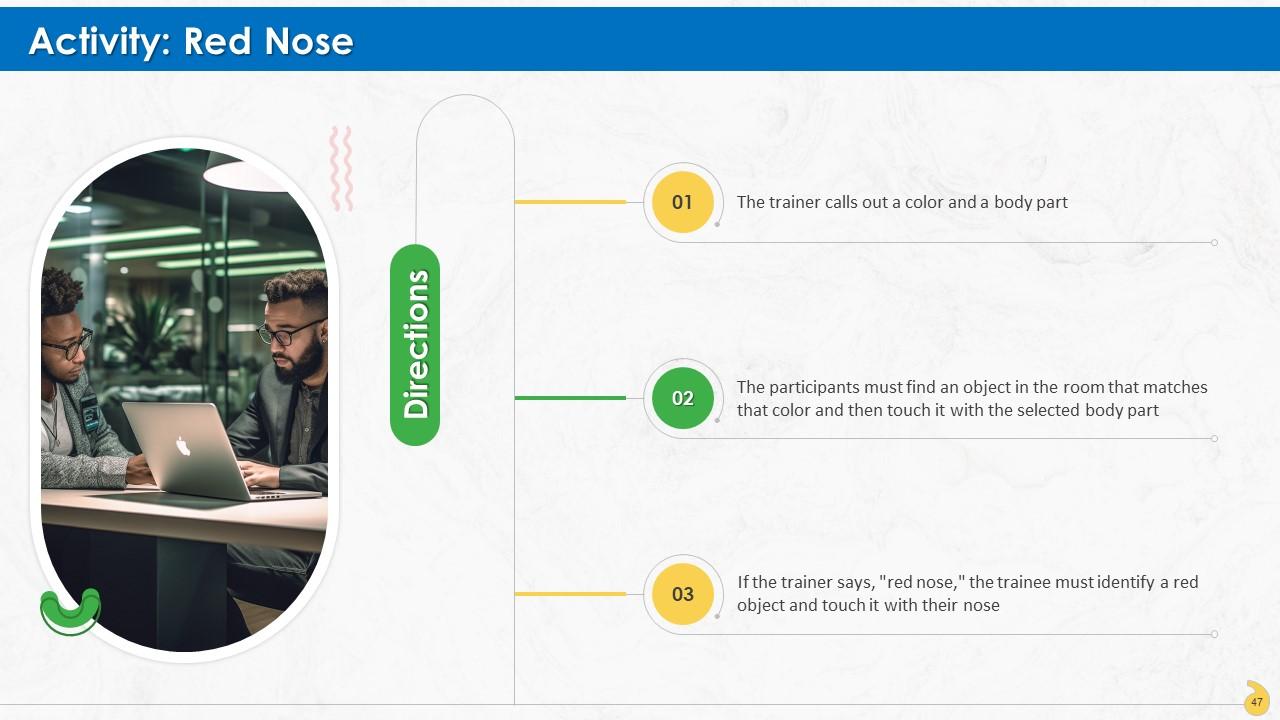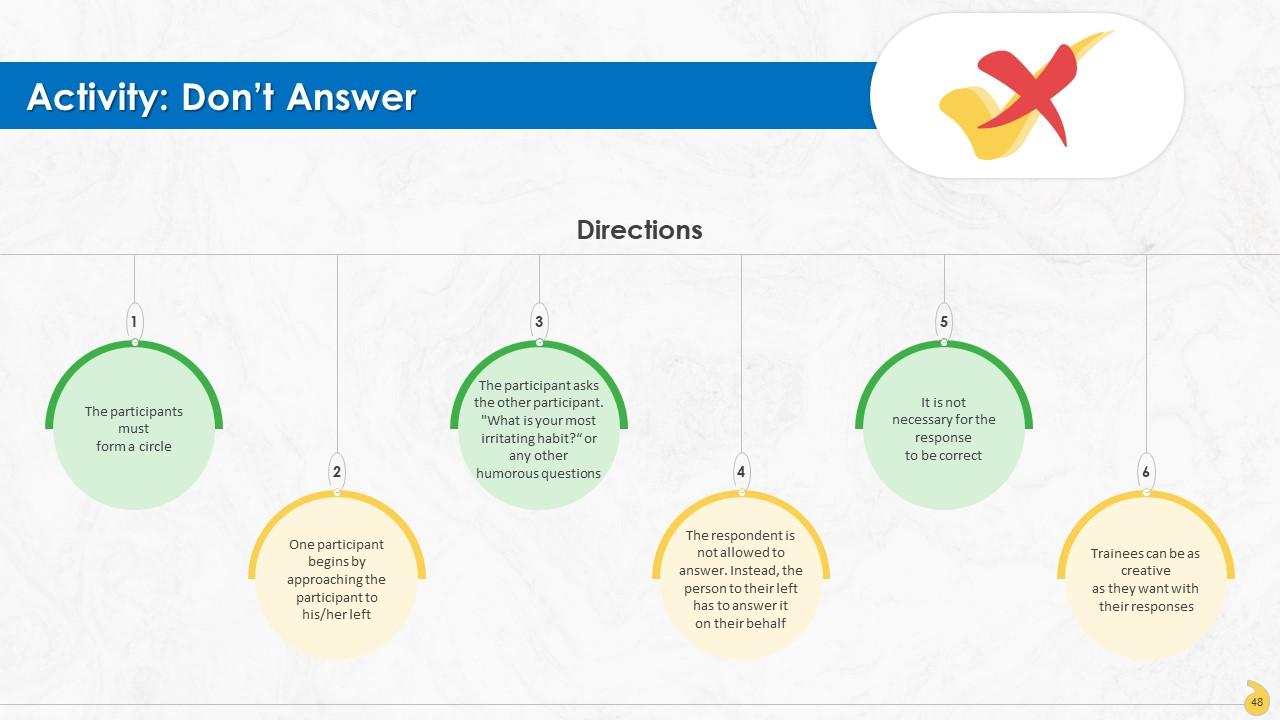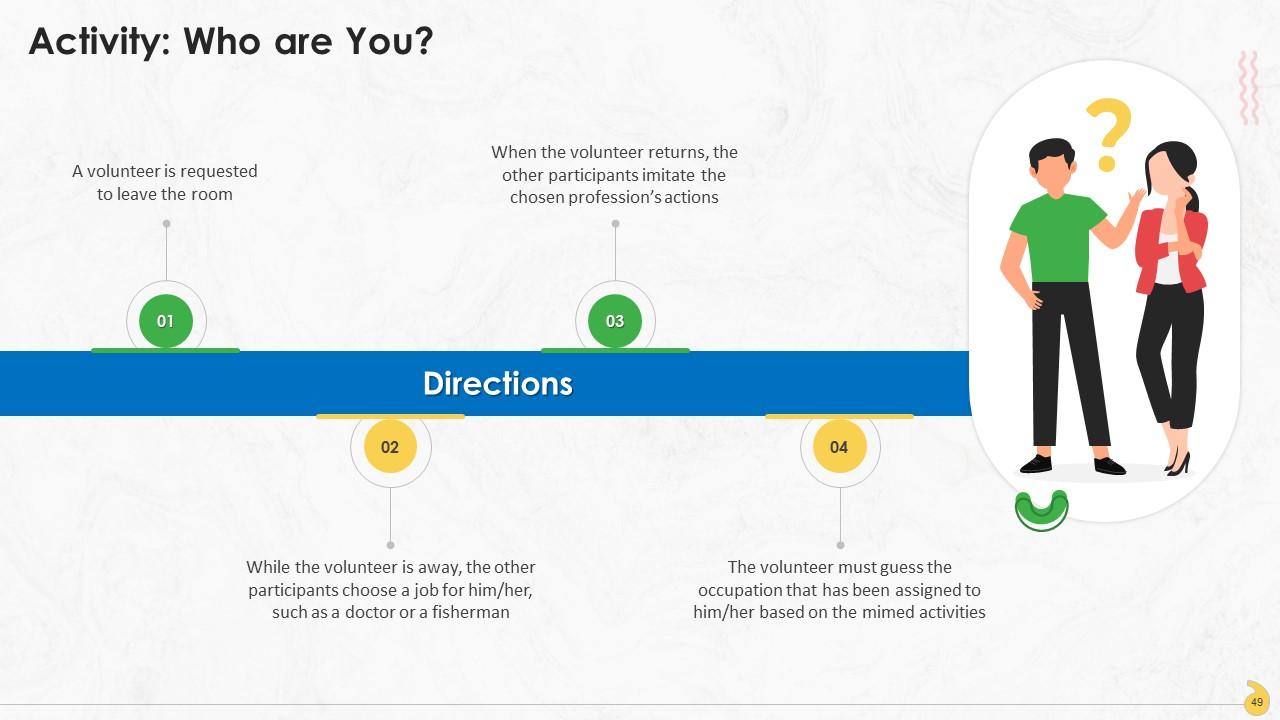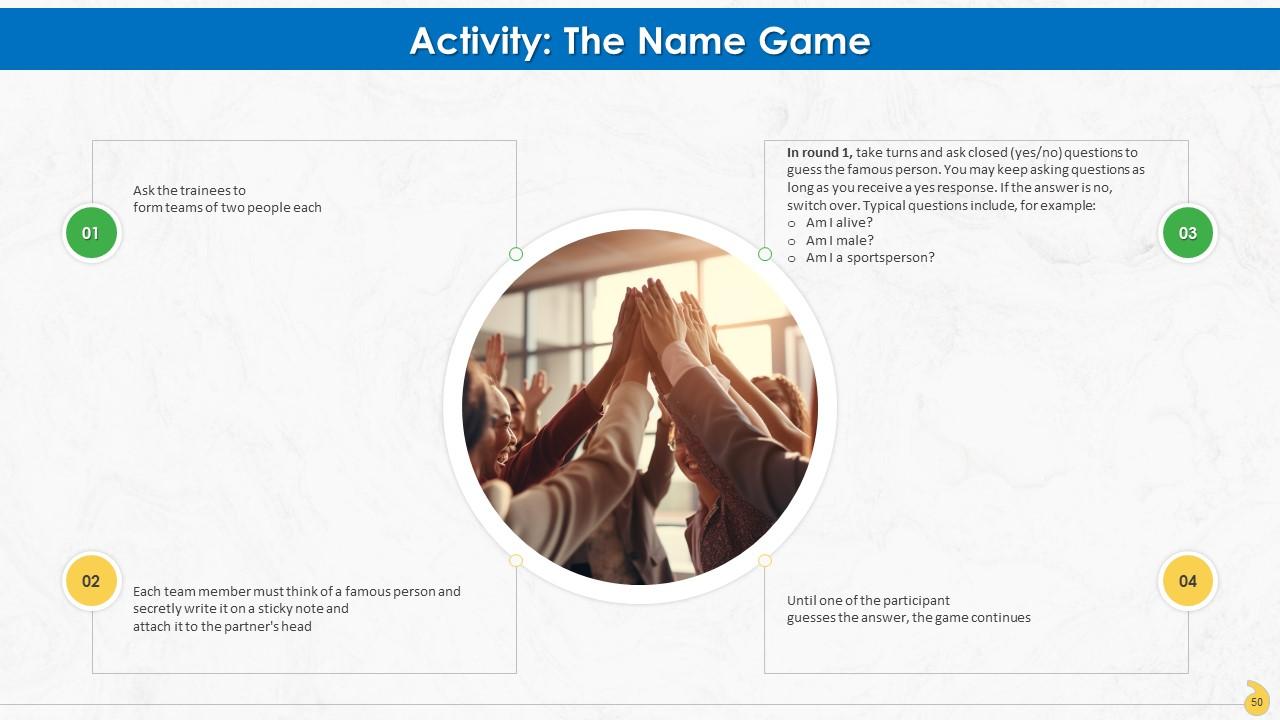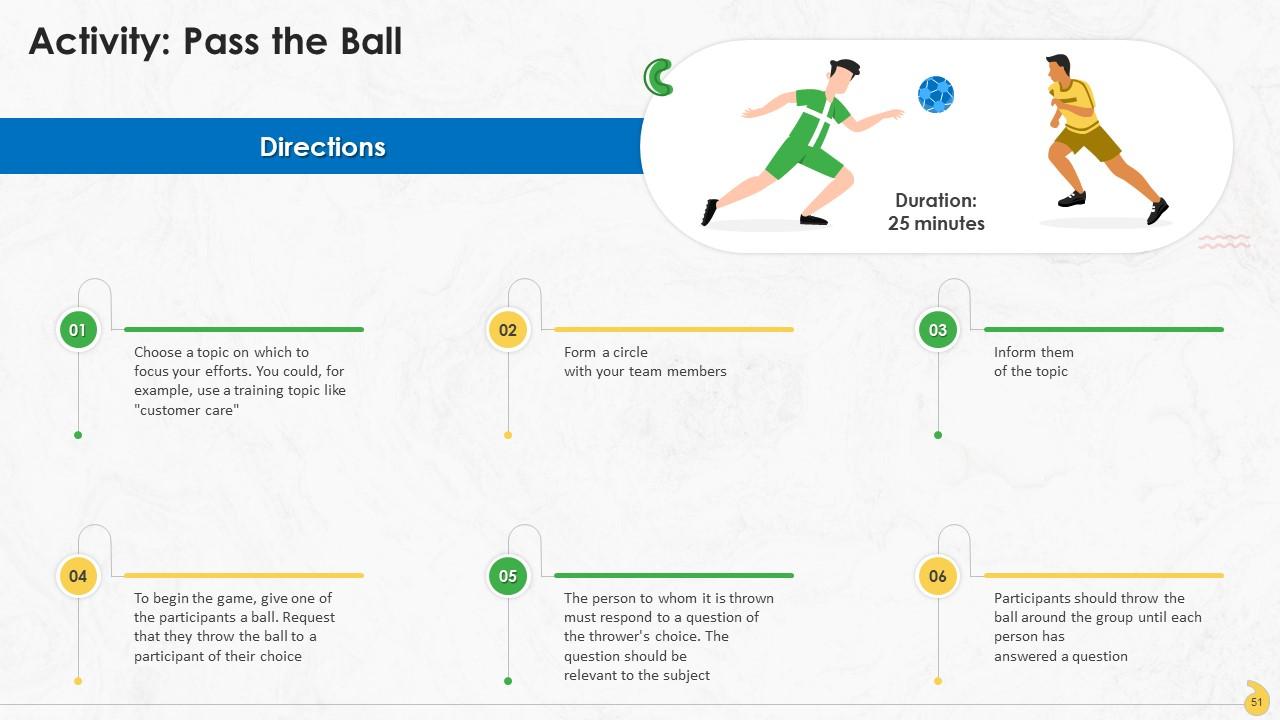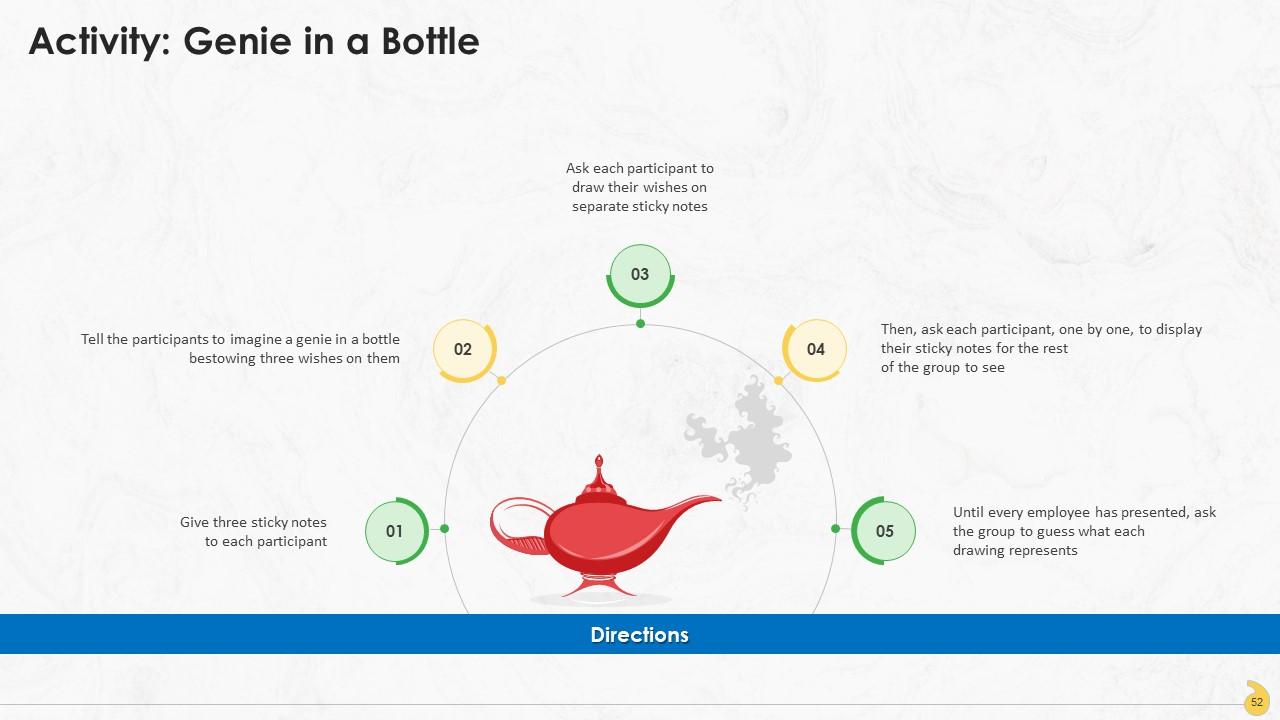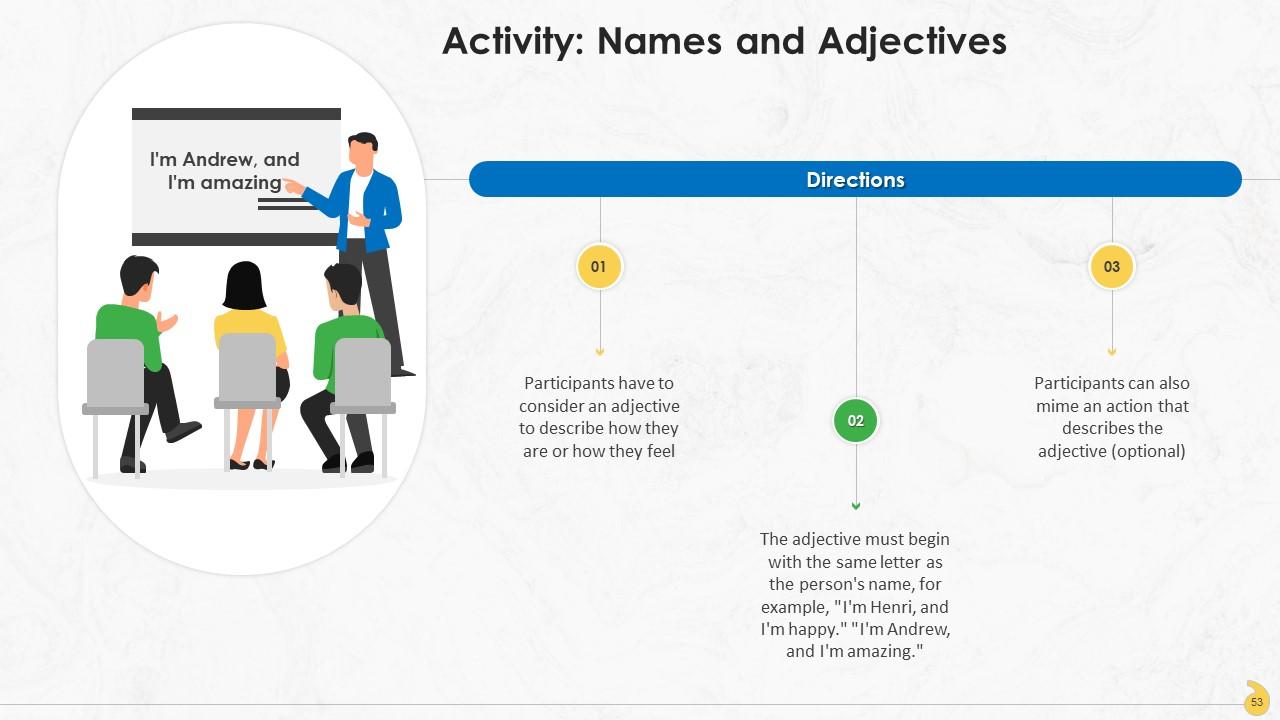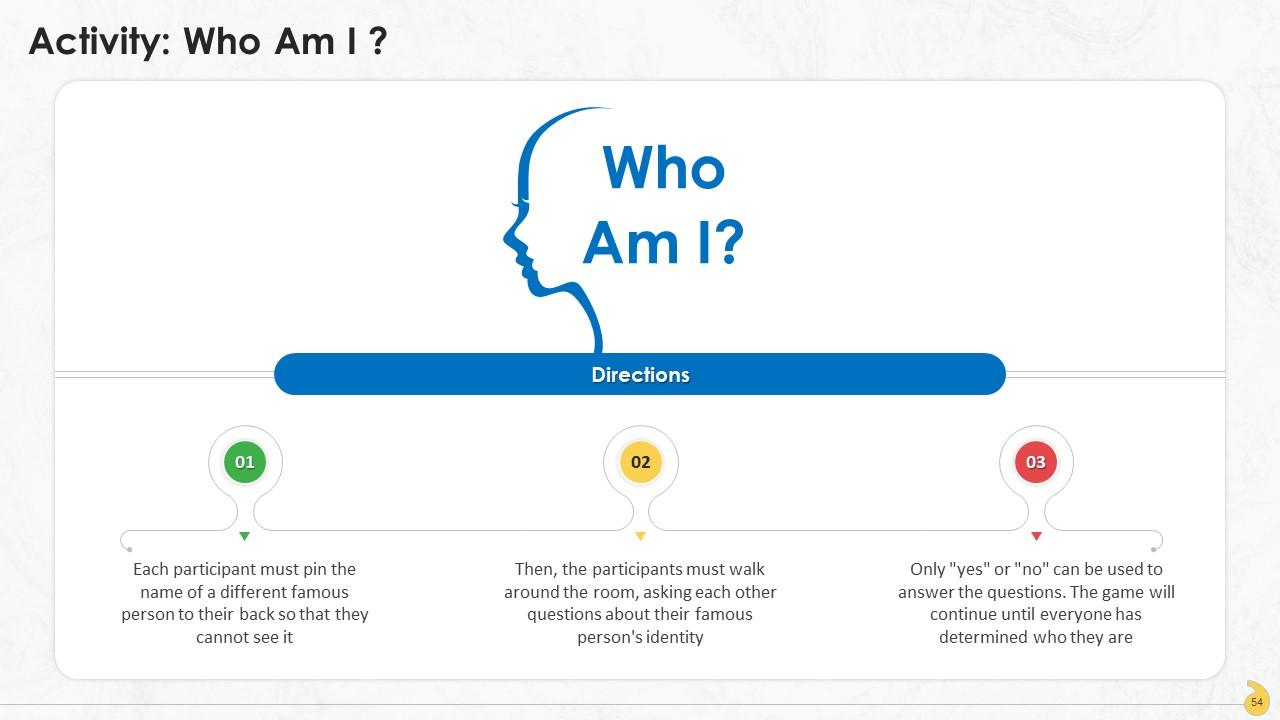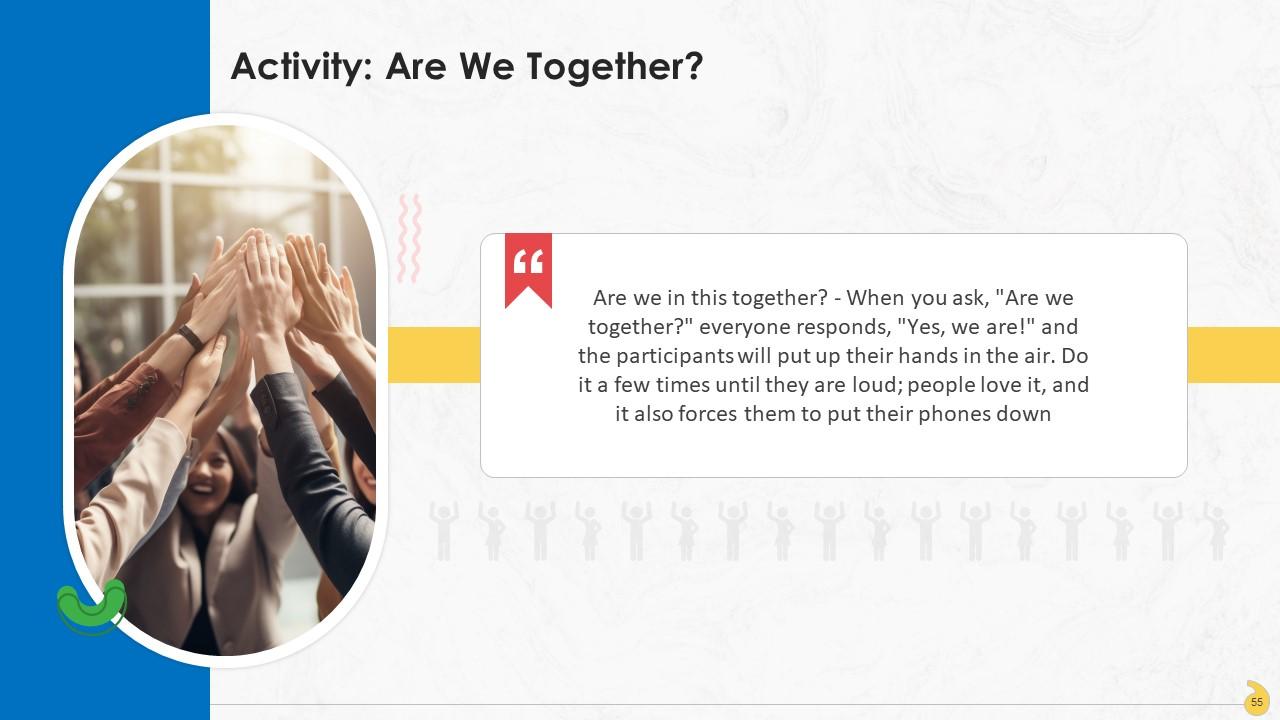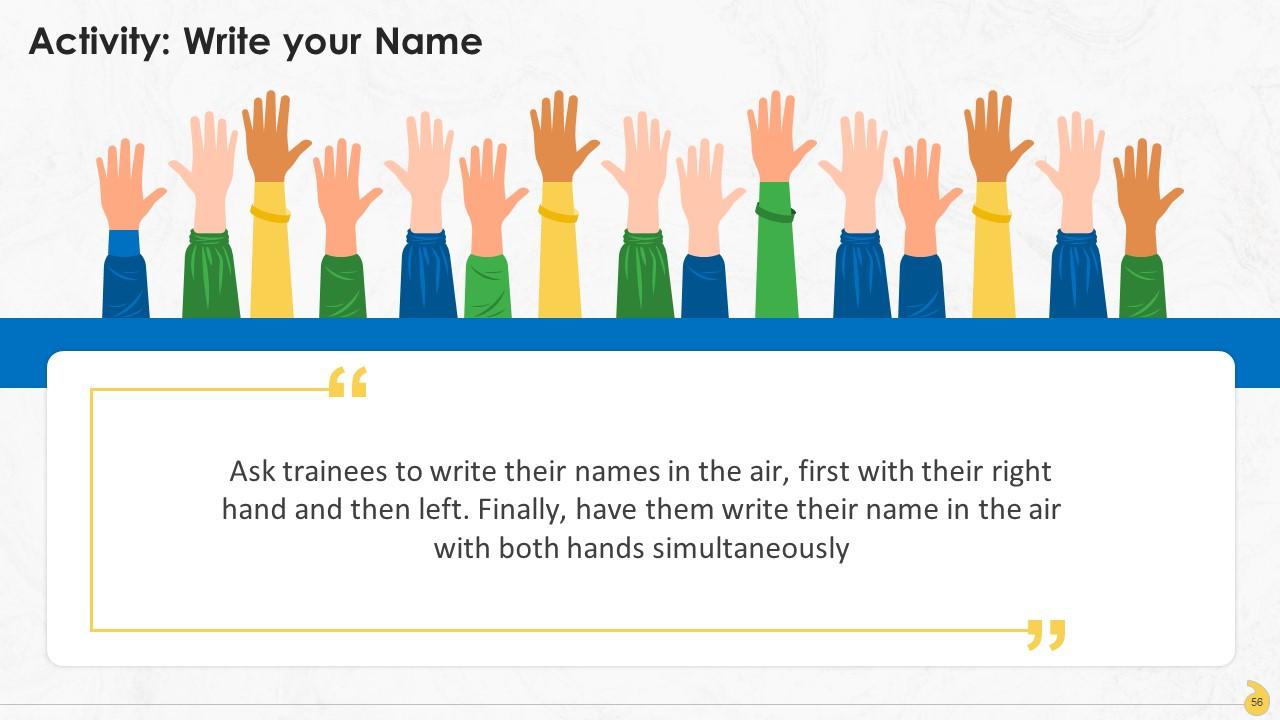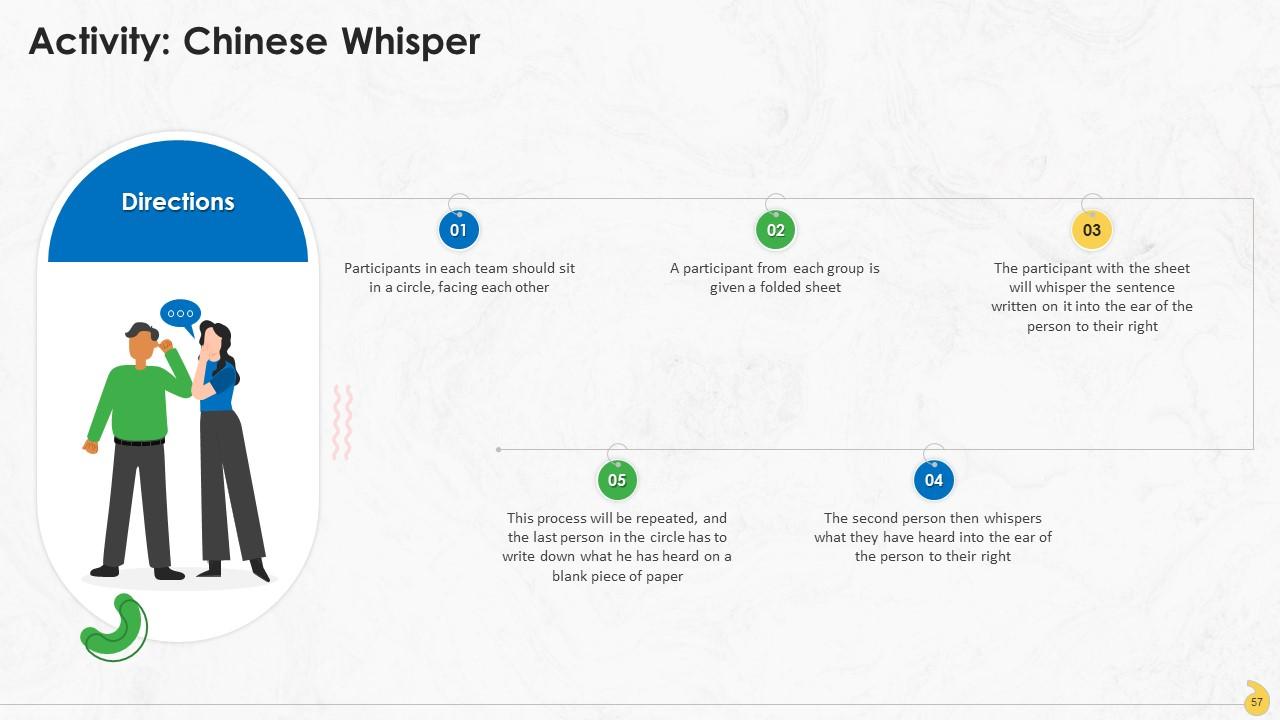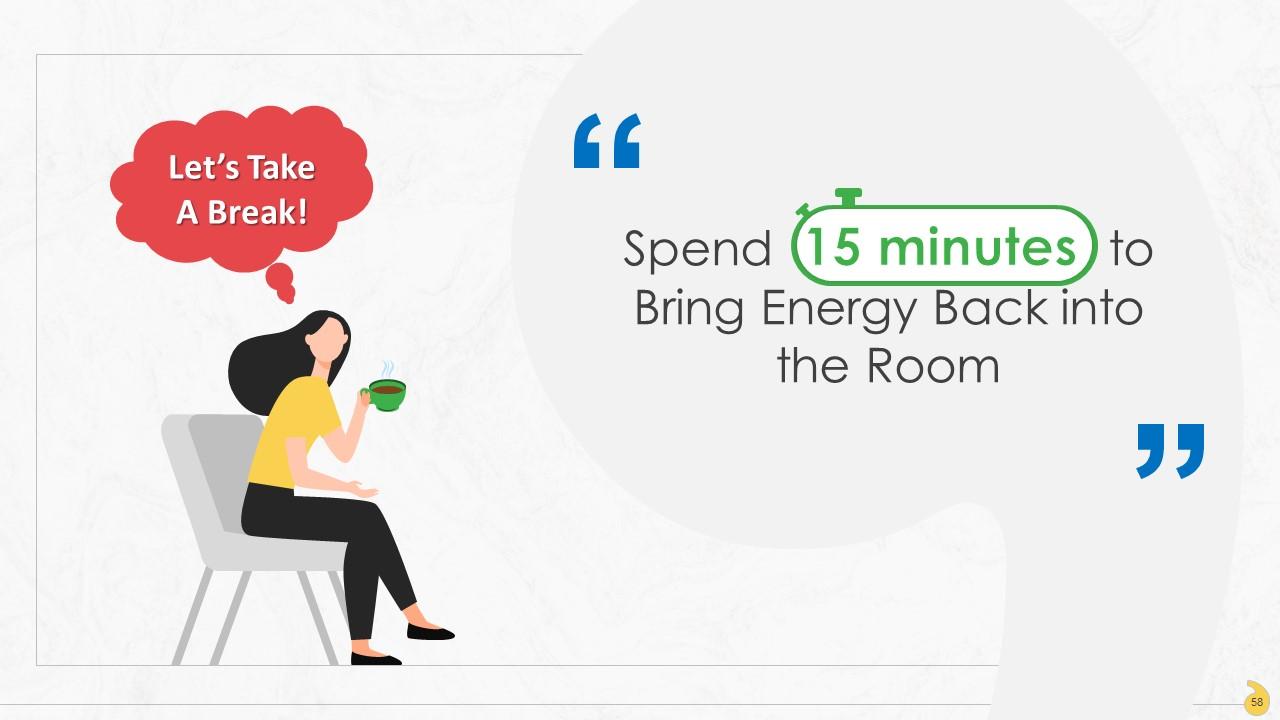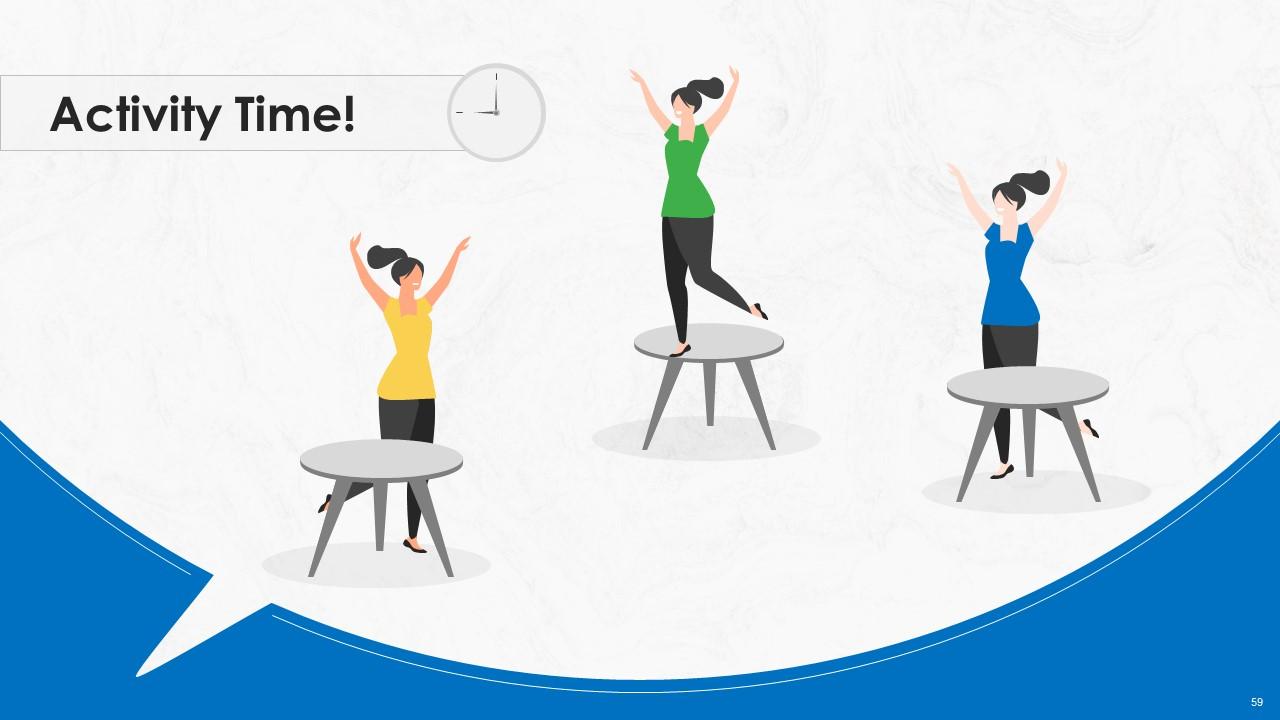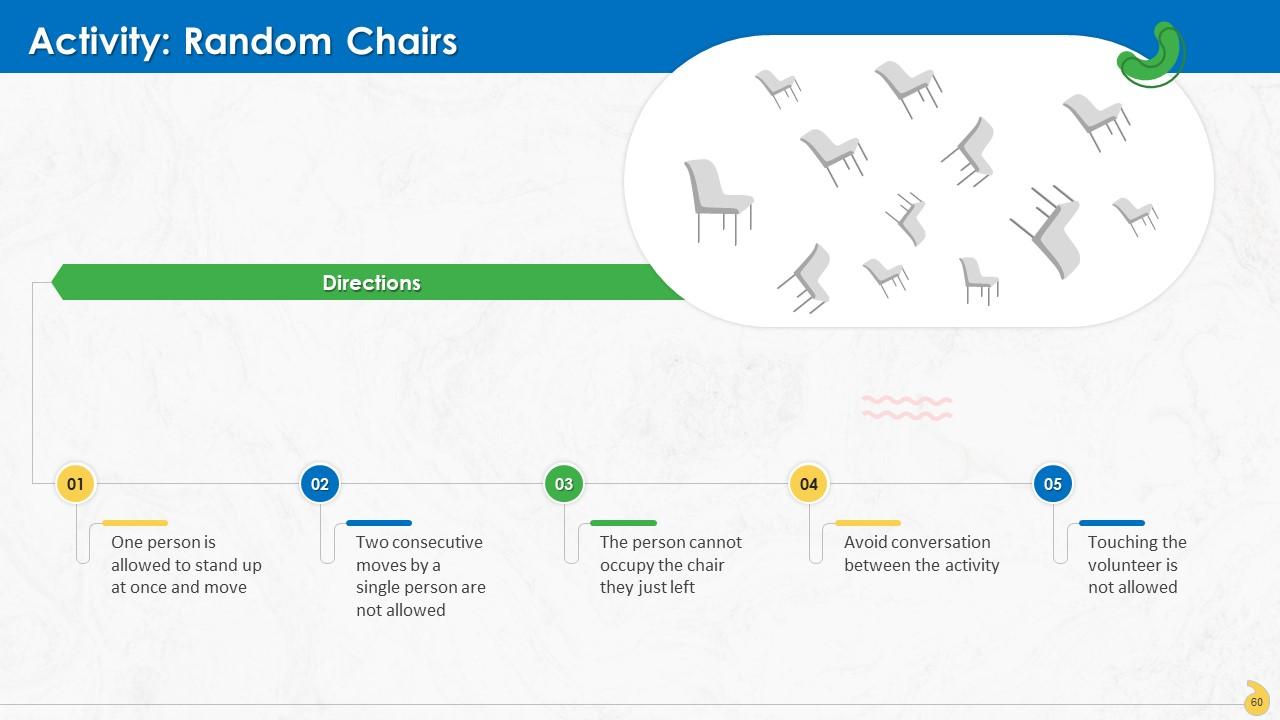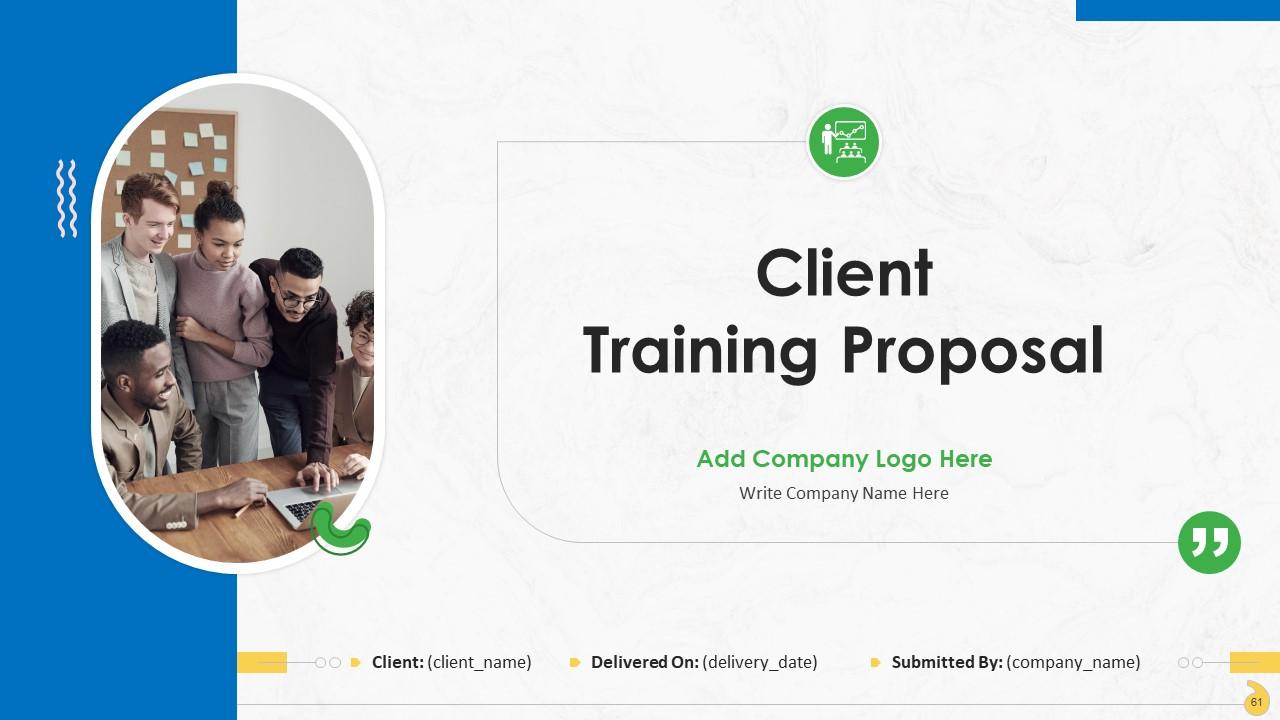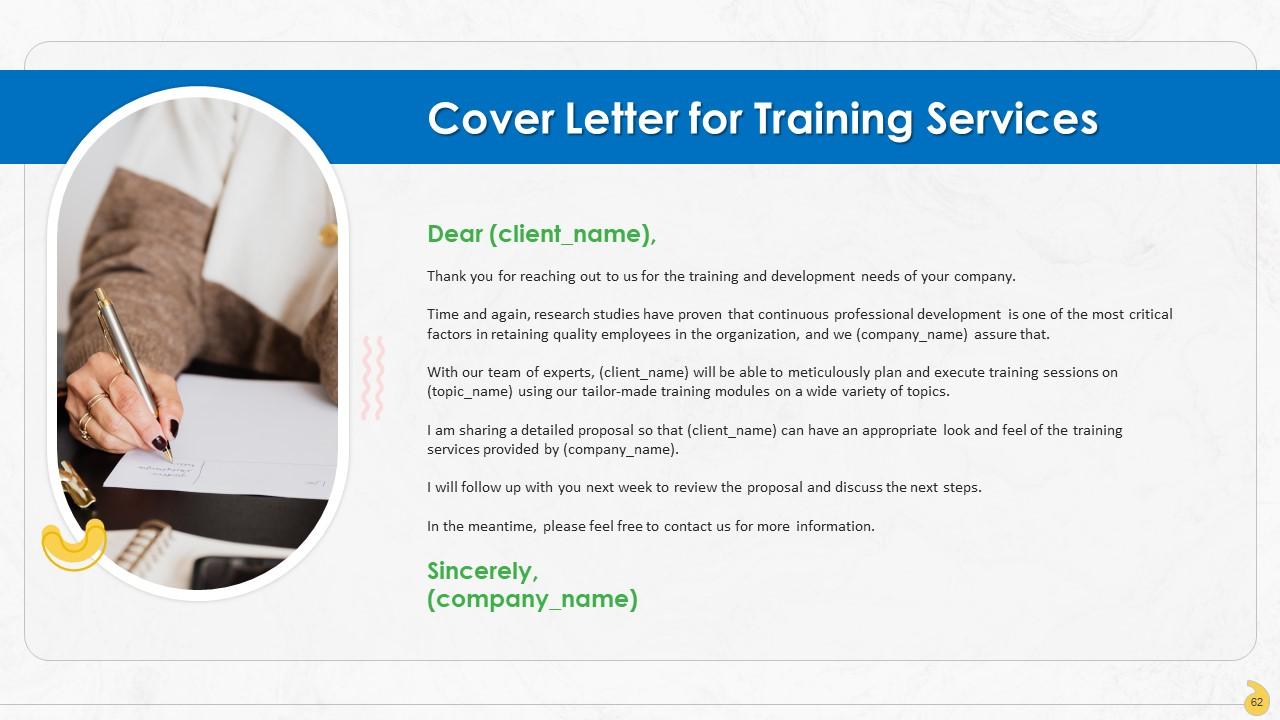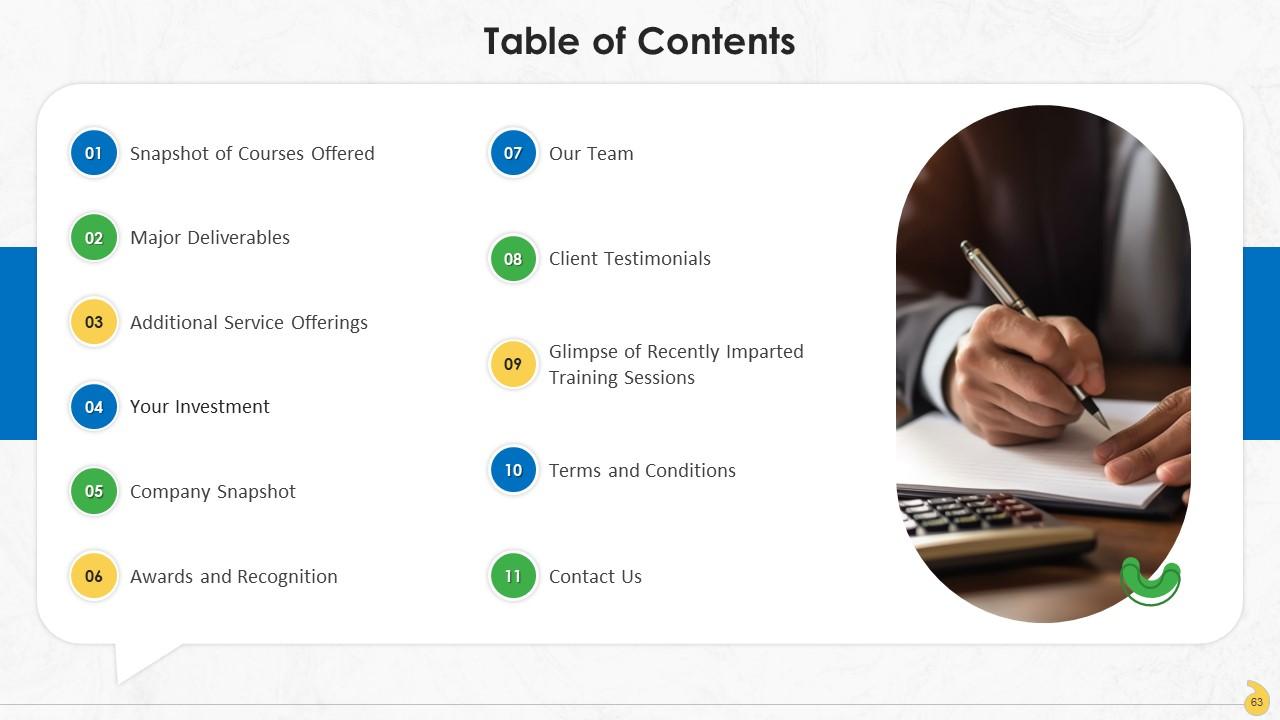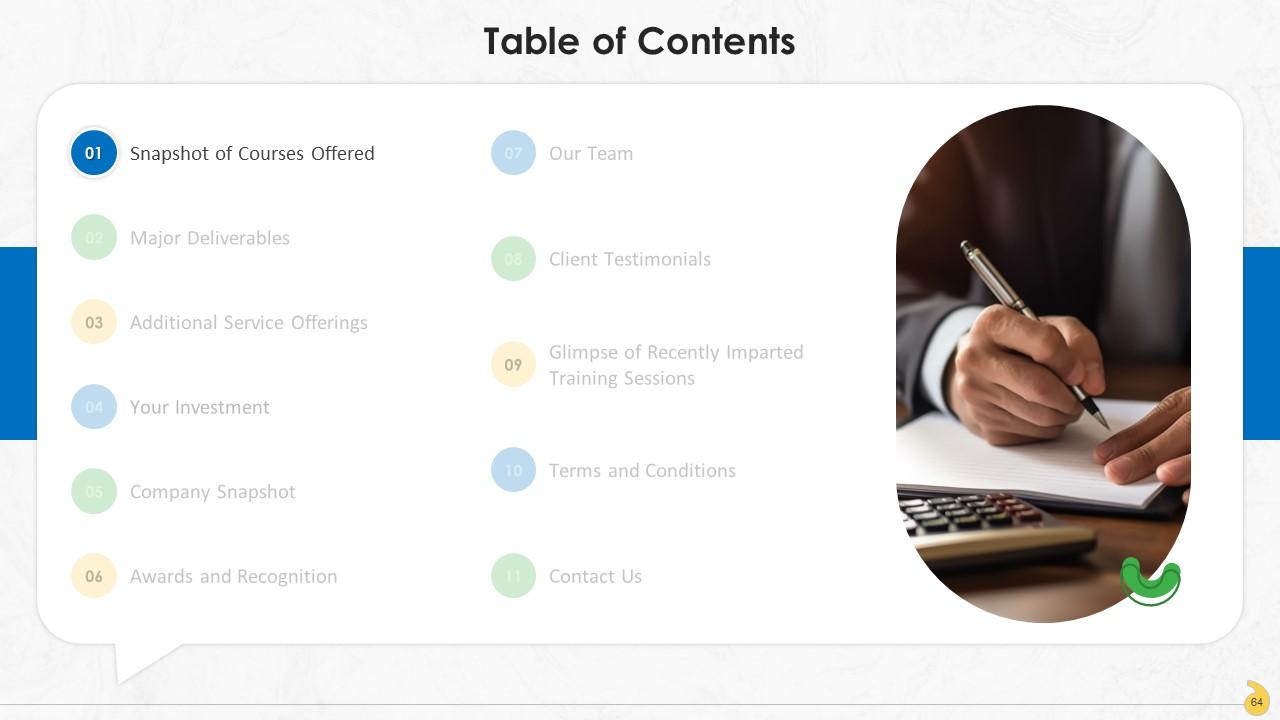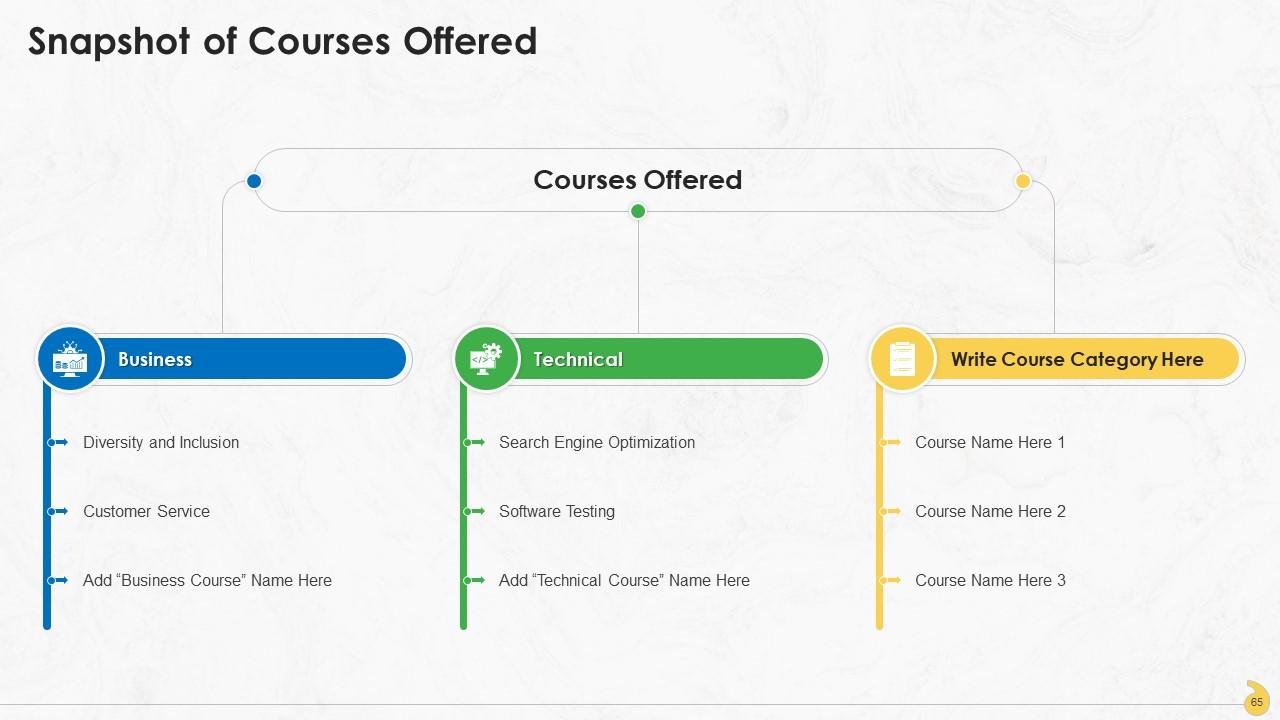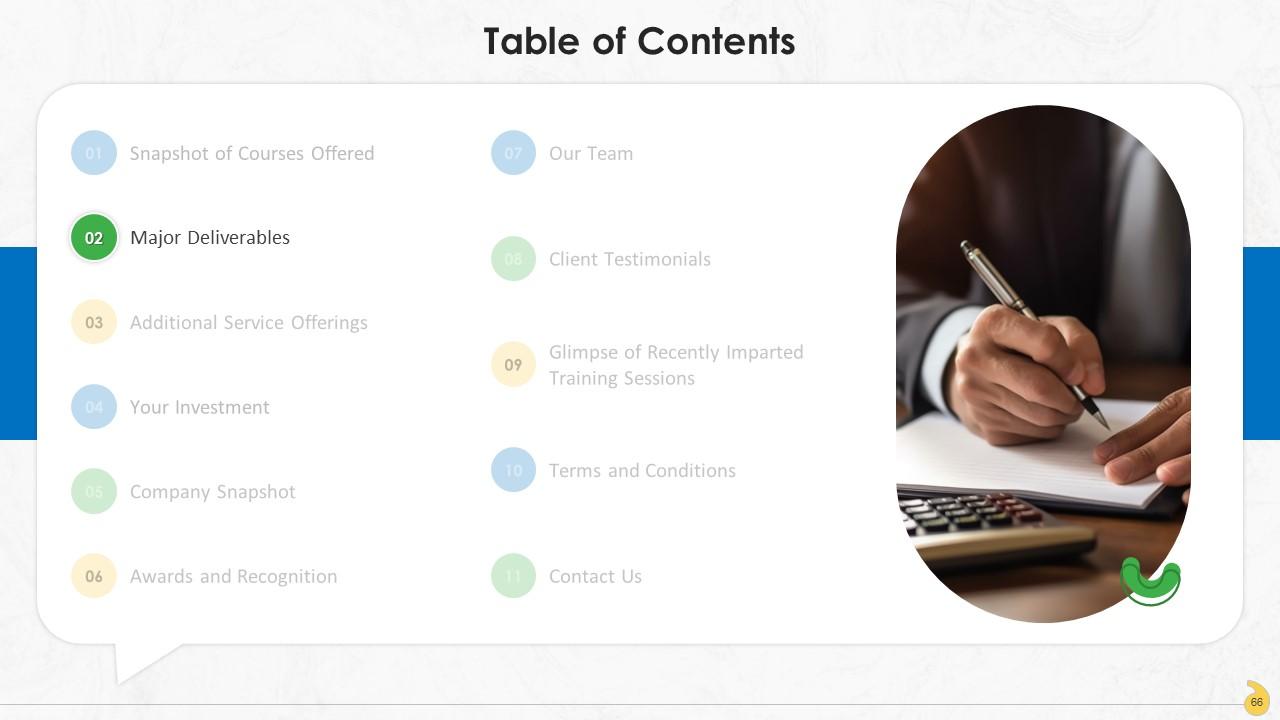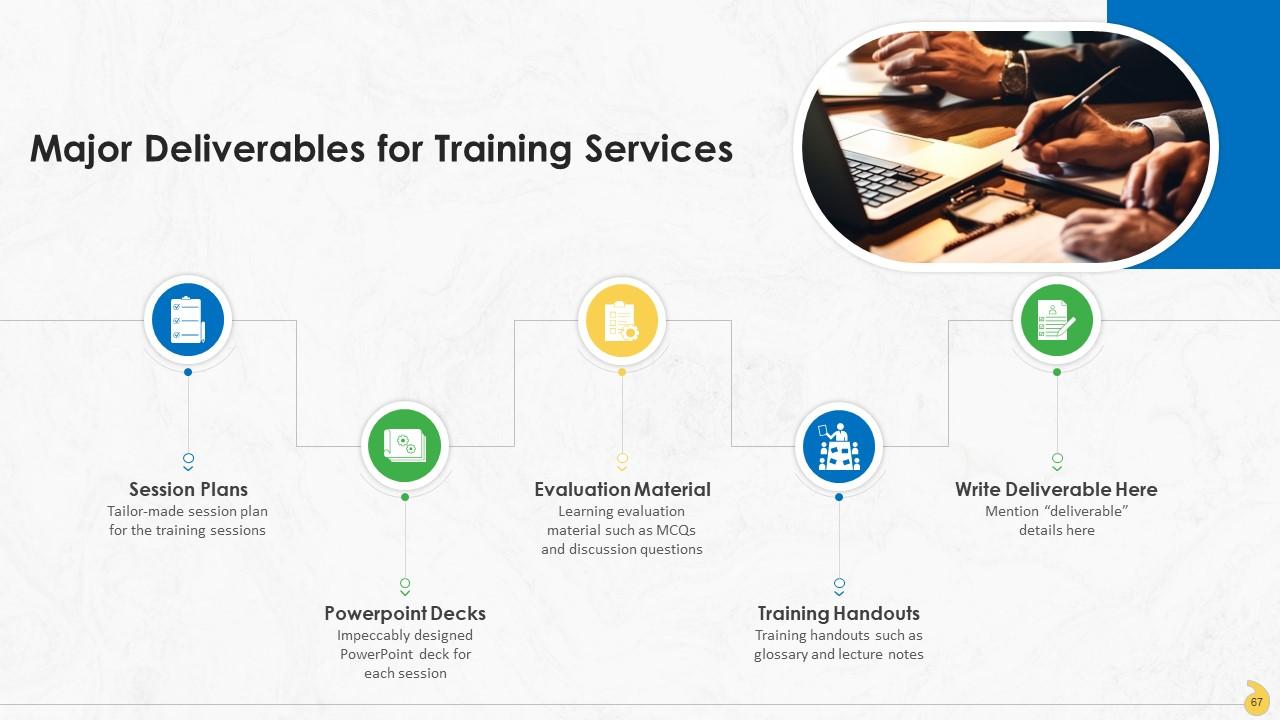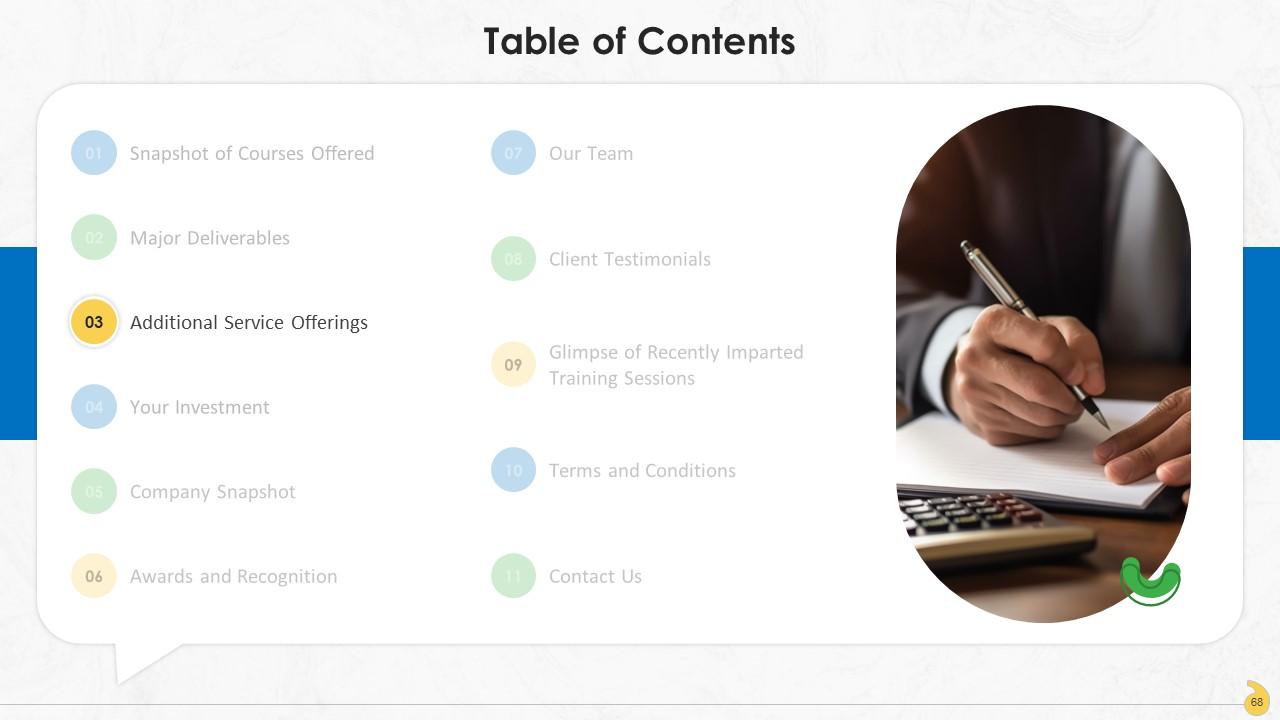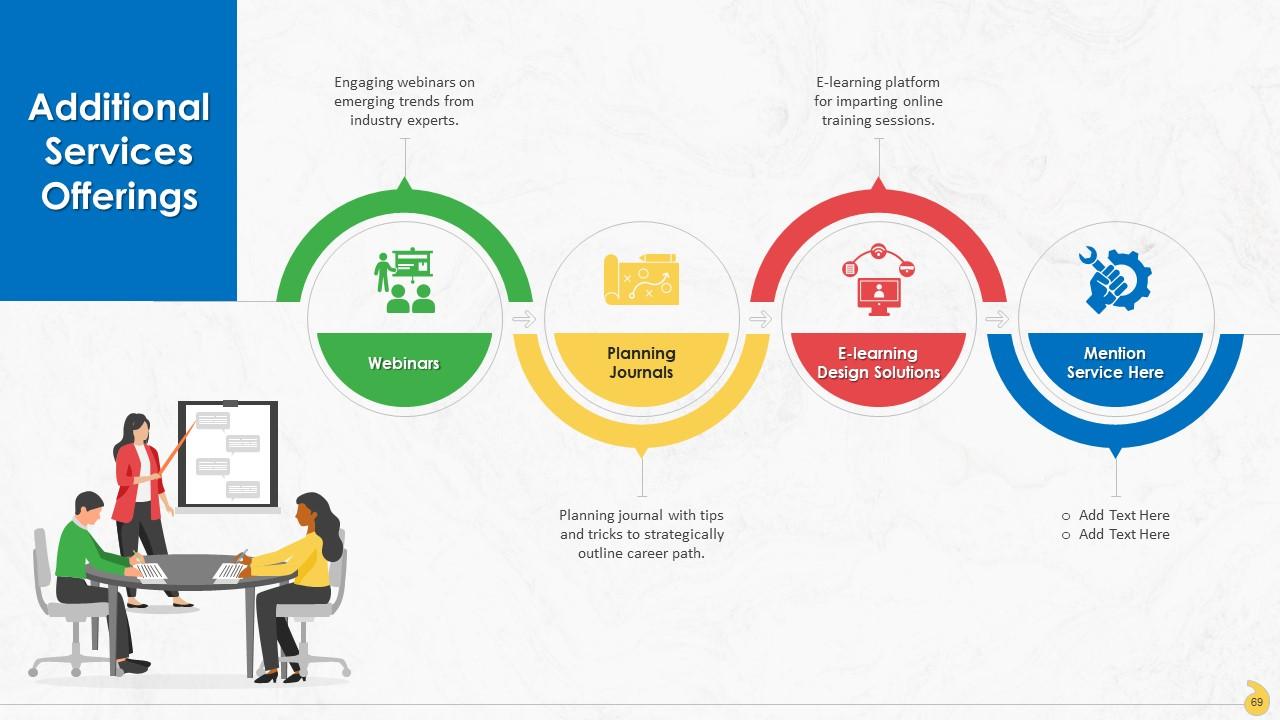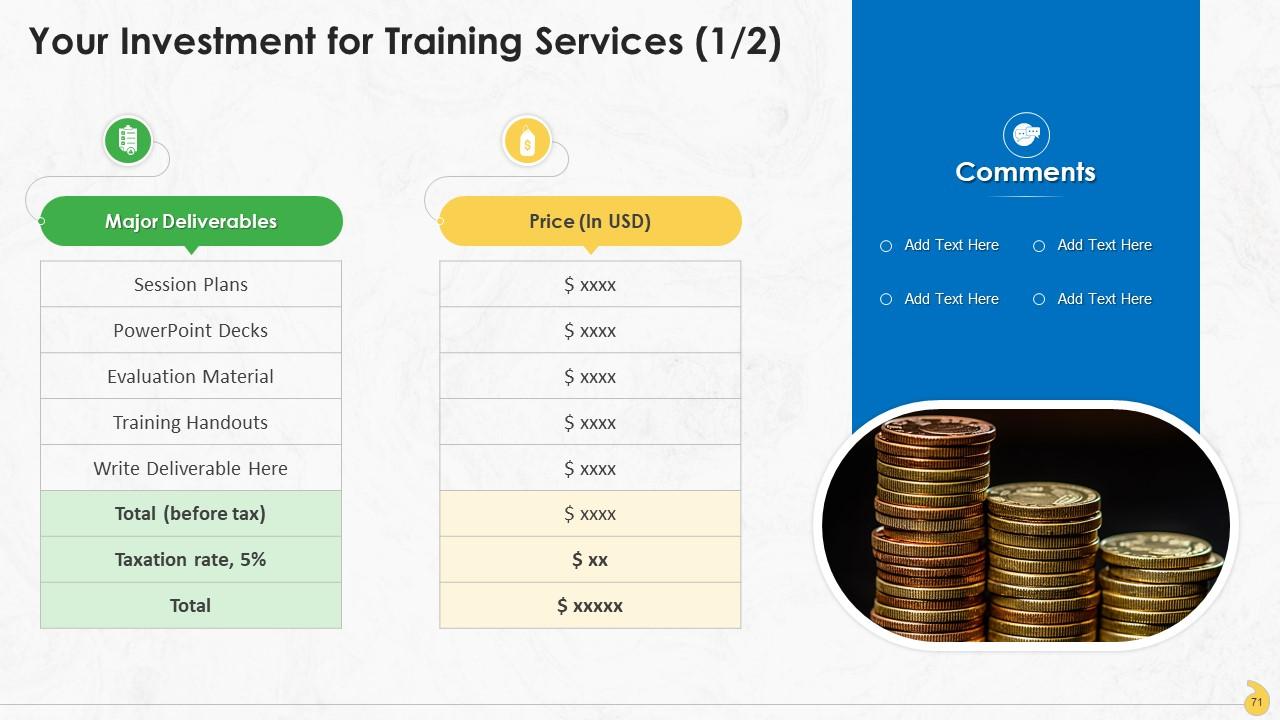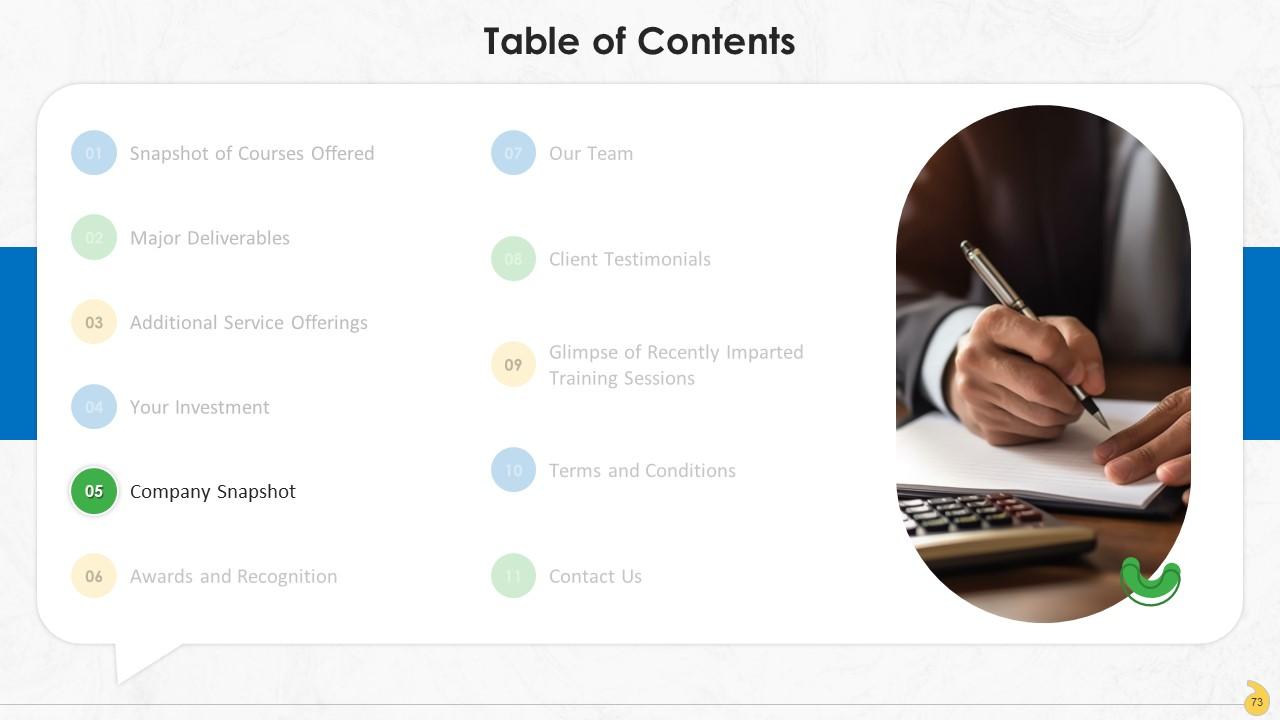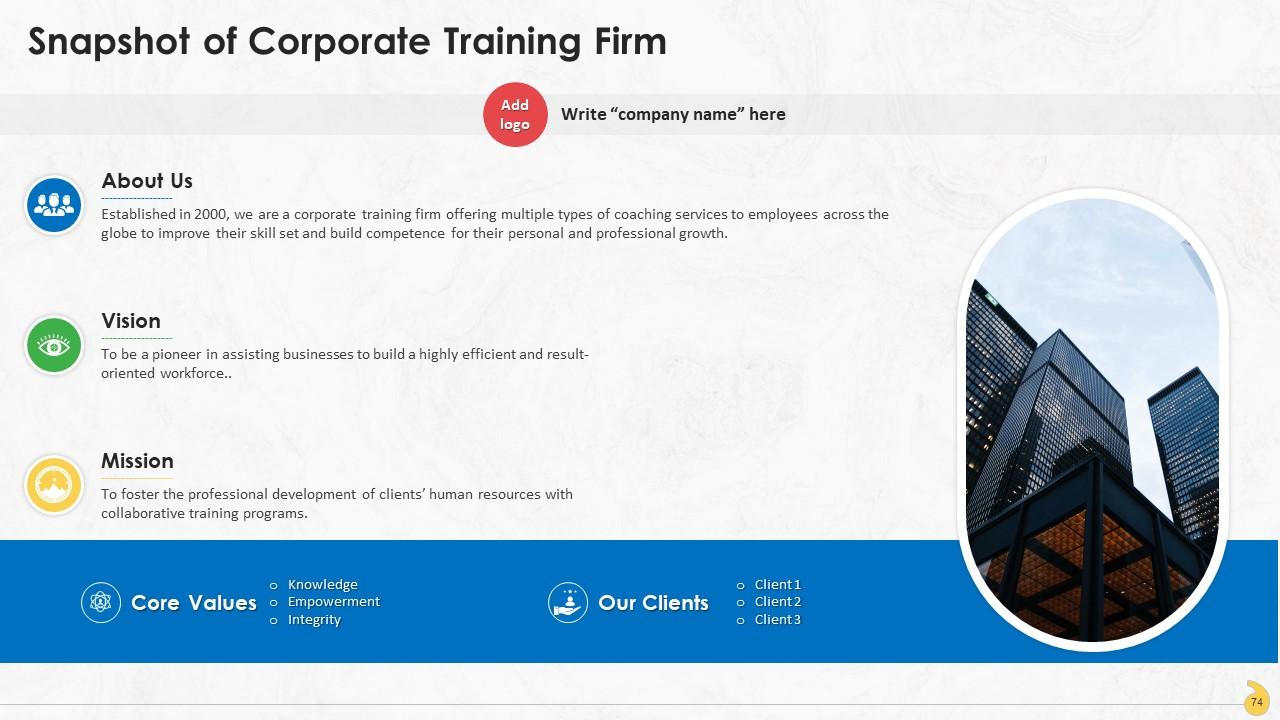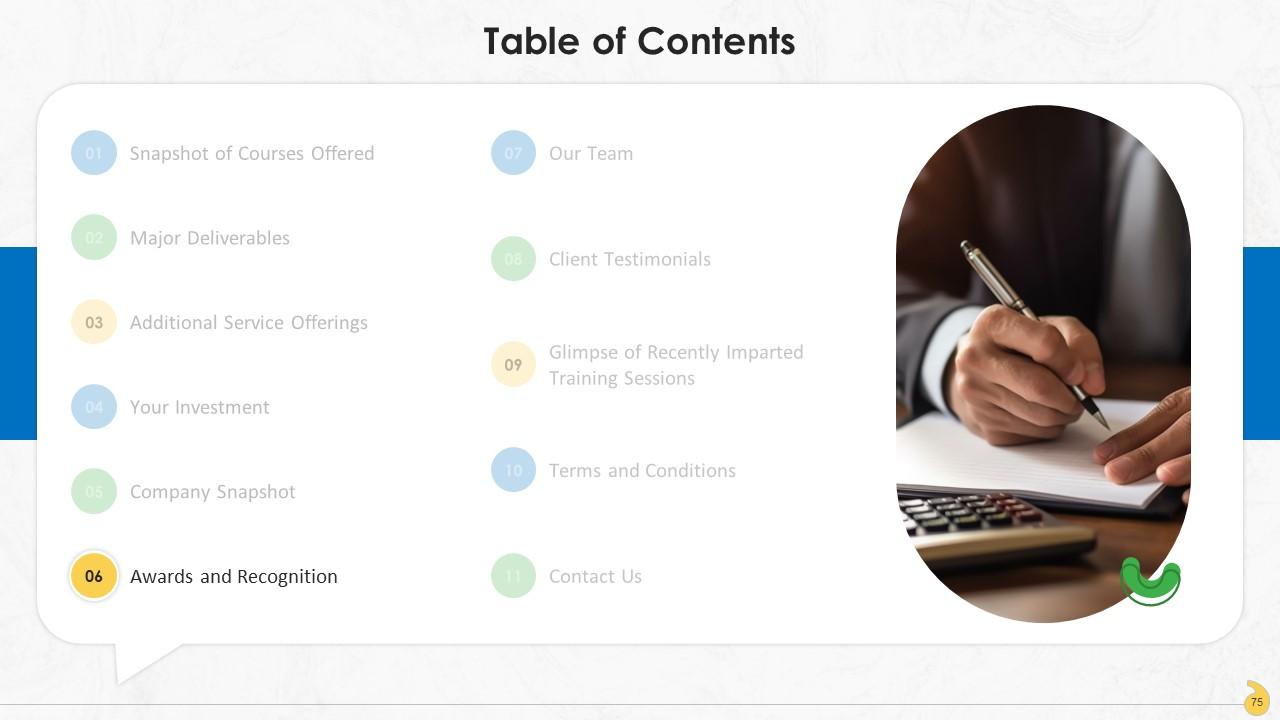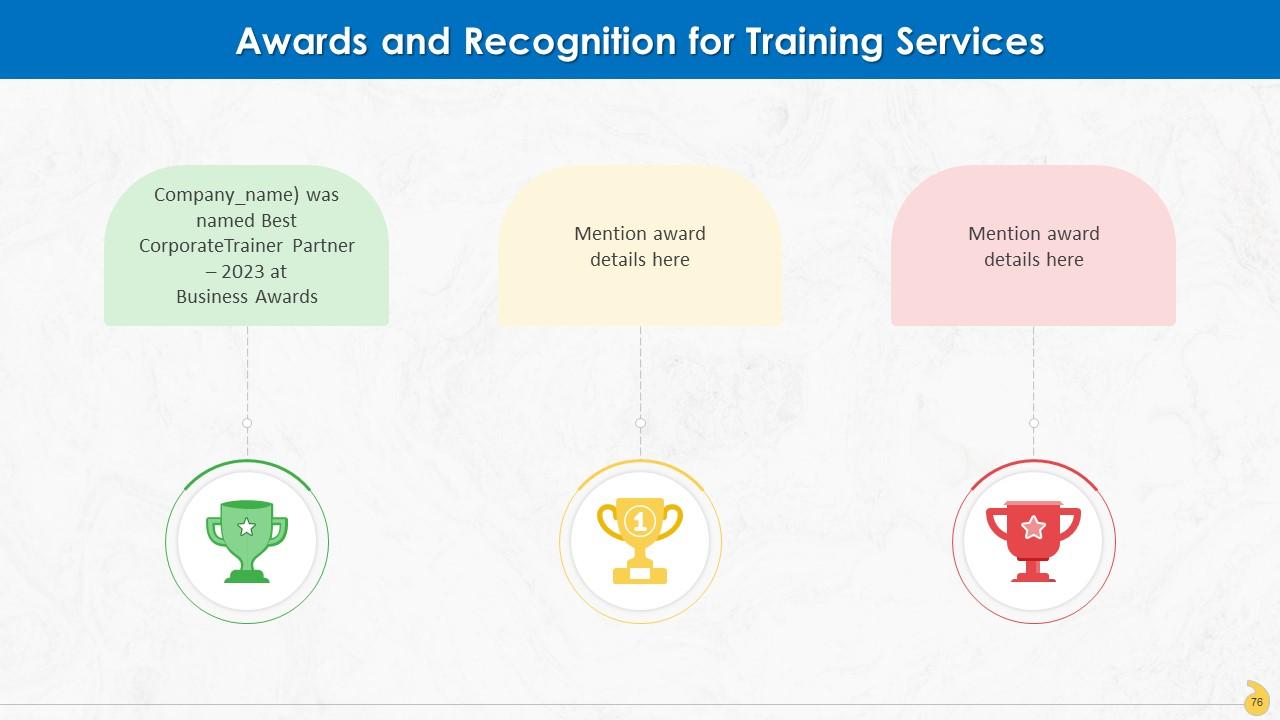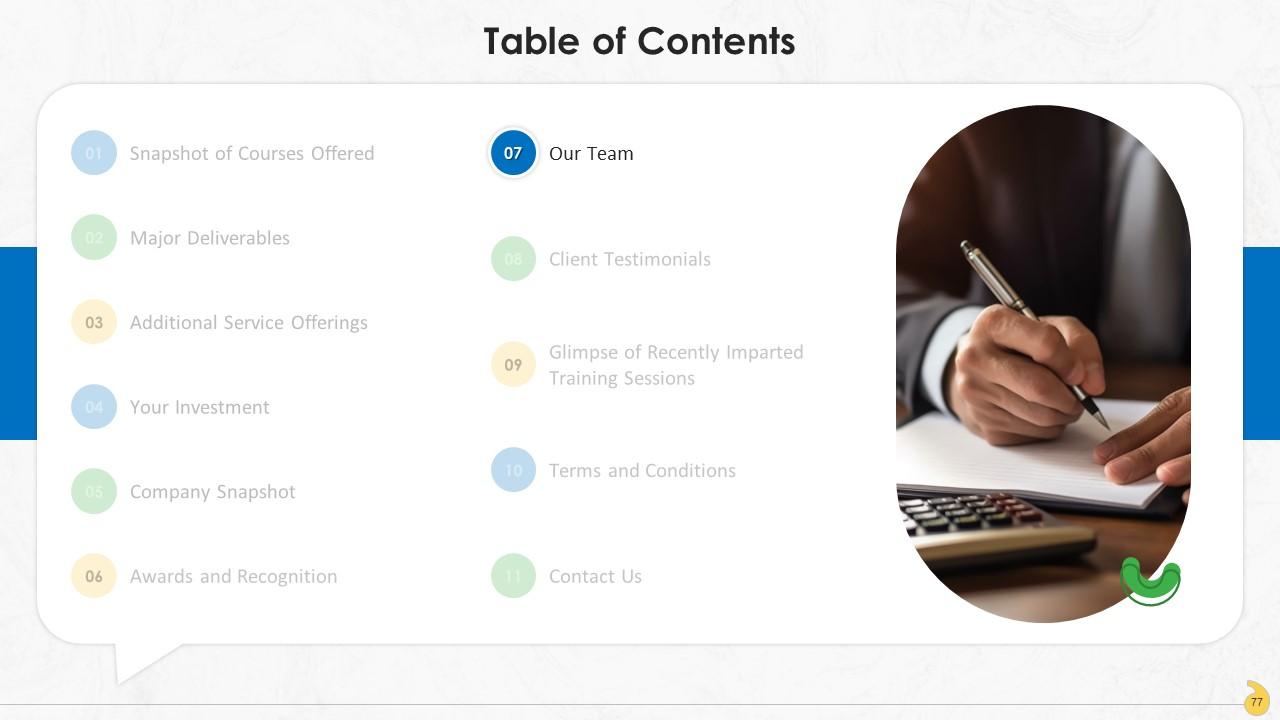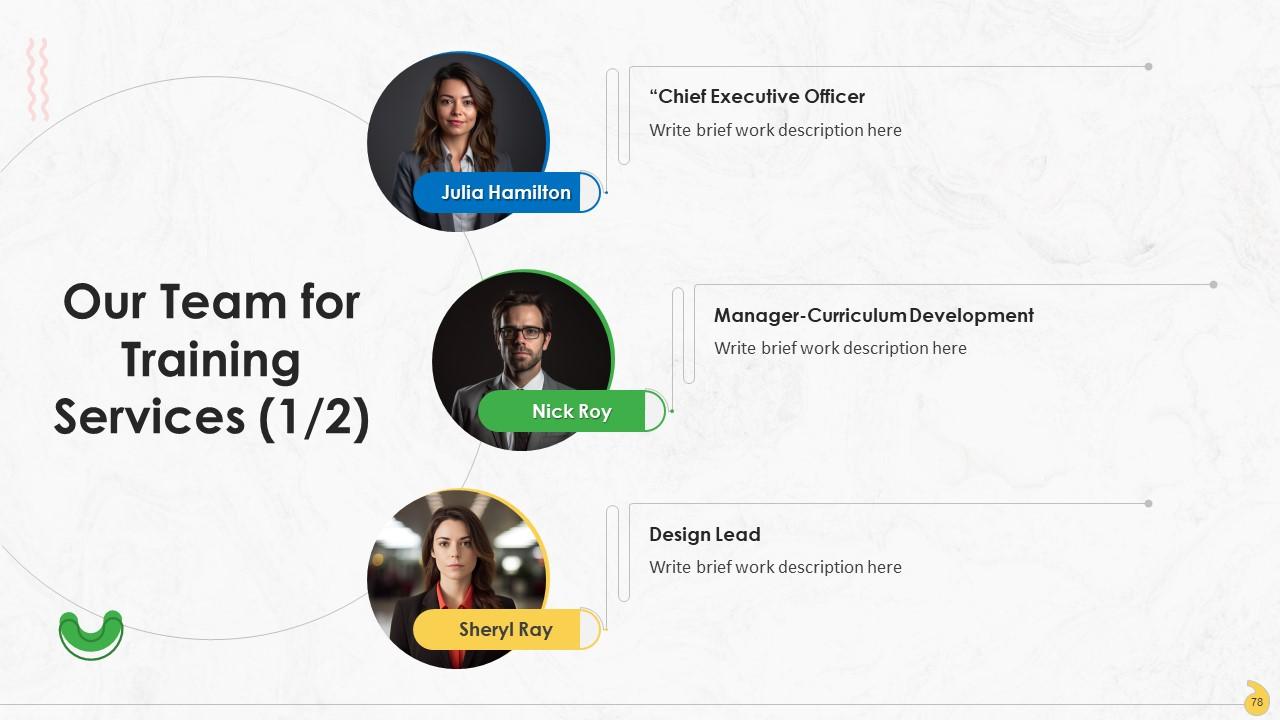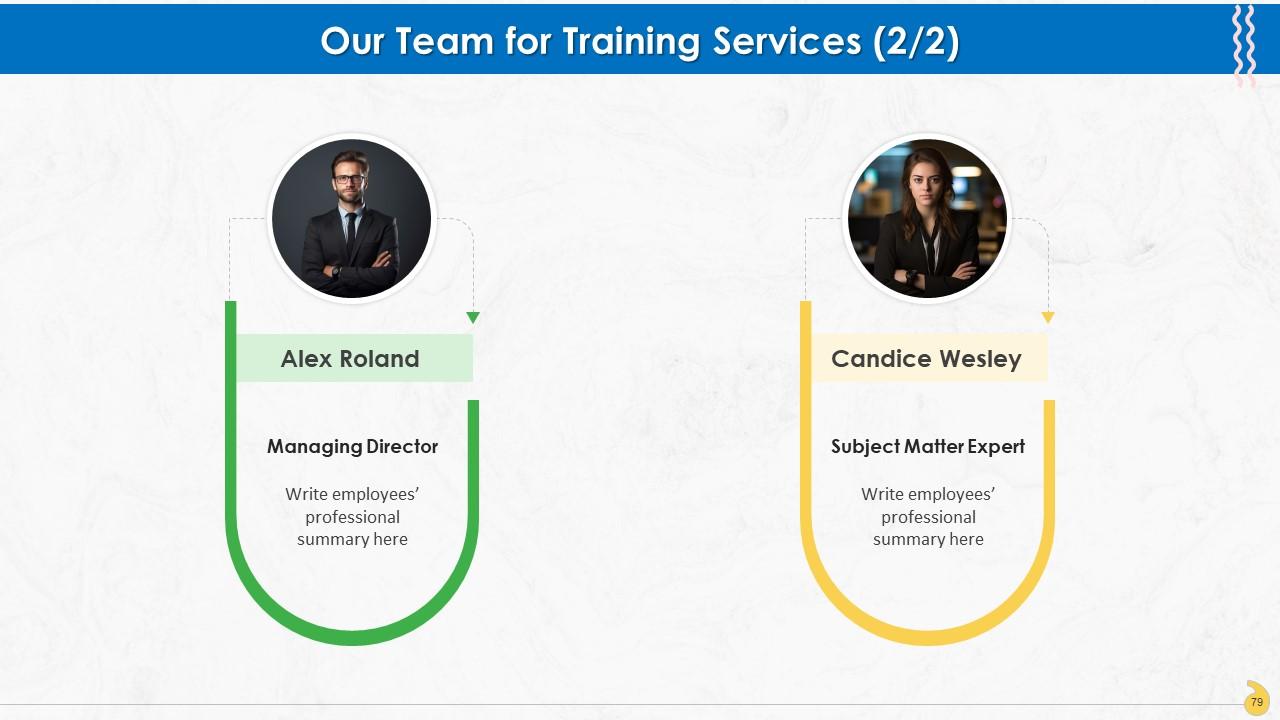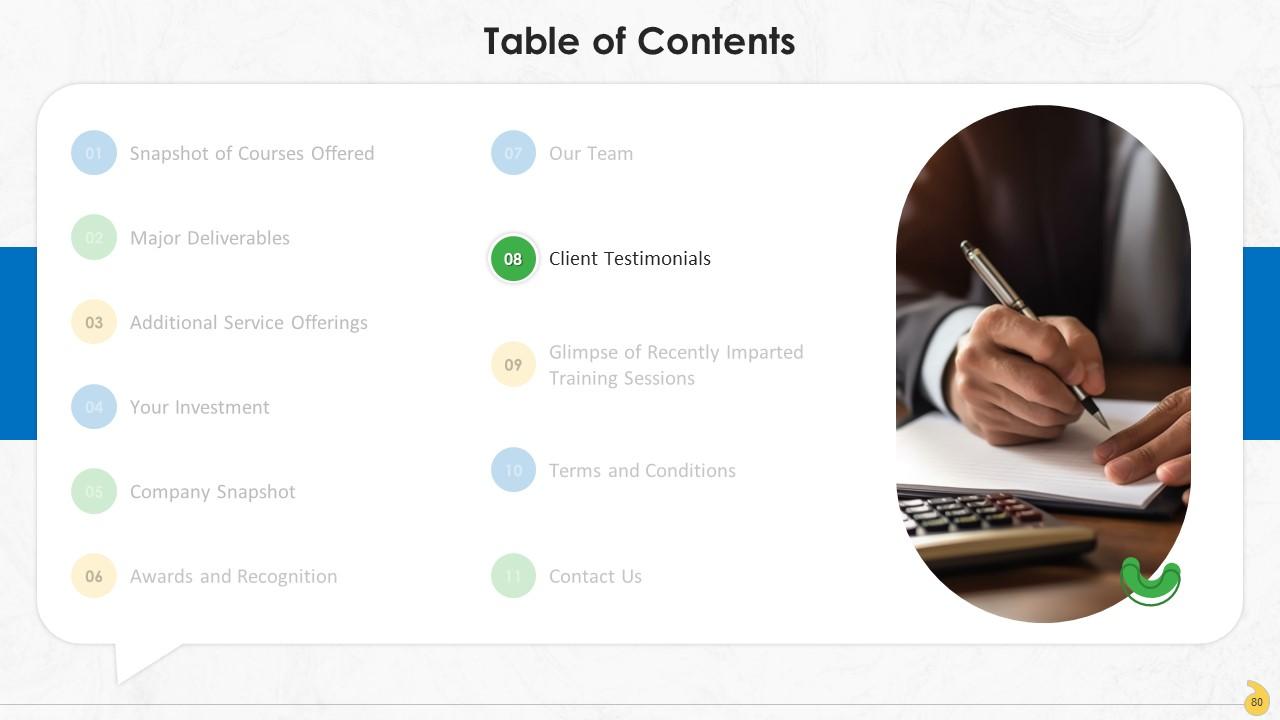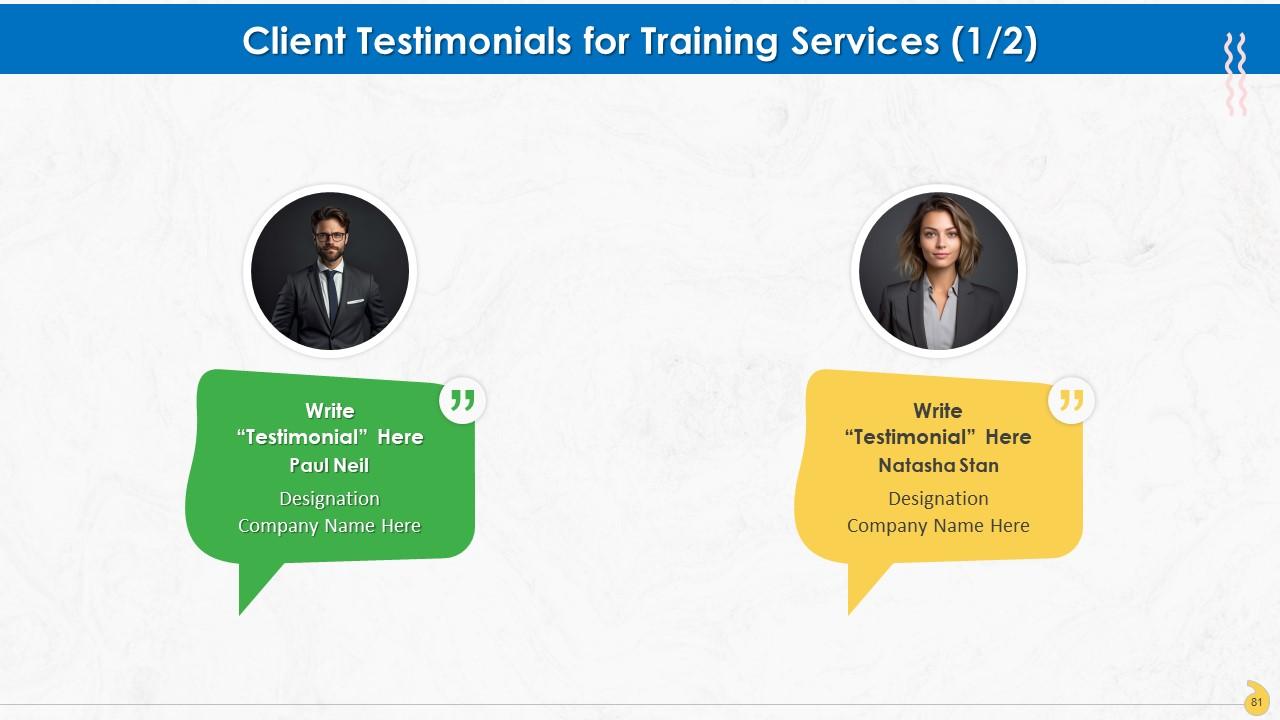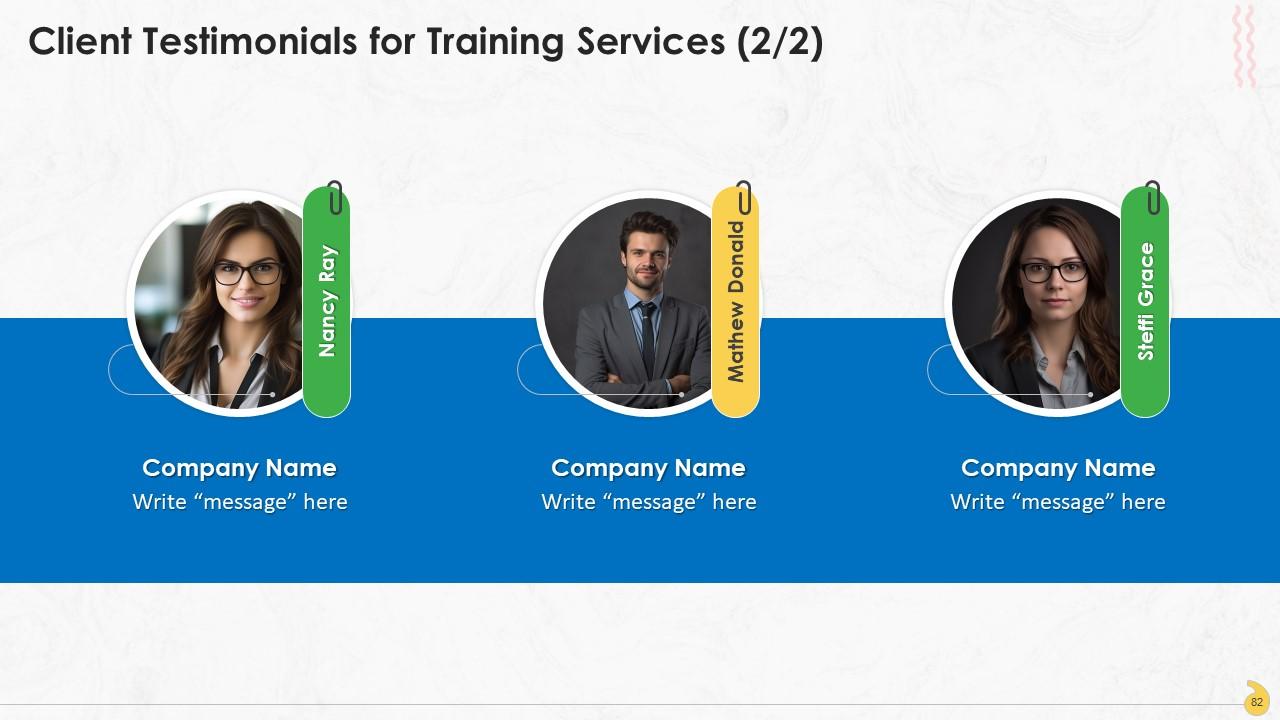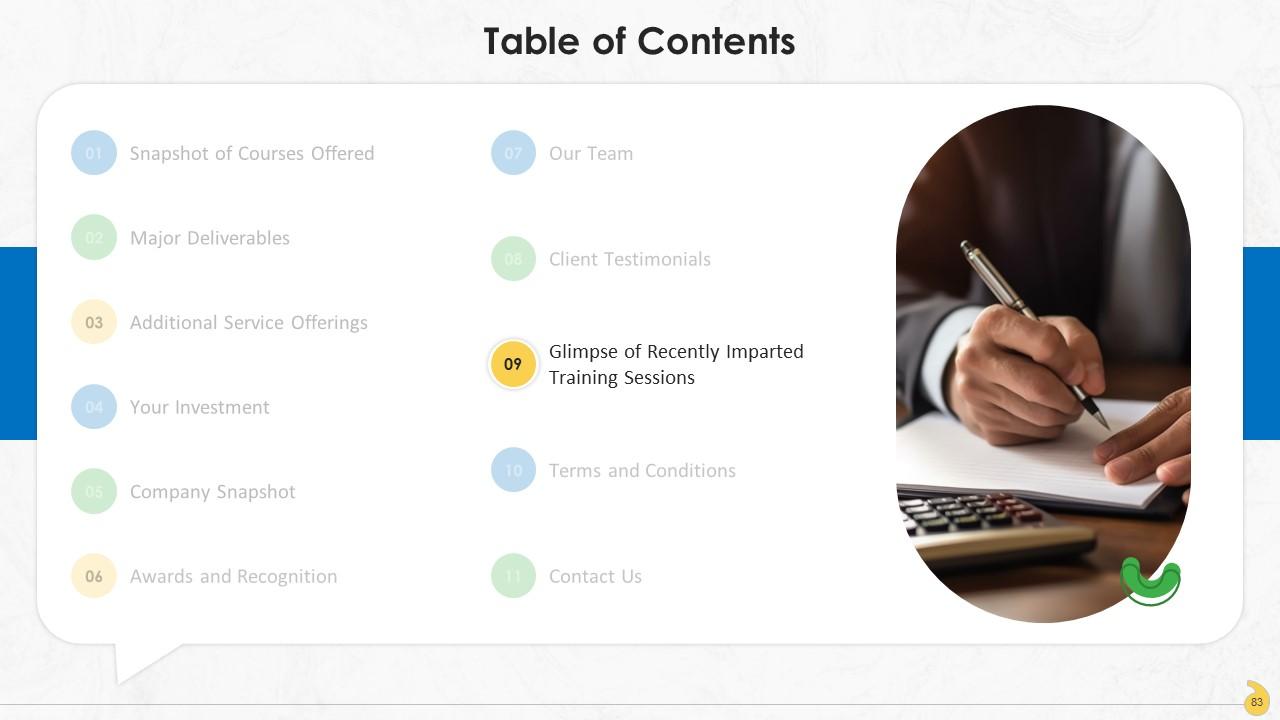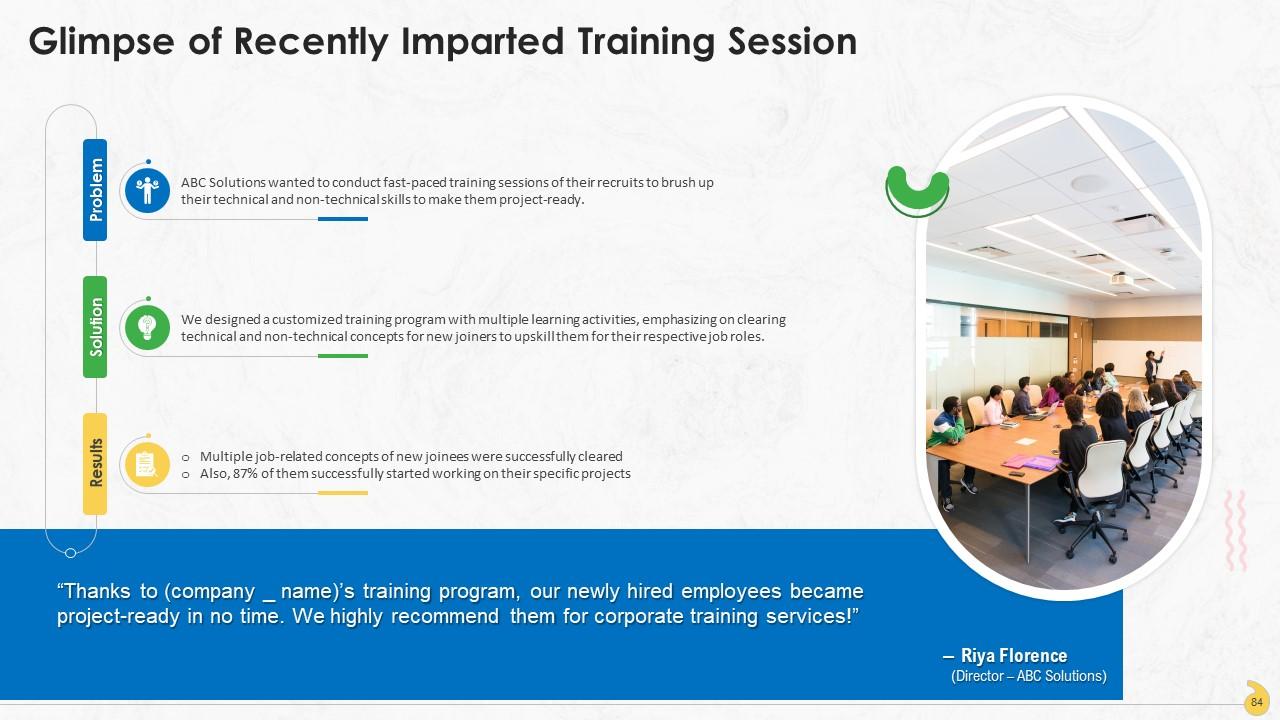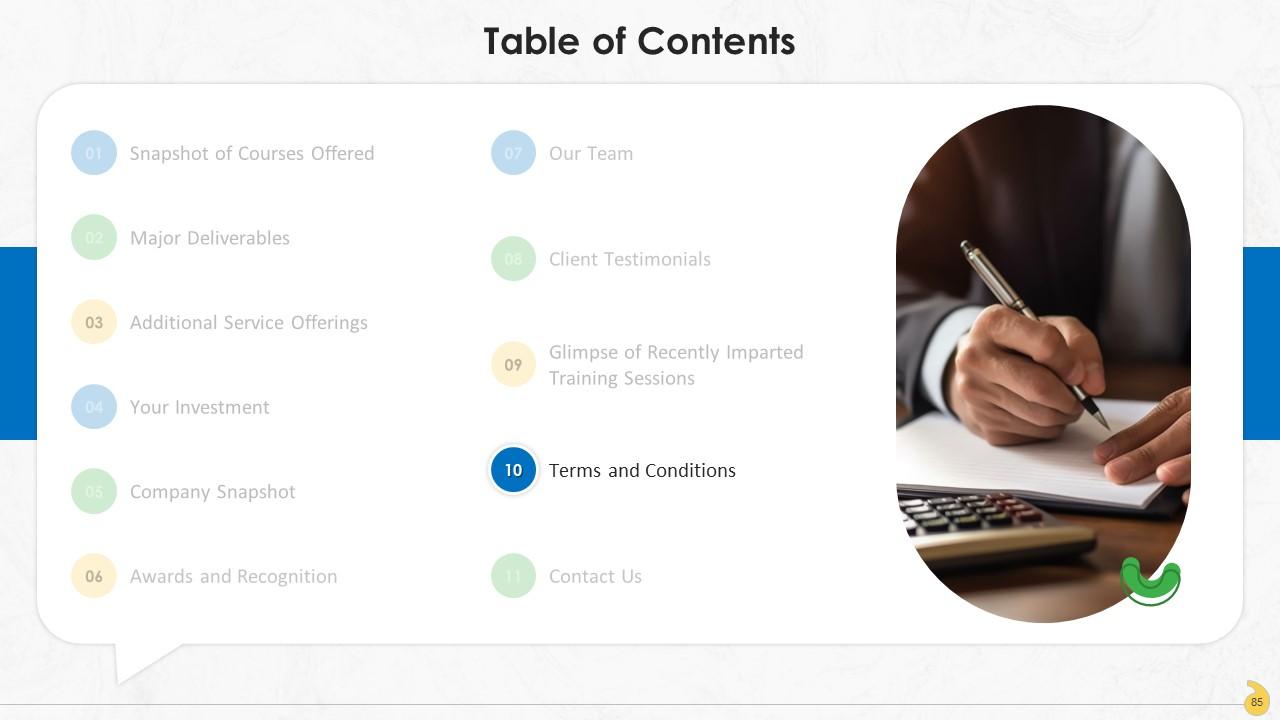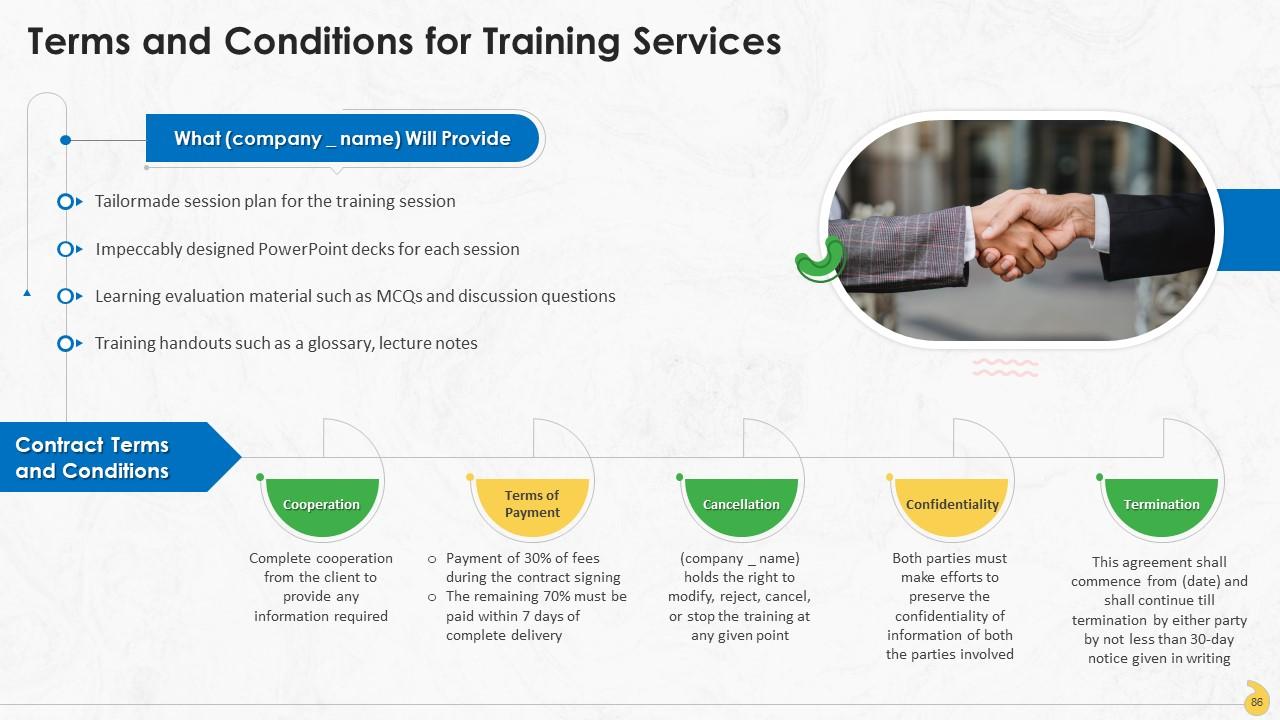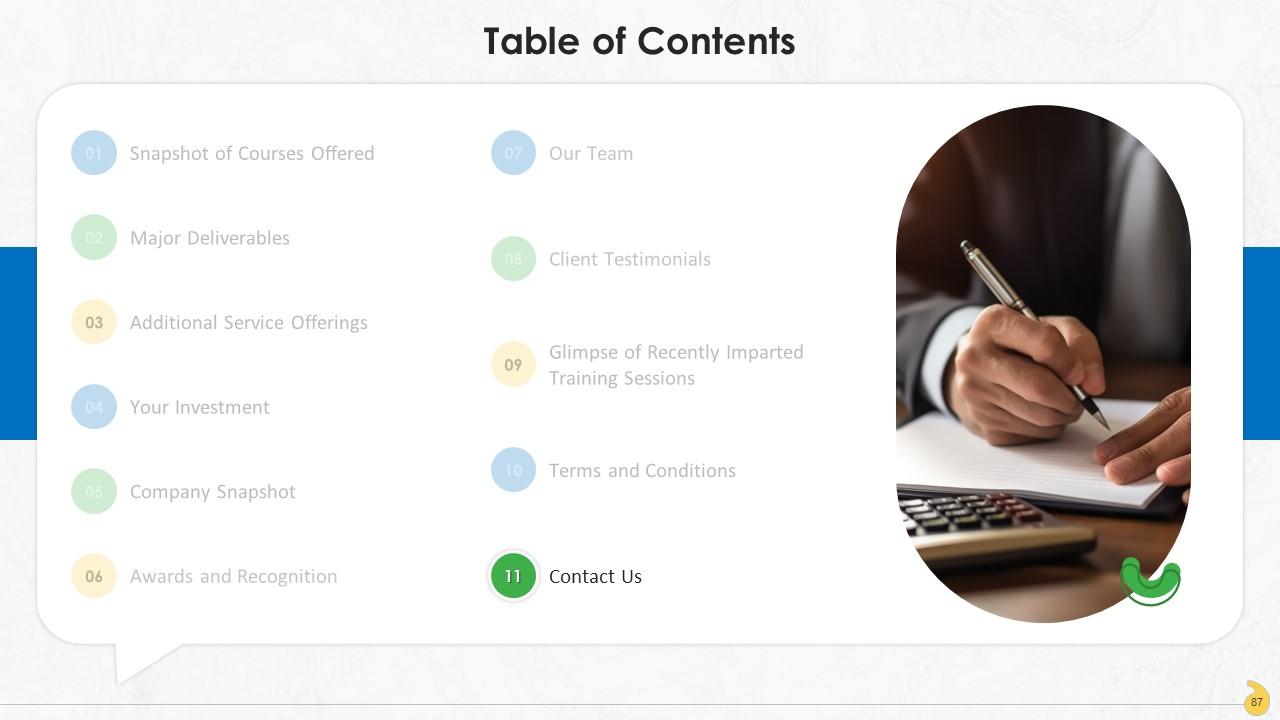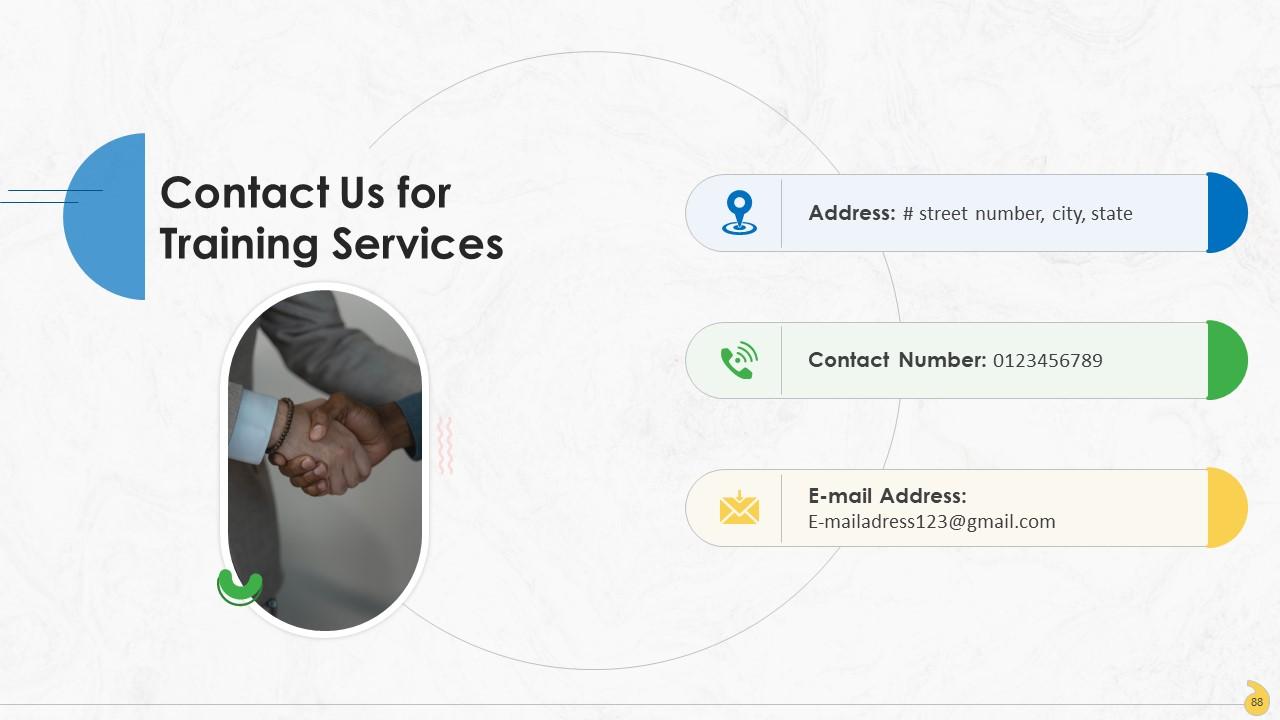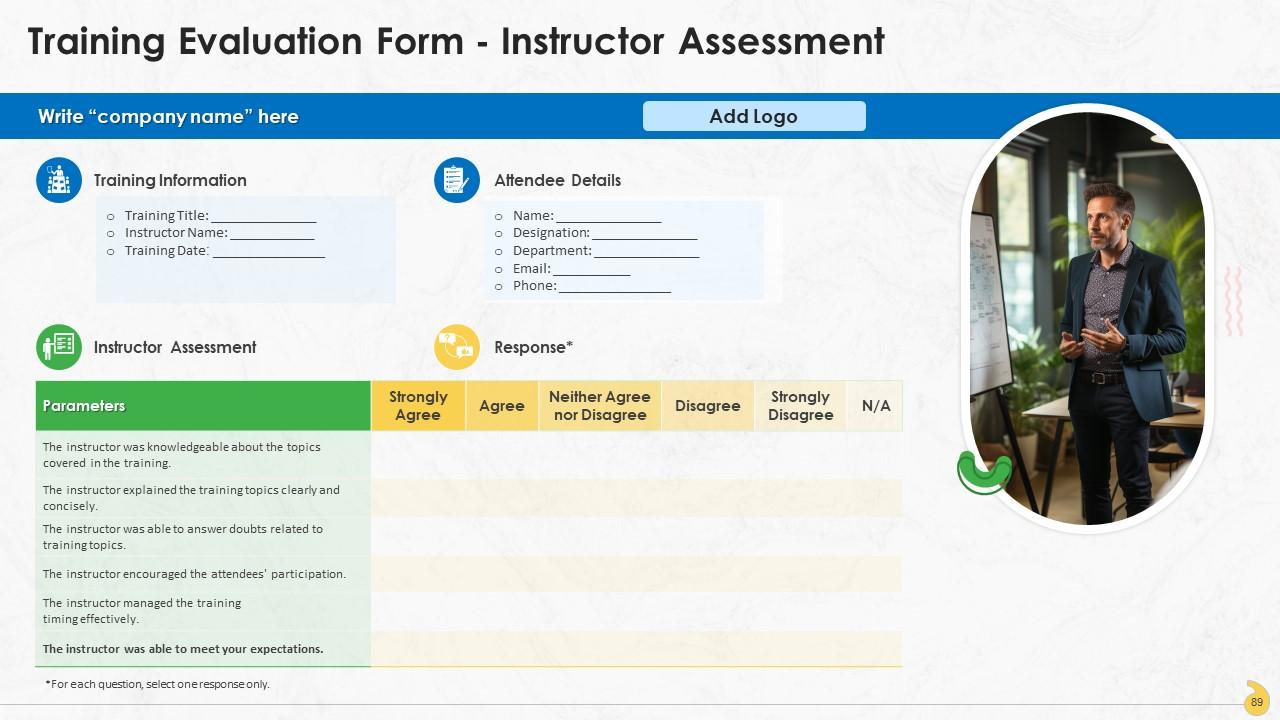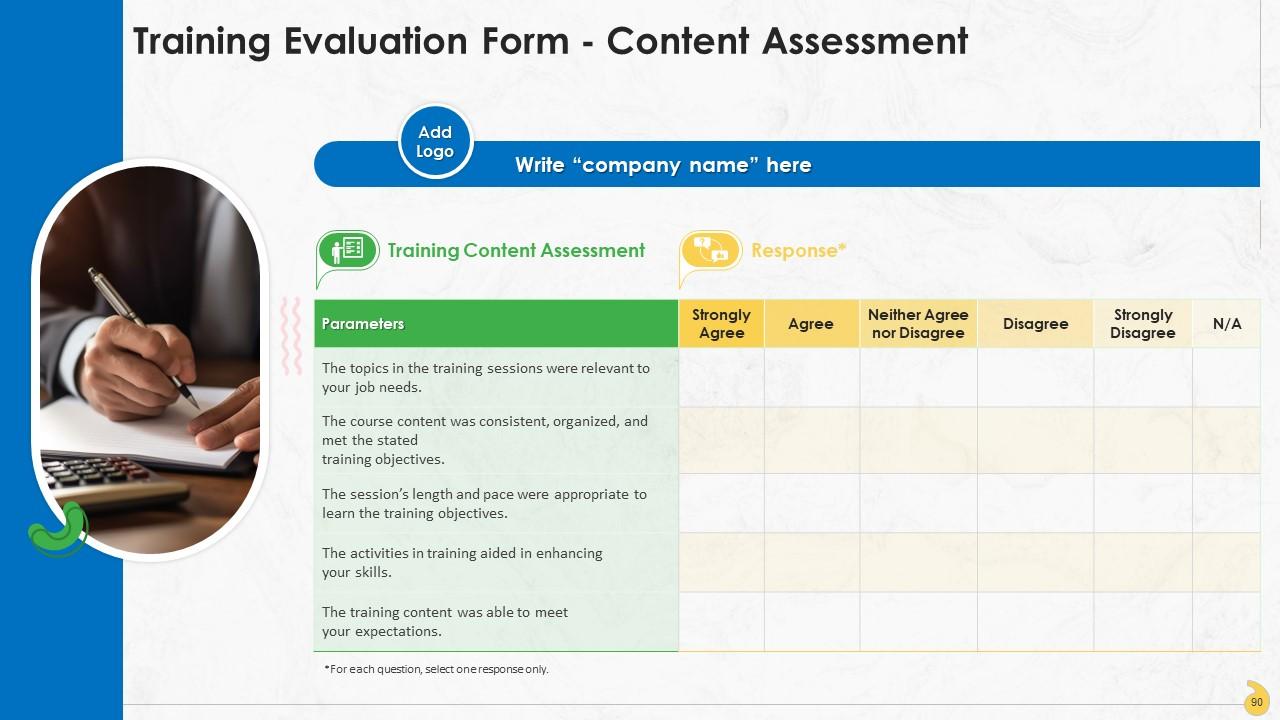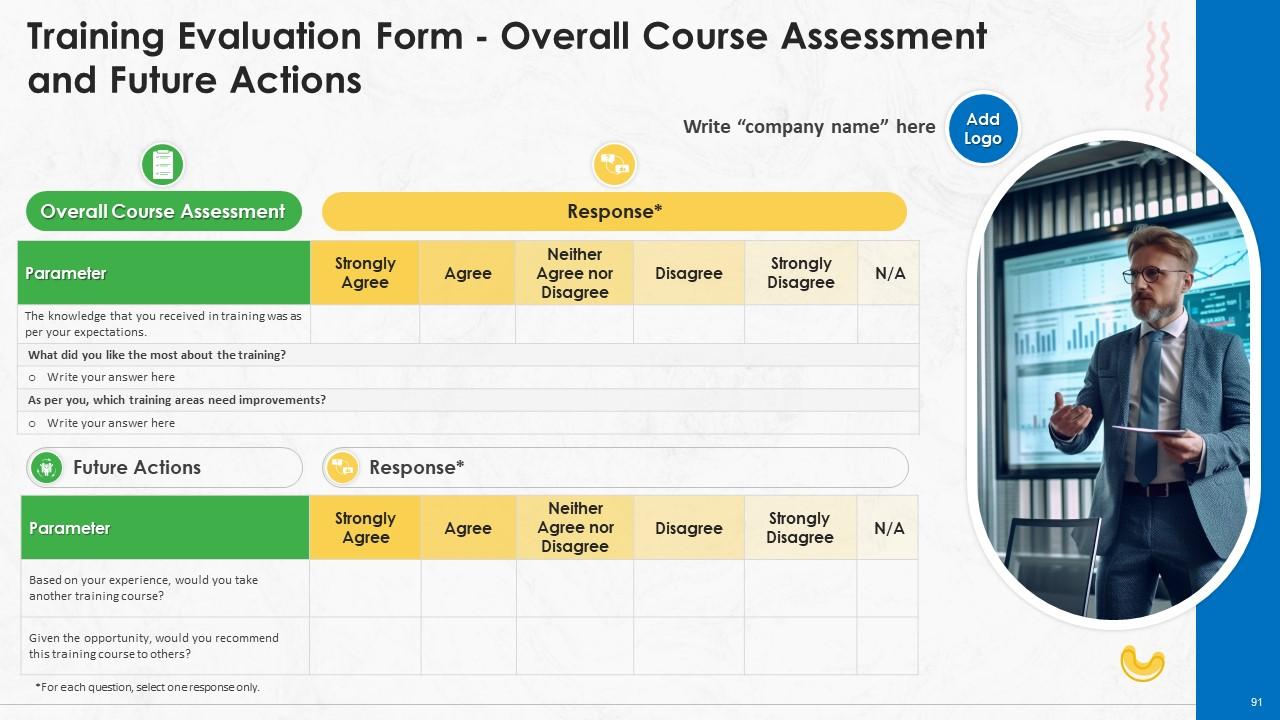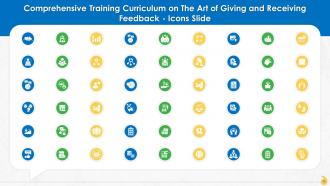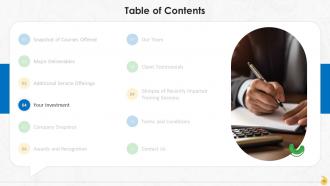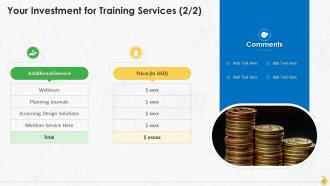Getting Better At Receiving Feedback Training Ppt
The PPT Training Deck on Getting Better at Receiving Feedback, is crucial for employees at all levels seeking to harness the power of constructive criticism to advance their careers, improve performance, and foster better workplace dynamics. It explores the tangible benefits of actively seeking feedback from your manager, discusses feedback models like the Feedback Staircase and the 4R Model for Receiving Feedback , and practical steps to engage with feedback constructively. The PowerPoint Module offers comprehensive guidelines for receiving feedback, such as being approachable, listening actively, controlling defensive reactions, initiating clarifying questions, summarizing key points, and remaining non-judgmental. Navigate the challenges of responding to destructive criticism with grace, understand the critical role of non-verbal cues in feedback exchanges, and adhere to the essential dos and do nots of receiving feedback to maximize your learning and growth. The deck concludes with Key Takeaways and Discussion Questions, designed to engage participants in thoughtful reflection and discussion.
The PPT Training Deck on Getting Better at Receiving Feedback, is crucial for employees at all levels seeking to harness th..
- Google Slides is a new FREE Presentation software from Google.
- All our content is 100% compatible with Google Slides.
- Just download our designs, and upload them to Google Slides and they will work automatically.
- Amaze your audience with SlideTeam and Google Slides.
-
Want Changes to This PPT Slide? Check out our Presentation Design Services
- WideScreen Aspect ratio is becoming a very popular format. When you download this product, the downloaded ZIP will contain this product in both standard and widescreen format.
-

- Some older products that we have may only be in standard format, but they can easily be converted to widescreen.
- To do this, please open the SlideTeam product in Powerpoint, and go to
- Design ( On the top bar) -> Page Setup -> and select "On-screen Show (16:9)” in the drop down for "Slides Sized for".
- The slide or theme will change to widescreen, and all graphics will adjust automatically. You can similarly convert our content to any other desired screen aspect ratio.
Compatible With Google Slides

Get This In WideScreen
You must be logged in to download this presentation.
PowerPoint presentation slides
Presenting Training Deck on Getting Better at Receiving Feedback. This deck comprises of 33 slides. Each slide is well crafted and designed by our PowerPoint experts. This PPT presentation is thoroughly researched by the experts, and every slide consists of appropriate content. All slides are customizable. You can add or delete the content as per your need. Not just this, you can also make the required changes in the charts and graphs. Download this professionally designed business presentation, add your content, and present it with confidence.
People who downloaded this PowerPoint presentation also viewed the following :
Content of this Powerpoint Presentation
Slide 3
This slide provides information that receiving feedback constructively helps employees understand how their supervisor/manager views their work or behavior. It also enables them to derive valuable information from it for performance improvement. Receiving feedback in a proper manner assists in reinforcing existing strengths, keeping goal-directed behavior on track, clarifying employees’ job roles, and in increasing the recipients' abilities to detect errors on their own.
Slide 4
This slide discusses the advantages of asking feedback from the manager. They are: Improve performance in current role, prepare for future roles, prevent a drop in performance, strengthen the working relationship, and reinforce positive habits.
Instructor’s Notes:
Following are the advantages of asking for feedback from the manager:
- Improve Performance in Current Role: The feedback that an employee receives helps improve their performance in their current role, since they can enhance their job specific skill set and seek general work advice
- Prepare for Future Roles: Asking for feedback from the manager indicates that the employee is interested in moving their career ahead by taking up challenging roles. It will lead to the manager taking the initiative and groom employee for such roles
- Prevent a Drop in Performance: The employee is able to check performance from going off-track by regularly receiving feedback from their manager. This way, they are able to redirect their efforts and behavior, if required
- Strengthen the Working Relationship: An employee's relationship with their manager is one of the most important aspects of their professional life that leads to professional success. The employee can build a strong relationship with their manager by supporting them in providing feedback, especially when he/she is short of time
- Reinforce Positive Habits: Managers' feedback allows an employee to reinforce positive and developmental patterns and behavior that are resourceful for the organization and the employees’ personal growth
Slide 5
This slide contains information about improving performance in one’s current roles with the help of manager’s feedback.
Slide 6
This slide highlights how asking for feedback assists an employee prepare for future roles at the organization. It will lead to the manager taking the initiative and grooming employees for such roles.
Slide 7
This slide highlights how asking for feedback from the manager proves advantageous for the employee. It prevents drop in employee’s performance at workplace, since they are able to check their performance from going off-track, and later redirect their efforts and behavior, if required.
Slide 8
This slide showcases how asking for manager’s feedback strengthens an employee’s working relationship with their superior. The employee can build a strong relationship with their manager by supporting them in providing feedback, especially when he/she is short of time.
Slide 9
This slide contains information about an advantage of asking for feedback from the manager. The critical benefit is that this reinforces positive habits at the workplace.
Slide 10
This slide showcases the feedback staircase, which represents the signals that employees exhibit at the workplace while receiving feedback. It also shows the desirable stages, which are of understanding and changing. These not only help the manager, but also facilitate employees’ growth.
Slide 11
This slide represents the 4 R’s framework of receiving feedback at the workplace. The major constituents of model are respond, record, reflect, and react.
Slide 12
This slide contains information about the step-by-step mannerism in which feedback can be sought from the manager. Firstly, ask for their permission, convey the topic of feedback in advance, schedule time for feedback, and make sure to follow through.
Instructor’s Notes:
Following are the steps involved in asking feedback from manager:
- Ask for Permission First: Asking the manager if it's okay to seek feedback from them is the foremost step in starting the process on the right note. Make them clear regarding the specific skill areas you'd like feedback on, and be open to their suggestions regarding development areas
- Convey the Topic of Feedback in Advance: One will get better quality feedback if one informs their manager beforehand about the feedback context. For example, If you want feedback for an upcoming presentation or a project. It also shows good planning and helps the manager
- Schedule Time for the Feedback: Don't expect the manager to come up with feedback at a moment's notice. After asking for feedback, schedule some time with them; it could last for even 15-20 mins. Ask for any clarifications if you need them, and don't feel like justifying your actions
- Make Sure to Follow Through: Receiving feedback should not be a one-off activity, so take action based on the input. Reflect on the results by communicating with the manager and finally thanking them for their support
Slide 13
This slide lists steps to be followed for seeking feedback which are: Ask for as much detail as possible, paraphrase what you've heard, seek suggestions for improvement, and thank the feedback giver.
Slide 14
This slide highlights the first step in receiving feedback effectively. This involves asking for as much detailed information as possible. The feedback recipient should probe the manager by asking questions like, "Why do you think I didn't do this right?“, or "Can you provide me an instance of when I did X?“ in order to extract maximum information from the feedback.
Slide 15
This slide lists questions, which employees can ask their manager, while seeking feedback.
Slide 16
This slide represents the stage of paraphrasing what the feedback recipient has heard from the manager. It is done to match the recipient’s understanding of the feedback with the intention of manager. One should inculcate active listening to avoid missing feedback details and to paraphrase accurately.
Slide 17
This slide contains information about seeking suggestions for future course of action when an employee receives feedback. Feedback should never be a means to dwell on past performance, its purpose is to share information that allows one to plan for future.
Slide 18
This slide contains information about thanking the feedback giver (manager) while receiving feedback. Saying thanks demonstrates professional behavior, sets a positive tone and builds a healthy relationship with the manager.
Slide 19
This slide lists the rules for receiving feedback from the manager at workplace. These are: be approachable, listen to understand, ask for examples, keep things in perspective, control the defensiveness, ask questions for clarification, summarize and reflect on what you heard, and try to be non-judgmental.
Slide 20
This slide represents the dos and don'ts that make an employee approachable or unapproachable for the manager, while delivering feedback. Employees' openness to feedback becomes evident through their body language, facial expressions, and welcoming attitude.
Slide 21
This slide contains information about a rule for receiving feedback effectively that is to focus on what the manager sees/thinks/hears/assumes rather than what the feedback recipient intended. Even if the employee feels that the manager has turned the situation around and is completely wrong, they should first hear the manager, and later present their personal views.
Slide 22
This slide highlights the importance of asking for examples to effectively receive feedback from the manager. The employee should seek examples from the manager regarding their feedback so that both of them are on the same page.
Slide 23
This slide contains information about keeping things in perspective as a necessity for receiving feedback in the right spirit. The employee has to keep in mind that the manager providing feedback is sharing their perspective or view based on how they see things or how they would have done them differently, and then work upon the pointers in the feedback.
Slide 24
This slide contains information about controlling one’s defensive attitude to receive feedback at the workplace as the feedback giver won't be able to express freely, if they fear hurting the recipient or have to deal with a defensive attitude.
Slide 25
This slide showcases a rule for receiving feedback from the manager, which is to ask clarifying questions related to the feedback when the employee is unclear about its meaning and needs a deeper understanding from it.
Slide 26
This slide contains information about summarizing and reflecting upon what all you have heard from the manager related to the feedback. The manager will appreciate it if you, as an employee, try to hear and understand their point of view while receiving feedback. Additionally, try to validate what you are hearing with the help of verbal and non-verbal cues.
Slide 27
This slide contains information about being judgmental while receiving feedback. Without knowing the problem that needs to be fixed, an employee can spend lots of time and energy on activities that may not yield positive outcomes.
Slide 28
This slide represents techniques to respond to destructive criticism that managers may sometimes provide. The employee should: Empathize with the feedback giver, be direct and address the issue, watch for unconscious defense mechanisms, pep-talk yourself, brush off the harsh words, and take time to sort out things.
Instructor’s Notes:
Techniques to react to destructive criticism are:
- Empathize with the Feedback Giver: Feedback giver tends to criticize harshly because of stresses in their own life. For employees, the best way to respond is with empathy. Eliminate distractions when talking to the manager and pay attention to what they are saying. During the conversation, encourage them to share more with you regarding the feedback
- Be Direct and Address the Issue: It may become necessary to have a conversation with the manager if you, as an employee, face problems with them on a regular basis. Such conversations can be challenging and uncomfortable. However, identify the issue and address it with them by being direct and asking for their advice and opinions
- Watch for Unconscious Defense Mechanisms: One's repressed memories and unfulfilled desires form a part of their psychological makeup, i.e., identity and insecurities. While receiving feedback, one tends to justify their actions or prove the feedback giver wrong based on those. It is critical to listen to feedback intently, without planning a reply in the subconscious mind
- Pep-talk Yourself: Replace the manager’s destructive comments with some positivity. As an employee, give yourself a pep-talk by reminding yourself of your workplace accomplishments, obstacles you have overcome, and your personal growth. But, also make sure to understand the manager's concerns with you
- Brush Off the Harsh Words: Negativity affects a person when they receive destructive comments, so try to brush off comments, which you think affects your inner peace. Don’t lose your calm and try to segregate baseless criticism from the manager's feedback
- Take Time to Sort Things: It's wise to ask for time to sort out things that need fixing, if your attempts prove futile. Such a practice prevents the situation from getting worse and out of control, thus avoiding shame, guilt, blame, or regret. It restores calm in the present situation and signals respect for the feedback giver and the recipient of feedback
Slide 29
This slide represents the function of non-verbal cues while receiving feedback from the manager which are facial expression, eye contact, and tone of voice.
Slide 30
This slide represents the function of non-verbal cues while receiving feedback from the manager which are posture and attention.
Slide 31
This slide lists the dos and don'ts to be followed by the employee while receiving feedback from the manager.
Slide 32
This slide represents important pointers from the session: Getting better at receiving feedback. The trainer can to emphasize these vital learnings from the session.
Slide 45 to 60
These slides contain energizer activities to engage the audience of the training session.
Slide 61 to 88
These slides contain a training proposal covering what the company providing corporate training can accomplish for the client.
Slide 89 to 91
These slides include a training evaluation form for instructor, content and course assessment.
Getting Better At Receiving Feedback Training Ppt with all 100 slides:
Use our Getting Better At Receiving Feedback Training Ppt to effectively help you save your valuable time. They are readymade to fit into any presentation structure.
-
The PPTs are extremely simple to modify. Thank you for providing the slides that are ready to be used. They assist me in saving a lot of time.
-
Well-designed and informative templates. Absolutely brilliant!



